A Review of Research on Precision Rotary Motion Systems and Driving Methods
Abstract
1. Introduction
2. The Development of Typical Rotating Motion Mechanisms
2.1. Gear Drive
2.1.1. Traditional Metal Gears
- Spur gear
- 2.
- Helical gear
- 3.
- Conical gear
- 4.
- Hyperbolic gear
- 5.
- Noncircular gear
- 6.
- Double cycloidal gear
2.1.2. New Gears Based on 3D Printing Technology
- Spherical gear
- 2.
- Linear gear
- 3.
- Nonrelative sliding gear
2.1.3. Magnetic Gear
2.2. Belt Drive
2.2.1. V-Belt
2.2.2. Synchronous Belt
2.3. Chain Drive
2.3.1. Single-Row Chain Drive
- Single-row chain drive
- 2.
- Multi-row chain drive
- 3.
- Silent chain drive
- 4.
- Bidirectional chain drive
2.3.2. Composite Material Chain Drive
2.3.3. Polymer Material Chain Links Based on 3D Printing
2.4. Cam Mechanism
2.4.1. Cam Roller
2.4.2. Conjugate Cam
2.4.3. Cylindrical Cam
2.4.4. 3D-Printed Cam Formed by Melt Deposition
2.5. Ratchet and Pawl Mechanism
2.5.1. Flexible Ratchet and Pawl Mechanism
2.5.2. Ratchet and Pawl Mechanism for High Speed Transmission
2.5.3. New Ratchet Mechanism for Multi-Material Additive Manufacturing Technology
2.6. Linkage Mechanism
2.6.1. Four-Bar Linkage
- Crank-rocker mechanism
- 2.
- Hyperbolic handle mechanism
- 3.
- Elastic inside link
2.6.2. Double Spherical Linkage Mechanism
3. Novel Rotating Motion Mechanism
3.1. Intermittent Indexing Mechanism
3.1.1. Coaxial Indexing Mechanism
3.1.2. New Geneva Mechanisms
3.2. Linear Motion to a Rotational Motion Mechanism
3.2.1. Ball Screw
- Planetary ball screw
- 2.
- Nut-driven static pressure screw
3.2.2. EHSA Based on the Slider Crank Mechanism and Ratchet Pawl Mechanism
3.2.3. A New Type of Reverse-Pole Magnetic Suspension System
3.2.4. Series Coupling Rack Mechanism
3.2.5. Screw Gear Ratchet Combination Mechanism
3.3. Joint Transmission Mechanism
3.3.1. Twisted Polymer-Driven Series-Parallel Hybrid Finger Mechanism
3.3.2. New Type of 2-DOF Ball Joint Hydraulic Spherical Motion Mechanism
3.3.3. Hook Joint in Stewart Platform
3.3.4. Three Degrees of Freedom Tensioned Integral Structure
3.3.5. New Offset Slider Crank, Crank, and Connecting Rod Combination Hybrid Mechanism
3.3.6. A New RCM Mechanism
3.3.7. Noncircular Gear Five-Bar Mechanism
3.4. Multi-Link Rotating Mechanism
3.4.1. Double Four-Bar Rotary Transmission Mechanism
3.4.2. Cam Five-Link Mechanism
3.4.3. Multi-Link Crank Slider Rotating Mechanism
3.5. Planetary Rotary Transmission Mechanism
3.5.1. Cam Connecting Rod and Planetary Gear Combination Mechanism
3.5.2. A New Propeller System Based on Planetary Gears and Crank Rocker Mechanism
3.5.3. Cycloid Reducer
- Universal RV reducer
- 2.
- New two-stage cycloidal reducer
- 3.
- New single-stage precision cycloidal pinwheel reducer
3.6. Rotary Actuator
3.6.1. A Novel Nonlinear Series Elastic Actuator Based on Conjugate Cylindrical Cam (N3CSEA)
3.6.2. Bistable Rotating Mechanism
3.6.3. Twisted-Spring Connected Nonlinear Stiffness Actuator
3.6.4. Compact and Reconfigurable Disc Spring Variable Stiffness Actuator
3.6.5. Rotary Piezoelectric Stick-Slip Actuators
3.7. Universal Joints Drive
3.7.1. Steel Flexible Universal Joint
3.7.2. New Type of Anti-Buckling Flexible Universal Joint
3.7.3. New Type of Fully Compliant Universal Joint
4. Common Driving Methods for Rotating Motion Mechanisms
4.1. Electric Drive
4.1.1. Motor Drive
- Superconducting rotating motor
- 2.
- Spherical motor
- 3.
- Coreless Motor
4.1.2. Piezoelectric Drive
4.2. Hydraulic Drive
Electro-Hydraulic Servo Drive
4.3. Pneumatic Drive
4.3.1. Multi-Mode Pneumatic Motor
4.3.2. Pneumatic Artificial Muscles
4.4. The Influence of Different Driving Modes on Rotating Motion Mechanisms—Taking Cam Mechanisms as an Example
5. Conclusions and Future Research Direction
5.1. Conclusions
5.2. Future Research Direction
- (1)
- Develop high-strength composite materials such as carbon nanotube-reinforced TPU and self-healing coatings such as ceramic-based gradient coatings, combined with laser melting additive manufacturing to achieve a lightweight and fatigue-resistant design of key components such as gears and cams. Regarding the tooth surface wear of planetary cycloidal reducers, super-lubricating coating technology can be explored. Breakthroughs are needed in room-temperature superconducting materials or magnetocaloric cooling technology to address the bottleneck of superconducting cooling for magnetic gears.
- (2)
- Embedding fibre optic or piezoelectric sensors in the mechanism to monitor real-time tooth contact stress and bearing temperature rise, and predicting wear trends through deep learning algorithms to achieve adaptive adjustment of the lubrication system. For piezoelectric ultrasonic motors, it is necessary to develop resonance frequency self-tracking technology to suppress efficiency degradation caused by load disturbances.
- (3)
- Combining magnetic levitation non-contact transmission with piezoelectric energy recovery to construct a low friction, high-efficiency composite drive system. For example, in a wave energy converter, a magnetic guide screw is used to efficiently convert linear motion into rotational kinetic energy, while vibration energy is recovered through piezoelectric materials.
- (4)
- Inspired by biological joints, design a flexible multilink mechanism that utilises the phase transition characteristics of shape memory alloys to achieve variable stiffness adjustment. Promote the standardisation of modular driving units and support rapid reconstruction and fault redundancy of robot joints.
- (5)
- A multi-scale dynamic model of the mechanism is constructed using artificial intelligence and topology optimisation algorithms. The impact of assembly errors on motion accuracy is quantified through digital twin technology, and design parameters are iteratively optimised by combining actual working condition data.
Author Contributions
Funding
Institutional Review Board Statement
Informed Consent Statement
Data Availability Statement
Conflicts of Interest
References
- Huang, K.L.; Yang, Y.X.; Liu, Y.; Zhong, Y.P. Haitao Ren Study on rock breaking mechanism of PDC bit with rotating module. J. Pet. Sci. Eng. 2020, 192, 107312. [Google Scholar] [CrossRef]
- Zhu, Y.; Li, G.P.; Tang, S.N.; Wang, R.; Su, H.; Wang, C. Acoustic signal-based fault detection of hydraulic piston pump using a particle swarm optimization enhancement CNN. Appl. Acoust. 2022, 192, 108718. [Google Scholar] [CrossRef]
- Chao, Q.; Zhang, J.; Xu, B.; Wang, Q.N.; Lyu, F.; Li, K. Integrated slipper retainer mechanism to eliminate slipper wear in high-speed axial piston pumps. Front. Mech. Eng. 2022, 17, 1. [Google Scholar] [CrossRef]
- Myszka, D.H.; Joo, J.J.; Murray, A.P. A Multi-Objective Mechanism Optimization for Controlling an Aircraft Using a Bio-Inspired Rotating Empennage. J. Mech. Robot. 2022, 14, 045003. [Google Scholar] [CrossRef]
- Jia, X.Y.; Zhang, X. Numerical Study on Local Entropy Production Mechanism of a Contra-Rotating Fan. Entropy 2023, 25, 1293. [Google Scholar] [CrossRef]
- Satake, Y.; Takanishi, A.; Ishii, H. Novel growing robot with inflatable structure and heat-welding rotation mechanism. IEEE/ASME Trans. Mechatron. 2020, 25, 1869–1877. [Google Scholar] [CrossRef]
- Bortnowski, P.; Gładysiewicz, A.; Gładysiewicz, L.; Król, R.; Ozdoba, M. Conveyor Intermediate TT Drive with Power Transmission at the Return Belt. Energies 2022, 15, 6062. [Google Scholar] [CrossRef]
- Kumaran, V.U.; Weiss, L.; Zogg, M.; Wegener, K. Analytical flat belt drive model considering bilinear elastic behaviour with residual strains. Mech. Mach. Theory 2023, 190, 105466. [Google Scholar] [CrossRef]
- Ren, F.C.; Liang, X.; Jiang, T. Performance analysis of escalator drive chain plate used for 5 years. In Proceedings of the 2020 5th International Conference on Mechanical, Control and Computer Engineering (ICMCCE), Harbin, China, 25–27 December 2020; IEEE: Piscataway, NJ, USA, 2020; pp. 788–791. [Google Scholar]
- Jiang, S.; Huang, S.; Zeng, Q.; Chen, S.J.; Lv, J.W.; Zhang, Y.Q.; Qu, W. Dynamic characteristics of the chain drive system under multiple working conditions. Machines 2023, 11, 819. [Google Scholar] [CrossRef]
- Li, L.Q.; Zhang, D.; Tian, C.X. A family of generalized single-loop RCM parallel mechanisms: Structure synthesis, kinematic model, and case study. Mech. Mach. Theory 2024, 195. [Google Scholar] [CrossRef]
- Xu, B.; Yang, Y.; Yan, Y.; Zhang, B. Bionics design and dynamics analysis of space webs based on spider predation. Acta Astronaut. 2019, 159, 294–307. [Google Scholar] [CrossRef]
- Xu, B.; Yang, Y.; Zhang, B.; Yan, Y.; Yi, Z.Y. Bionic design and experimental study for the space flexible webs capture system. IEEE Access 2020, 8, 45411–45420. [Google Scholar] [CrossRef]
- Wang, G.; Liu, K.; Ma, X.; Chen, X.; Hu, S.H.; Tang, Q.Y.; Liu, Z.J.; Ding, M.X.; Han, S.J. Optimal design and implementation of an amphibious bionic legged robot. Ocean Eng. 2023, 272, 113823. [Google Scholar] [CrossRef]
- Zhu, Y.G.; Li, R.Y.; Song, Z.P. Bionic muscle control with adaptive stiffness for bionic parallel mechanism. J. Bionic Eng. 2023, 20, 598–611. [Google Scholar] [CrossRef]
- Wang, Z.; Ge, W.J.; Zhang, Y.H.; Liu, B.; Liu, B.; Jin, S.K.; Li, Y.Z. Optimization Design and Performance Analysis of a Bionic Knee Joint Based on the Geared Five-Bar Mechanism. Bioengineering 2023, 10, 582. [Google Scholar] [CrossRef]
- Tang, S.N.; Zhu, Y.; Yuan, S.Q. Bionics-Inspired Structure Boosts Drag and Noise Reduction of Rotating Machinery. J. Bionic Eng. 2023, 20, 2797–2813. [Google Scholar] [CrossRef]
- Aalders, J.W.G.; Wildeman, K.J.; Ploeger, G.R.; van der Meij, Z.N. New developments with the cryogenic grating drive mechanisms for the ISO spectrometers. Cryogenics 1989, 29, 550–552. [Google Scholar] [CrossRef]
- Guo, P.; Noji, H.; Yengo, C.M.; Zhao, Z.Y.; Grainge, I. Biological nanomotors with a revolution, linear, or rotation motion mechanism. Microbiol. Mol. Biol. Rev. 2016, 80, 161–186. [Google Scholar] [CrossRef]
- Watanabe, M.; Tadakuma, K.; Konyo, M.; Tadokoro, S. Bundled rotary helix drive mechanism capable of smooth peristaltic movement. IEEE Robot. Autom. Lett. 2020, 5, 5537–5544. [Google Scholar] [CrossRef]
- An, D.W.; Huang, W.Q.; Liu, W.Q.; Xiao, J.R.; Liu, X.C.; Liang, Z.W. Meshing drive mechanism of double traveling waves for rotary piezoelectric motors. Mathematics 2021, 9, 445. [Google Scholar] [CrossRef]
- Koc, B.; Kist, S.; Hamada, A. Wireless Piezoelectric Motor Drive. Actuators 2023, 12, 136. [Google Scholar] [CrossRef]
- Wang, B.Y.; Liang, Y.; Xu, D.Z.; Wang, Z.H.; Ji, J. Design on electrohydraulic servo driving system with walking assisting control for lower limb exoskeleton robot. Int. J. Adv. Robot. Syst. 2021, 18, 1729881421992286. [Google Scholar] [CrossRef]
- Milecki, A.; Jakubowski, A.; Kubacki, A. Design and Control of a Linear Rotary Electro-Hydraulic Servo Drive Unit. Appl. Sci. 2023, 13, 8598. [Google Scholar] [CrossRef]
- Habermehl, C.; Jacobs, G.; Neumann, S. A modeling method for gear transmission efficiency in transient operating conditions. Mech. Mach. Theory 2020, 153, 103996. [Google Scholar] [CrossRef]
- Karpov, O.; Nosko, P.; Fil, P.; Nosko, O.; Olofsson, U. Prevention of resonance oscillations in gear mechanisms using non-circular gears. Mech. Mach. Theory 2017, 114, 1–10. [Google Scholar] [CrossRef]
- Ristivojević, M.; Lučanin, V.; Dimić, A.; Mišković, Z.; Burzić, A.; Stamenić, Z.; Rackov, M. Investigation of the heavy duty truck gear drive failure. Eng. Fail. Anal. 2023, 144, 106995. [Google Scholar] [CrossRef]
- Baidu. Available online: https://baike.baidu.com/item/%E9%BD%BF%E8%BD%AE%E6%9C%BA%E6%9E%84/10448252?fr=ge_ala (accessed on 5 December 2024).
- Chen, Z.Y.; Guo, Z.H.; Fang, B.; Gao, L.Y.; Su, G.S.; Liu, B.Q. Simulation study of the punching forming process and die wear of spur gears. Int. J. Adv. Manuf. Technol. 2024, 131, 4635–4648. [Google Scholar] [CrossRef]
- Pedrero, J.I.; Sánchez, M.B.; Pleguezuelos, M. Analytical model of meshing stiffness, load sharing, and transmission error for internal spur gears with profile modification. Mech. Mach. Theory 2024, 197, 105650. [Google Scholar] [CrossRef]
- Yang, X.; Lei, Y.G.; Liu, H.; Yang, B.; Li, X.; Li, N.P. Rigid-flexible coupled modeling of compound multistage gear system considering flexibility of shaft and gear elastic deformation. Mech. Syst. Signal Process. 2023, 200, 110632. [Google Scholar] [CrossRef]
- Shang, J.; Zhang, X.F.; Zhou, J.X.; Wang, H.W.; Liu, Y. Analysis of dynamic load characteristics of high coincidence spur gears. Comb. Mach. Tool Autom. Process. Technol. 2024, 306, 76–80+85. [Google Scholar]
- Achari, A.S.; Daivagna, U.M.; Banakar, P.; Algur, V. Effect of Addendum Modification on Helix Angle in Involute Helical Gear Pairs with Long-Short Addendum System Focusing on Specific Sliding. J. Inst. Eng. Ser. C 2024, 105, 1093–1105. [Google Scholar] [CrossRef]
- Rajesh, S.; Marimuthu, P.; Dinesh Babu, P.; Venkatraman, R. Contact fatigue life estimation for asymmetric helical gear drives. Int. J. Fatigue 2022, 164, 107155. [Google Scholar] [CrossRef]
- Wei, J.; Gao, P.; Hu, X.L.; Sun, W.; Zeng, J. Effects of dynamic transmission errors and vibration stability in helical gears. J. Mech. Sci. Technol. 2014, 28, 2253–2262. [Google Scholar] [CrossRef]
- Zschippang, H.A.; Weikert, S.; Wegener, K. Face-gear drive: Meshing efficiency assessment. Mech. Mach. Theory 2022, 171, 104765. [Google Scholar] [CrossRef]
- Lin, C.; Wu, X.Y. Calculation and analysis of contact ratio of helical curve-face gear pair. J. Braz. Soc. Mech. Sci. Eng. 2017, 39, 2269–2278. [Google Scholar] [CrossRef]
- Rai, P.; Barman, A.G. Design optimization of worm gear drive with reduced power loss. In Proceedings of the IOP Conference Series: Materials Science and Engineering, 10th International Conference on Mechatronics and Manufacturing (ICMM 2019), Bangkok, Thailand, 21–23 January 2019; IOP Publishing: Bristol, UK, 2019; Volume 635, p. 012015. [Google Scholar]
- Deng, X.Q.; Wang, S.S.; Hammi, Y.; Qian, L.M.; Liu, Y.C. A combined experimental and computational study of lubrication mechanism of high precision reducer adopting a worm gear drive with complicated space surface contact. Tribol. Int. 2020, 146, 106261. [Google Scholar] [CrossRef]
- Litvin, F.L.; Nava, A.; Fan, Q.; Fuentes, A. New geometry of face worm gear drives with conical and cylindrical worms: Generation, simulation of meshing, and stress analysis. Comput. Methods Appl. Mech. Eng. 2002, 191, 3035–3054. [Google Scholar] [CrossRef]
- Meng, Q.X.; Zhao, Y.P.; Cui, J.; Mu, S.B.; Li, G.F.; Chen, X.Y. Kinematics of point-conjugate tooth surface couple and its application in mixed mismatched conical worm drive. Mech. Mach. Theory 2022, 167, 104528. [Google Scholar] [CrossRef]
- Rahmani, M.; Redkar, S. Optimal DMD Koopman Data-Driven Control of a Worm Robot. Biomimetics 2024, 9, 666. [Google Scholar] [CrossRef]
- Abrahám, R.; Majdan, R.; Kollárová, K.; Tkáč, Z.; Matejková, E.; Masarovičová, S.; Drlička, R. Spike Device with Worm Gear Unit for Driving Wheels to Improve the Traction Performance of Compact Tractors on Grass Plots. Agriculture 2024, 14, 545. [Google Scholar] [CrossRef]
- Liu, F.; Chen, Y.H.; Lu, B.B.; Luo, W.J.; Chen, B.K. Study on the vibration characteristics of worm helical gear drive. Mech. Mach. Theory 2024, 191, 105484. [Google Scholar] [CrossRef]
- Zhang, X.C.; Nie, J.H. Dual lead linear contact biased worm drive I-principle analysis. J. Beijing Inst. Technol. 2011, 37, 161–166. [Google Scholar]
- Mu, S.B.; Zhao, Y.P.; Cui, J.; Meng, Q.X.; Li, H.F. Meshing theory of face worm gear drive with hardened cylindrical worm. Mech. Mach. Theory 2023, 185, 105323. [Google Scholar] [CrossRef]
- Zhuang, W.H.; Hua, L.; Han, X.H.; Zheng, F.Y. Design and hot forging manufacturing of non-circular spur bevel gear. Int. J. Mech. Sci. 2017, 133, 129–146. [Google Scholar] [CrossRef]
- Nie, S.W.; Chen, J.Y.; Han, Z.Y. Tooth surface mismatch design of cycloidal bevel gear based on two directions modification of pinion cutter. J. Adv. Mech. Des. Syst. Manuf. 2024, 18, JAMDSM0024. [Google Scholar] [CrossRef]
- Gonzalez-Perez, I.; Fuentes-Aznar, A. An exact system of generation for face-hobbed hypoid gears: Application to high reduction hypoid gear drives. Mech. Mach. Theory 2023, 179, 105115. [Google Scholar] [CrossRef]
- Wang, S.; Yang, J.J.; Li, B.; Zhao, J.W.; Wang, B.; Xin, W.; Cheng, B. Lapping adjustment method for actual surface of hypoid gears. J. Braz. Soc. Mech. Sci. Eng. 2023, 45, 122. [Google Scholar] [CrossRef]
- Zheng, F.Y.; Hua, L.; Han, X.H.; Li, B.; Chen, D.F. Synthesis of indexing mechanisms with non-circular gears. Mech. Mach. Theory 2016, 105, 108–128. [Google Scholar] [CrossRef]
- Mundo, D. Geometric design of a planetary gear train with non-circular gears. Mech. Mach. Theory 2006, 41, 456–472. [Google Scholar] [CrossRef]
- Yu, G.H.; Yu, J.P.; Tong, J.H.; Ye, B.L.; Zheng, S.Y. Design of a Conjugated Concave convex Non circular Gear Mechanism. China Mech. Eng. 2016, 27, 2155–2159+2165. [Google Scholar]
- Shin, J.H.; Kim, C.H.; Yun, P.H.; Kwon, S.M. Dual cycloid gear mechanism for automobile safety pretensioners. J. Cent. South Univ. 2012, 19, 365–373. [Google Scholar] [CrossRef]
- Liang, G.Q.; Zong, L.J.; Lam, T.L. DISG: Driving-integrated spherical gear enables singularity-free full-range joint motion. IEEE Trans. Robot. 2023, 39, 4464–4481. [Google Scholar] [CrossRef]
- Tanaka, T.; Oiwa, T.; Kotani, A. Proposal for a Multiple-DOF Spherical Gear and Investigation of Backlash and Transmitted Efficiency Between Gears. Int. J. Precis. Eng. Manuf. 2021, 22, 1897–1908. [Google Scholar] [CrossRef]
- Chen, Y.Z.; Xiao, X.P.; Zhang, D.P.; Xiao, H.F.; Lyu, Y.L. Design method of a novel variable speed ratio line gear mechanism. Proc. Inst. Mech. Eng. Part C J. Mech. Eng. Sci. 2021, 235, 1071–1084. [Google Scholar] [CrossRef]
- Ding, J.; Liu, L.W.; Wei, Y.T.; Deng, A.P. Improved design method for line gear pair based on screw theory. J. Mech. Sci. Technol. 2022, 36, 1867–1878. [Google Scholar] [CrossRef]
- Chen, Z.; Ding, H.F.; Zeng, M. Nonrelative sliding gear mechanism based on function-oriented design of meshing line functions for parallel axes transmission. Adv. Mech. Eng. 2018, 10, 1687814018796327. [Google Scholar] [CrossRef]
- Wu, Y.C.; Chan, C.T. Development of magnetic gear mechanisms. Trans. Can. Soc. Mech. Eng. 2017, 41, 758–770. [Google Scholar] [CrossRef]
- Yin, X.; Fang, Y.; Pfister, P.D. A novel single-PM-array magnetic gear with HTS bulks. IEEE Trans. Appl. Supercond. 2017, 27, 1–5. [Google Scholar] [CrossRef]
- Jing, L.B.; Gong, J.; Huang, Z.X.; Ben, T.; Huang, Y.H. A new structure for the magnetic gear. IEEE Access 2019, 7, 75550–75555. [Google Scholar] [CrossRef]
- Campbell, A.M. A superconducting magnetic gear. Supercond. Sci. Technol. 2016, 29, 054008. [Google Scholar] [CrossRef]
- Dong, K.; Yu, H.T.; Hu, M.Q. Study of an axial-flux modulated superconducting magnetic gear. IEEE Trans. Appl. Supercond. 2018, 29, 1–5. [Google Scholar] [CrossRef]
- Huang, P.W.; Chang, T.W.; Huang, H.H.; Liao, P.H.; Jiang, I.H.; Tsai, M.C. Investigation of Axial–Radial Bevel Magnetic Gear Based on Magnetic 3D Printing. Int. J. Precis. Eng. Manuf. 2025, 26, 1257–1263. [Google Scholar] [CrossRef]
- Gao, S.; Zhang, R.C.; Wu, F.; Luo, J.; Pu, H.Y.; Chu, F.L.; Han, Q.K. Rotating single-electrode triboelectric V-belts with skidding and wear monitoring capabilities. Tribol. Int. 2024, 193, 109404. [Google Scholar] [CrossRef]
- Feng, X.; Shangguan, W.B.; Deng, J.X.; Jing, X.J. Modeling and dynamic analysis of accessory drive systems with integrated starter generator for micro-hybrid vehicles. Proc. Inst. Mech. Eng. Part D J. Automob. Eng. 2019, 233, 1162–1177. [Google Scholar] [CrossRef]
- Long, S.B.; Zhao, X.Z.; Shangguan, W.B.; Zhu, W.D. Modeling and validation of dynamic performances of timing belt driving systems. Mech. Syst. Signal Process. 2020, 144, 106910. [Google Scholar] [CrossRef]
- Ruan, S.H.; Gao, S.; Feng, J.G.; Kong, Y.; Han, Q.K.; Chu, F.L. Intelligent triboelectric V-belts with condition monitoring capability. Mech. Syst. Signal Process. 2024, 209, 111132. [Google Scholar] [CrossRef]
- Chen, J.N.; Ye, J.; Wang, Y.; Sun, X.C.; Xia, X.D.; He, X.J. Design, modeling and experiment of a novel synchronous belt drive with noncircular pulleys. Iranian Journal of Science and Technology. Trans. Mech. Eng. 2020, 44, 533–542. [Google Scholar]
- Hu, F.W.; Cheng, J.J.; He, Y.H. Interactive design for additive manufacturing: A creative case of synchronous belt drive. Int. J. Interact. Des. Manuf. 2018, 12, 889–901. [Google Scholar]
- Saito, R.; Noda, N.A.; Sano, Y.; Song, J.; Minami, T.; Birou, Y.; Miyagi, A.; Huang, Y.S. Fatigue strength analysis and fatigue damage evaluation of roller chain. Metals 2018, 8, 847. [Google Scholar] [CrossRef]
- Lanaspeze, G.; Guilbert, B.; Manin, L.; Ville, F. Quasi-Static Chain Drive Model for Efficiency Calculation-Application to Track Cycling. Mech. Mach. Theory 2024, 203, 105780. [Google Scholar] [CrossRef]
- Cheng, W.J.; Chi, C.Z.; Wang, Y.Z.; Lin, P.; Zhao, R.H.; Liang, W. 3D FEM simulation of flow velocity field for 5052 aluminum alloy multi-row sprocket in cold semi-precision forging process. Trans. Nonferrous Met. Soc. China 2015, 25, 926–935. [Google Scholar] [CrossRef]
- Yang, J.X.; Feng, Z.M.; Wang, X.G. Oil injection lubrication analysis of a silent chain drive system. Adv. Eng. Softw. 2022, 172, 103210. [Google Scholar] [CrossRef]
- Cheng, Y.B.; Chen, L.X.; Ge, P.Y.; Chen, X.M.; Niu, J.X. Design and optimization of dual-phase chain transmission system based on single tooth chain plate. Mech. Based Des. Struct. Mach. 2023, 51, 899–913. [Google Scholar] [CrossRef]
- Krithikaa, D.; Chandramohan, P.; Suresh, G.; Rathinasabapathi, G.; Madheswaran, D.K.; Mohammed Faisal, A. A study on: Design and fabrication of E-glass fiber reinforced IPN composite chain plates for low duty chain drives. Mater. Today Proc. 2024; in press. [Google Scholar] [CrossRef]
- Rădulescu, B.; Mihalache, A.M.; Păduraru, E.; Hriţuc, A.; Rădulescu, M.C.; Slătineanu, L.; Ermolai, V. Tensile Behavior of Chain Links Made of Polymeric Materials Manufactured by 3D Printing. Polymers 2023, 15, 3178. [Google Scholar] [CrossRef]
- Tiboni, M.; Amici, C.; Bussola, R. Cam Mechanisms Reverse Engineering Based on Evolutionary Algorithms. Electronics 2021, 10, 3073. [Google Scholar] [CrossRef]
- Miiller, M.; Hoffmann, M.; Hiising, M.; Corves, B. Using servo-drives to optimize the transmission angle of cam mechanisms. Mech. Mach. Theory 2019, 137, 165–175. [Google Scholar] [CrossRef]
- Baidu. Available online: https://baike.baidu.com/item/%E5%87%B8%E8%BD%AE%E6%BB%9A%E5%AD%90/9971479?fr=ge_ala (accessed on 22 September 2024).
- Yan, H.S.; Chen, H.H. Geometry design and machining of roller gear cams with cylindrical rollers. Mech. Mach. Theory 1994, 29, 803–812. [Google Scholar] [CrossRef]
- Yousuf, L.S.; Marghitu, D.B. Analytic and numerical results of a disc cam bending with a roller follower. SN Appl. Sci. 2020, 2, 1639. [Google Scholar] [CrossRef]
- Chang, W.T.; Hu, Y.E. An integrally formed design for the rotational balancing of disk cams. Mech. Mach. Theory 2021, 161, 104282. [Google Scholar] [CrossRef]
- Chang, W.T.; Hu, Y.E.; Chang, C. An improved design for rotating balance of assembled type conjugate disk cams. Mech. Mach. Theory 2022, 171, 104700. [Google Scholar] [CrossRef]
- Tsay, D.M.; Lin, B.J. Profile determination of planar and spatial cams with cylindrical roller-followers. Proc. Inst. Mech. Eng. Part C J. Mech. Eng. Sci. 1996, 210, 565–574. [Google Scholar] [CrossRef]
- Kamali, S.H.; Miri, M.H.; Moallem, M.; Arzanpour, S. Cylindrical cam electromagnetic vibration damper utilizing negative shunt resistance. IEEE/ASME Trans. Mechatron. 2019, 25, 996–1004. [Google Scholar] [CrossRef]
- Zayas-Figueras, E.E.; Buj-Corral, I. Comparative study about dimensional accuracy and surface finish of constant-breadth cams manufactured by FFF and CNC milling. Micromachines 2023, 14, 377. [Google Scholar] [CrossRef] [PubMed]
- Sakhaei, A.H.; Kaijima, S.; Lee, T.L.; Tan, Y.Y.; Dunn, M.L. Design and investigation of a multi-material compliant ratchet-like mechanism. Mech. Mach. Theory 2018, 121, 184–197. [Google Scholar] [CrossRef]
- Hao, Y.; Yuan, W.; Zhang, H.; Kang, H.; Chang, H. A rotary microgripper with locking function via a ratchet mechanism. J. Micromech. Microeng. 2015, 26, 015008. [Google Scholar] [CrossRef]
- Pham, P.H.; Dang, L.B.; Nguyen, D.T.; Nguyen, D.Q. A micro transmission system based on combination of micro elastic structures and ratchet mechanism. Microsyst. Technol. 2017, 23, 381–387. [Google Scholar] [CrossRef]
- Roach, G.M. An Investigation of Compliant Over-Running Ratchet and Pawl Clutches; Brigham Young University: Provo, UT, USA, 2003. [Google Scholar]
- Bondaletov, V.P. Ratchet mechanisms for high-speed transmissions. Russ. Eng. Res. 2008, 28, 845–848. [Google Scholar] [CrossRef]
- Rizescu, C.I.; Baciu, D.E.; Rizescu, D. Study behaviour of ratchet mechanism manufactured with 3D printing technology. In Proceedings of the IOP Conference Series: Materials Science and Engineering, The 25th Edition of IManEE 2021 International Conference (IMANEE 2021), Online, 21–22 October 2021; IOP Publishing: Bristol, UK, 2022; Volume 1235, p. 012001. [Google Scholar]
- Khare, A.K.; Dave, R.K. Optimizing 4-bar crank-rocker mechanism. Mech. Mach. Theory 1979, 14, 319–325. [Google Scholar] [CrossRef]
- Barker, C.R. A complete classification of planar four-bar linkages. Mech. Mach. Theory 1985, 20, 535–554. [Google Scholar] [CrossRef]
- Mohammed, S.E.; Baharom, M.B.; Aziz, A.R.A.; Zainal, A.E.Z. Modelling of combustion characteristics of a single curved-cylinder spark-ignition crank-rocker engine. Energies 2019, 12, 3313. [Google Scholar] [CrossRef]
- Sahin, D.E. Dynamic Design of Crank-Rocker SI Engine Mechanism. J. Vib. Eng. Technol. 2022, 10, 2853–2875. [Google Scholar] [CrossRef]
- Sapietová, A.; Štalmach, O.; Sapieta, M. Synthesis and sensitivity analysis of the crank-rocker mechanism. In Proceedings of the IOP Conference Series: Materials Science and Engineering, 24th Slovak-Polish International Scientific Conference on Machine Modelling and Simulations—MMS 2019, Liptovský Ján, Slovakia, 3–6 September 2019; IOP Publishing: Bristol, UK, 2020; Volume 776, p. 012060. [Google Scholar]
- Conn, A.T.; Burgess, S.C.; Ling, C.S. Design of a parallel crank-rocker flapping mechanism for insect-inspired micro air vehicles. Proceedings of the Institution of Mechanical Engineers. Part C J. Mech. Eng. Sci. 2007, 221, 1211–1222. [Google Scholar] [CrossRef]
- Mutlu, H. Design of the crank–rocker mechanism for various design cases based on the closed-form solution. Sādhanā 2021, 46, 4. [Google Scholar] [CrossRef]
- Joshi, R.; Arakeri, J. Long-distance sinusoidal actuation in self-propelling apparatus: A novel spiral spring-based crank rocker mechanism. Sādhanā 2024, 49, 16. [Google Scholar] [CrossRef]
- Tuan, D.A. Application of the double crank mechanism in designing complex-stroke press. J. Mil. Sci. Technol. 2023, 149–156. [Google Scholar]
- Li, B.Y. Simulation and Optimization of Double crank 2K-H Wheel System Reversing Device for Pumping Unit. Master’s Thesis, Yanshan University, Qinhuangdao, China, 2022. [Google Scholar]
- Radaelli, G. Reverse-twisting of helicoidal shells to obtain neutrally stable linkage mechanisms. Int. J. Mech. Sci. 2021, 202, 106532. [Google Scholar] [CrossRef]
- Liu, W.Q.; Chen, Y. A double spherical 6R linkage with spatial crank-rocker characteristics inspired by kirigami. Mech. Mach. Theory 2020, 153, 103995. [Google Scholar] [CrossRef]
- Lin, W.Y.; Tsai, Y.H.; Hsiao, K.M. A new indexing motion program for optimum designs of Geneva mechanisms with curved slots. Proc. Inst. Mech. Eng. Part C J. Mech. Eng. Sci. 2017, 231, 3974–3986. [Google Scholar] [CrossRef]
- Pasika, V.; Nosko, P.; Nosko, O.; Bashta, O.; Heletiy, V.; Melnyk, V. A method to synthesise groove cam Geneva mechanisms with increased dwell period. Proc. Inst. Mech. Eng. Part C J. Mech. Eng. Sci. 2024, 238, 7544–7555. [Google Scholar] [CrossRef]
- Yang, Y.H.; Xie, R.; Wang, J.Y.; Tao, S.Y. Design of a novel coaxial cam-linkage indexing mechanism. Mech. Mach. Theory 2022, 169, 104681. [Google Scholar] [CrossRef]
- Douyin. Available online: https://v.douyin.com/iyC7S1tV/ (accessed on 6 September 2024).
- Bilibili. Available online: https://www.bilibili.com/video/BV1DFWxeGEXn/?spm_id_from=333.999.0.0&vd_source=a4b7c6e62117d66b6d9389ffbd501cca (accessed on 21 August 2024).
- Yang, Y.Q.; Chen, P.H.; Liu, Q. A wave energy harvester based on coaxial mechanical motion rectifier and variable inertia flywheel. Appl. Energy 2021, 302, 117528. [Google Scholar] [CrossRef]
- Cheng, Q.; Qi, B.B.; Liu, Z.F.; Zhang, C.X.; Xue, D.Y. An accuracy degradation analysis of ball screw mechanism considering time-varying motion and loading working conditions. Mech. Mach. Theory 2019, 134, 1–23. [Google Scholar] [CrossRef]
- Wang, C.; Zhang, C.X.; Cheng, Q.; Zhang, T.; Shi, W.; Xue, D.Y. Kinematic modeling of a planetary roller screw mechanism considering runout errors and elastic deformation. Int. J. Adv. Manuf. Technol. 2023, 124, 4455–4463. [Google Scholar] [CrossRef]
- Liu, Y.D.; Feng, X.Y.; He, Q.; Wang, Q.J.; Yu, H.W.; Liu, H.Y. Investigation on the thermal characteristics of double-driven hydrostatic lead screw micro-feed system. Appl. Therm. Eng. 2024, 255, 123926. [Google Scholar] [CrossRef]
- Wang, S.X.; Peng, W.M.; Kong, W.H.; Luo, D.B.; Zhang, Z.T.; Li, L.F. An energy harvesting shock absorber for powering on-board electrical equipment in freight trains. Iscience 2023, 26, 107547. [Google Scholar] [CrossRef]
- Zhu, L.X.; Wu, Q.Y.; Li, W.; Wu, W.M.; Koh, C.H.; Blaabjerg, F. A novel consequent-pole magnetic lead screw and its 3-D analytical model with experimental verification for wave energy conversion. IEEE Trans. Energy Convers. 2023, 39, 1202–1215. [Google Scholar] [CrossRef]
- Zhang, T.S.; Kong, L.J.; Zhu, Z.Y.; Wu, X.P.; Li, H.; Zhang, Z.T.; Yan, J.Y. An electromagnetic vibration energy harvesting system based on series coupling input mechanism for freight railroads. Appl. Energy 2024, 353, 122047. [Google Scholar] [CrossRef]
- Zou, H.X.; Zhu, Q.W.; He, J.Y.; Zhao, L.C.; Wei, K.X.; Zhang, W.M.; Du, R.H.; Liu, S. Energy harvesting floor using sustained-release regulation mechanism for self-powered traffic management. Appl. Energy 2024, 353, 122082. [Google Scholar] [CrossRef]
- He, J.; Li, J.; Sun, Z.C.; Gao, F.; Wu, Y.J.; Wang, Z.C. Kinematic design of a serial-parallel hybrid finger mechanism actuated by twisted-and-coiled polymer. Mech. Mach. Theory 2020, 152, 103951. [Google Scholar] [CrossRef]
- Bian, B.; Wang, L. Design, analysis, and test of a novel 2-DOF spherical motion mechanism. IEEE Access 2020, 8, 53561–53574. [Google Scholar] [CrossRef]
- Huang, Q.T.; Wang, P.; Li, B.W.; Yang, Q.J. Analysis and compensation control of passive rotation on a 6-DOF electrically driven Stewart platform. Mech. Sci. 2021, 12, 1027–1036. [Google Scholar] [CrossRef]
- Li, L.X.; Kim, S.H.; Park, J.H.; Choi, Y.J.; Lu, Q.; Peng, D.L. Robotic tensegrity structure with a mechanism mimicking human shoulder motion. J. Mech. Robot. 2022, 14, 025001. [Google Scholar] [CrossRef]
- Datta, B.; Chander, S.A.; Vasamsetti, S. Hybrid offset slider crank mechanism for anthropomorphic flexion in prosthetic hands. J. Bionic Eng. 2023, 20, 308–322. [Google Scholar] [CrossRef]
- Tang, H.Y.; Li, Y.F.; Zhang, J.W.; Zhang, D.; Yu, H.L. Design and optimization of a novel sagittal-plane knee exoskeleton with remote-center-of-motion mechanism. Mech. Mach. Theory 2024, 194, 105570. [Google Scholar] [CrossRef]
- Wang, G.B.; Zhou, M.; Sun, H.; Wei, Z.X.; Dong, H.R.; Xu, T.B.; Yin, D.Q. Mechanism Analysis and Optimization Design of Exoskeleton Robot with Non-Circular Gear–Pentabar Mechanism. Machines 2024, 12, 351. [Google Scholar] [CrossRef]
- Kim, J.W.; Lee, S.; Seo, T.W.; Kim, J.W. A new non-servo motor type automatic tool changing mechanism based on rotational transmission with dual four-bar linkages. Meccanica 2018, 53, 2447–2459. [Google Scholar] [CrossRef]
- Zhu, G.D.; Wang, Y.; Zhu, G.N.; Weng, M.H.; Liu, J.H.; Zhou, J.; Lu, B. Parameter Optimization of Large-Size High-Speed Cam-Linkage Mechanism for Kinematic Performance. Actuators 2022, 12, 2. [Google Scholar] [CrossRef]
- Liu, Y.; Yi, W.M.; Feng, Z.Q.; Yao, J.T.; Zhao, Y.S. Design and motion planning of a 7-DOF assembly robot with heavy load in spacecraft module. Robot. Comput. Integr. Manuf. 2024, 86, 102645. [Google Scholar] [CrossRef]
- Tong, Z.P.; Yu, G.H.; Zhao, X.H.; Liu, P.F.; Ye, B.L. Design of vegetable pot seedling pick-up mechanism with planetary gear train. Chin. J. Mech. Eng. 2020, 33, 1–11. [Google Scholar] [CrossRef]
- Xue, X.L.; Li, L.H.; Xu, C.L.; Li, E.Q.; Wang, Y.J. Optimized design and experiment of a fully automated potted cotton seedling transplanting mechanism. Int. J. Agric. Biol. Eng. 2020, 13, 111–117. [Google Scholar] [CrossRef]
- Jin, X.; Zhang, B.; Suo, H.B.; Lin, C.; Ji, J.T.; Xie, X.L. Design and Mechanical Analysis of a Cam-Linked Planetary Gear System Seedling Picking Mechanism. Agriculture 2023, 13, 810. [Google Scholar] [CrossRef]
- Zhu, B.; Xiao, Q.S.; Geng, J.Y. Research on a water-treading bionic propeller with variable pitch. Ocean Eng. 2022, 266, 112989. [Google Scholar] [CrossRef]
- Liu, H.; Emami, M.R.; Lei, Y. Model-based health monitoring of rotate-vector reducers in robot manipulators. Mechatronics 2024, 99, 103162. [Google Scholar] [CrossRef]
- Blagojevic, M.; Marjanovic, N.; Djordjevic, Z.; Stojanovic, B.; Disic, A. A new design of a two-stage cycloidal speed reducer. J. Mech. Des. 2011, 133, 085001. [Google Scholar] [CrossRef]
- Xu, L.X.; Zhong, J.L.; Li, Y.; Chang, L. Design and dynamic transmission error analysis of a new type of cycloidal-pin reducer with a rotatable output-pin mechanism. Mech. Mach. Theory 2023, 181, 105218. [Google Scholar] [CrossRef]
- Sun, Y.X.; Tang, P.; Zheng, J.; Dong, D.B.; Chen, X.H.; Bai, L.; Ge, W.J. Optimal design of a nonlinear series elastic actuator for the prosthetic knee joint based on the conjugate cylindrical cam. IEEE Access 2019, 7, 140846–140859. [Google Scholar] [CrossRef]
- Liu, Y.D.; Liu, B.H.; Yin, T.H.; Xiang, Y.H.; Zhou, H.F.; Qu, S.X. Bistable rotating mechanism based on dielectric elastomer actuator. Smart Mater. Struct. 2019, 29, 015008. [Google Scholar] [CrossRef]
- Qu, X.X.; Cao, D.X.; Qu, R.H.; Zhang, G.Y.; Zhang, S. A novel design of torsion spring-connected nonlinear stiffness actuator based on cam mechanism. J. Mech. Des. 2022, 144, 083303. [Google Scholar] [CrossRef]
- Ji, C.; Zhang, Z.Q.; Cheng, G.G.; Kong, M.X.; Li, R.F. Design, Modeling, and Control of a Compact and Reconfigurable Variable Stiffness Actuator Using Disc Spring. J. Mech. Robot. 2024, 16, 091006. [Google Scholar] [CrossRef]
- Zhong, B.W.; Liao, Z.; Hu, H.Z.; Liu, S.L.; He, C.G.; Sun, L.N. A review of recent studies on piezoelectric stick-slip actuators. Precis. Eng. 2025, 94, 175–190. [Google Scholar] [CrossRef]
- Tanık, Ç.M.; Parlaktaş, V.; Tanık, E.; Kadıoğlu, S. Steel compliant Cardan universal joint. Mech. Mach. Theory 2015, 92, 171–183. [Google Scholar] [CrossRef]
- Li, S.Y.; Hao, G.B. Design and nonlinear spatial analysis of compliant anti-buckling universal joints. Int. J. Mech. Sci. 2022, 219, 107111. [Google Scholar] [CrossRef]
- Karakuş, R.; Tanık, Ç.M. Compliant universal joint with preformed flexible segments. J. Mech. Sci. Technol. 2022, 36, 5639–5648. [Google Scholar] [CrossRef]
- Baidu. Available online: https://blog.csdn.net/qq_41931610/article/details/140814387 (accessed on 5 October 2024).
- Chow, C.C.T.; Ainslie, M.D.; Chau, K.T. High temperature superconducting rotating electrical machines: An overview. Energy Rep. 2023, 9, 1124–1156. [Google Scholar] [CrossRef]
- Terao, Y.; Seta, A.; Ohsaki, H.; Oyori, H.; Morioka, N. Lightweight design of fully superconducting motors for electrical aircraft propulsion systems. IEEE Trans. Appl. Supercond. 2019, 29, 1–5. [Google Scholar] [CrossRef]
- Wang, Y.W.; Weng, F.J.; Li, J.W.; Souc, J.; Gomory, F.; Zou, S.N.; Zhang, M.; Yuan, W.J. No-insulation high-temperature superconductor winding technique for electrical aircraft propulsion. IEEE Trans. Transp. Electrif. 2020, 6, 1613–1624. [Google Scholar] [CrossRef]
- Torrey, D.; Parizh, M.; Bray, J.; Stautner, W.; Tapadia, N.; Xu, M.F.; Wu, A.B.; Zierer, J. Superconducting synchronous motors for electric ship propulsion. IEEE Trans. Appl. Supercond. 2020, 30, 1–8. [Google Scholar] [CrossRef]
- Filipenko, M.; Khn, L.; Gleixner, T.; Thummet, M.; Lessmann, M.; Mller, D.; Bhm, M.; Schrter, A.; Hse, K.; Grundmann, J. Concept design of a high power superconducting generator for future hybrid-electric aircraft. Supercond. Sci. Technol. 2020, 33, 054002. [Google Scholar] [CrossRef]
- Morita, G.; Nakamura, T.; Muta, I. Theoretical analysis of a YBCO squirrel-cage type induction motor based on an equivalentcircuit. Supercond. Sci. Technol. 2006, 19, 473. [Google Scholar] [CrossRef]
- Nakamura, T.; Dong, T.H.; Matsuura, J.; Kiss, T.; Higashikawa, K.; Sato, S.; Zhang, P.H. Experimental and theoretical study on power generation characteristics of 1 kW class fully high temperature superconducting induction/synchronous generator using a stator winding with a bending diameter of 20 mm. IEEE Trans. Appl. Supercond. 2022, 32, 1–5. [Google Scholar] [CrossRef]
- Keysan, O.; Mueller, M. A modular and cost-effective superconducting generator design for offshore wind turbines. Supercond. Sci. Technol. 2015, 28, 034004. [Google Scholar] [CrossRef]
- Kovalev, K.L.; Verzhbitsky, L.G.; Kozub, S.S.; Penkin, V.T.; Larionov, A.E.; Modestov, K.A.; Ivanov, N.S.; Tulinova, E.E.; Dubensky, A.A. Brushless superconducting synchronous generator with claw-shaped poles and permanent magnets. IEEE Trans. Appl. Supercond. 2016, 26, 1–4. [Google Scholar] [CrossRef]
- Kails, K.; Li, Q.; Mueller, M. A modular and cost-effective high-temperature superconducting generator for large direct-drive wind turbines. IET Renew. Power Gener. 2021, 15, 2022–2032. [Google Scholar] [CrossRef]
- Fuger, R.; Matsekh, A.; Kells, J.; Sercombe, D.B.T.; Guina, A. A superconducting homopolar motor and generator—New approaches. Supercond. Sci. Technol. 2016, 29, 034001. [Google Scholar] [CrossRef]
- Kalsi, S.; Hamilton, K.; Buckley, R.G.; Badcock, R.A. Superconducting AC homopolar machines for high-speed applications. Energies 2018, 12, 86. [Google Scholar] [CrossRef]
- Glowacki, J.; Sun, Y.; Storey, J.G.; Badcock, R. Temperature distribution in the field coil of a 500-kW HTS AC homopolar motor. IEEE Trans. Appl. Supercond. 2021, 32, 1–8. [Google Scholar] [CrossRef]
- Colle, A.; Lubin, T.; Ayat, S.; Gosselin, O.; Leveque, J. Test of a flux modulation superconducting machine for aircraft. In Proceedings of the Journal of Physics: Conference Series, 32nd International Symposium on Superconductivity (ISS2019), Kyoto, Japan, 3–5 December 2019; IOP Publishing: Bristol, UK, 2020; Volume 1590, p. 012052. [Google Scholar]
- Dorget, R.; Ayat, S.; Biaujaud, R.; Tanchon, J.; Lacapere, J.; Lubin, T.; Lvque, J. Design of a 500 kW partially superconducting flux modulation machine for aircraft propulsion. In Proceedings of the Journal of Physics: Conference Series, 33rd International Symposium on Superconductivity (ISS2020), Tsukuba, Japan, 1–3 December 2020; IOP Publishing: Bristol, UK, 2021; Volume 1975, p. 012033. [Google Scholar]
- Dias, F.J.M.; Santos, B.M.O.; Sotelo, G.G.; Polasek, A.; Andrade, R.D. Development of a superconducting machine with stacks of second generation HTS tapes. IEEE Trans. Appl. Supercond. 2019, 29, 1–5. [Google Scholar] [CrossRef]
- Santos, B.M.O.; Dias, F.J.M.; Sass, F.; Sotelo, G.G.; Polasek, A.; Andrade, R.D. Simulation of superconducting machine with stacks of coated conductors using hybrid AH formulation. IEEE Trans. Appl. Supercond. 2020, 30, 1–9. [Google Scholar] [CrossRef]
- Kovalev, K.; Ivanov, N.; Zhuravlev, S.; Nekrasova, J.; Rusanov, D.; Kuznetsov, G. Development and testing of 10 kW fully HTS generator. In Proceedings of the Journal of Physics: Conference Series, 14th European Conference on Applied Superconductivity (EUCAS2019), Glasgow, UK, 1–5 September 2019; IOP Publishing: Bristol, UK, 2020; Volume 1559, p. 012137. [Google Scholar]
- Kovalev, K.; Ivanov, N.; Zhuravlev, S.; Rusanov, D.; Kuznetsov, G.; Podguzov, V. Calculation, design and test results of 3 kW fully HTS electric machine. Phys. C Supercond. Its Appl. 2021, 587, 1353892. [Google Scholar] [CrossRef]
- Sasa, H.; Iwakuma, M.; Yoshida, Y.; Sato, S.; Sasayama, T.; Yoshida, T.; Yamamoto, K.; Miura, S.; Kawagoe, A.; Izumi, T.; et al. Experimental evaluation of 1 kW-class prototype REBCO fully superconducting synchronous motor cooled by subcooled liquid nitrogen for E-aircraft. IEEE Trans. Appl. Supercond. 2021, 31, 1–6. [Google Scholar] [CrossRef]
- Öğülmüş, A.S.; Tınkır, M. Development and performance analysis of novel design 3-DOF non-integrated runner permanent magnet spherical motor. Eng. Sci. Technol. Int. J. 2023, 40, 101380. [Google Scholar] [CrossRef]
- Sun, J.J.; XING, G.; Zhou, X.X.; Sun, H.X. Static magnetic field analysis of hollow-cup motor model and bow-shaped permanent magnet design. Chin. J. Aeronaut. 2022, 35, 306–313. [Google Scholar] [CrossRef]
- Sun, J.J.; Ren, J.Y.; Sun, H.X. A Novel Design of an Inner Rotor for Optimizing the Air-Gap Magnetic Field of Hollow-Cup Motors. Machines 2022, 10, 314. [Google Scholar] [CrossRef]
- Zhang, L.; Cui, Z.P.; Song, P.F.; Wang, L.M.; Liu, X.K. Sinusoidal Rotor Core Shape for Low Torque Ripple in Hollow-Cup Machines. Energies 2024, 17, 3168. [Google Scholar] [CrossRef]
- Szelag, W.; Jedryczka, C.; Baranski, M.; Kurzawa, M. Design, Analysis and Experimental Verification of a Coreless Permanent Magnet Synchronous Motor. Energies 2024, 17, 1664. [Google Scholar] [CrossRef]
- Zhu, W.; Jiang, M.; Yang, F.F.; Rui, X.T. Modeling of a hexapod piezo-actuated positioning platform. Multibody Syst. Dyn. 2024, 61, 19–42. [Google Scholar] [CrossRef]
- Naz, S.; Xu, T.B. A Comprehensive Review of Piezoelectric Ultrasonic Motors: Classifications, Characterization, Fabrication, Applications, and Future Challenges. Micromachines 2024, 15, 1170. [Google Scholar] [CrossRef]
- Zhao, L.; Yu, S.; Zhang, X.; Xu, D. A novel rotary ultrasonic motor using the longitudinal vibration mode. IEEE Access 2019, 7, 135650–135655. [Google Scholar]
- Shi, M.H.; Chen, S.J.; Huang, H.Y.; Qin, L.C.; Liu, T.F. Self-floating and self-rotating non-contact ultrasonic motor with single active vibrator. Tribol. Int. 2023, 180, 108217. [Google Scholar] [CrossRef]
- Pan, Q.S.; Zhang, Y.F.; Chen, X.Z.; Wang, Q.; Huang, Q.X. Development of a novel resonant piezoelectric motor using parallel moving gears mechanism. Mechatronics 2024, 97, 103097. [Google Scholar] [CrossRef]
- Xun, M.X.; Yu, H.P.L.; Liu, Y.X.; Deng, J.; Zhang, S.J.; Li, K. A precise rotary piezoelectric actuator based on the spatial screw compliant mechanism. IEEE/ASME Trans. Mechatron. 2022, 28, 223–232. [Google Scholar] [CrossRef]
- Wang, F.; Hong, J.Y.; Xu, B.; Fiebig, W.J. Control design of a hydraulic cooling fan drive for off-road vehicle diesel engine with a power split hydraulic transmission. IEEE/ASME Trans. Mechatron. 2021, 27, 3717–3729. [Google Scholar] [CrossRef]
- Zhu, D.M.; Fu, Y.L.; Han, X.; Li, Z.F. Design and experimental verification on characteristics of electro-hydraulic pump. Mech. Syst. Signal Process. 2020, 144, 106771. [Google Scholar] [CrossRef]
- Du, R.; Liu, Z.Q.; Quan, L. Characterisation analysis of a new energy regenerative electro-hydraulic hybrid rotary system. IEEE Access 2024, 12, 25119–25128. [Google Scholar] [CrossRef]
- Liu, X.; Xu, J.; Li, X.Y.; Liu, H.N.; Zhang, X.J.; Xu, Y.J.; Chen, H.S. Research progress on pneumatic catapult systems. Acta Aeronaut. Astronaut. Sin. 2024, 45, 30123. [Google Scholar]
- Nuchkrua, T.; Leephakpreeda, T. Novel compliant control of a pneumatic artificial muscle driven by hydrogen pressure under a varying environment. IEEE Trans. Ind. Electron. 2021, 69, 7120–7129. [Google Scholar] [CrossRef]
- Qi, X.D.; Shi, H.Y.; Pinto, T.; Tan, X.B. A novel pneumatic soft snake robot using traveling-wave locomotion in constrained environments. IEEE Robot. Autom. Lett. 2020, 5, 1610–1617. [Google Scholar] [CrossRef]
- Yuriy, O.; Vadim, D. Oscillatory Step Rotary Pneumatic Drives in Gas Transmission Systems. Procedia Eng. 2014, 69, 937–944. [Google Scholar] [CrossRef][Green Version]
- Yang, Y.; Kang, S.; Zhao, Y.J.; Qi, Y.Y.; Zhong, S.Y.; Yang, Y. Multimode small-size pneumatic motors based on rigid-flexible coupling structure. IEEE/ASME Trans. Mechatron. 2024, 29, 3890–3900. [Google Scholar] [CrossRef]
- Stoll, J.T.; Schanz, K.; Pott, A. A compliant and precise pneumatic rotary drive using pneumatic artificial muscles in a swash plate design. In Proceedings of the 2019 International Conference on Robotics and Automation (ICRA), Montreal, QC, Canada, 20–24 May 2019; IEEE: Piscataway, NJ, USA, 2019; pp. 3088–3094. [Google Scholar]
- Jirásko, P.; Václavík, M. Systeme von elektronischen Kurvenscheiben. Forsch Ingenieurwes 2018, 82, 235–252. [Google Scholar] [CrossRef]
- Fukushima, K.; Miyazaki, T.; Kawase, T.; Kanno, T.; Sogabe, M.; Nakajima, Y.; Kawashima, K. A pneumatic rotary actuator for forceps tip rotation. Sens. Actuators A Phys. 2022, 333, 113222. [Google Scholar] [CrossRef]
- Durali, L.; Khajepour, A.; Jeon, S. Design and optimization of a cam-actuated electrohydraulic brake system. Proc. Inst. Mech. Eng. Part D J. Automob. Eng. 2018, 232, 909–920. [Google Scholar] [CrossRef]
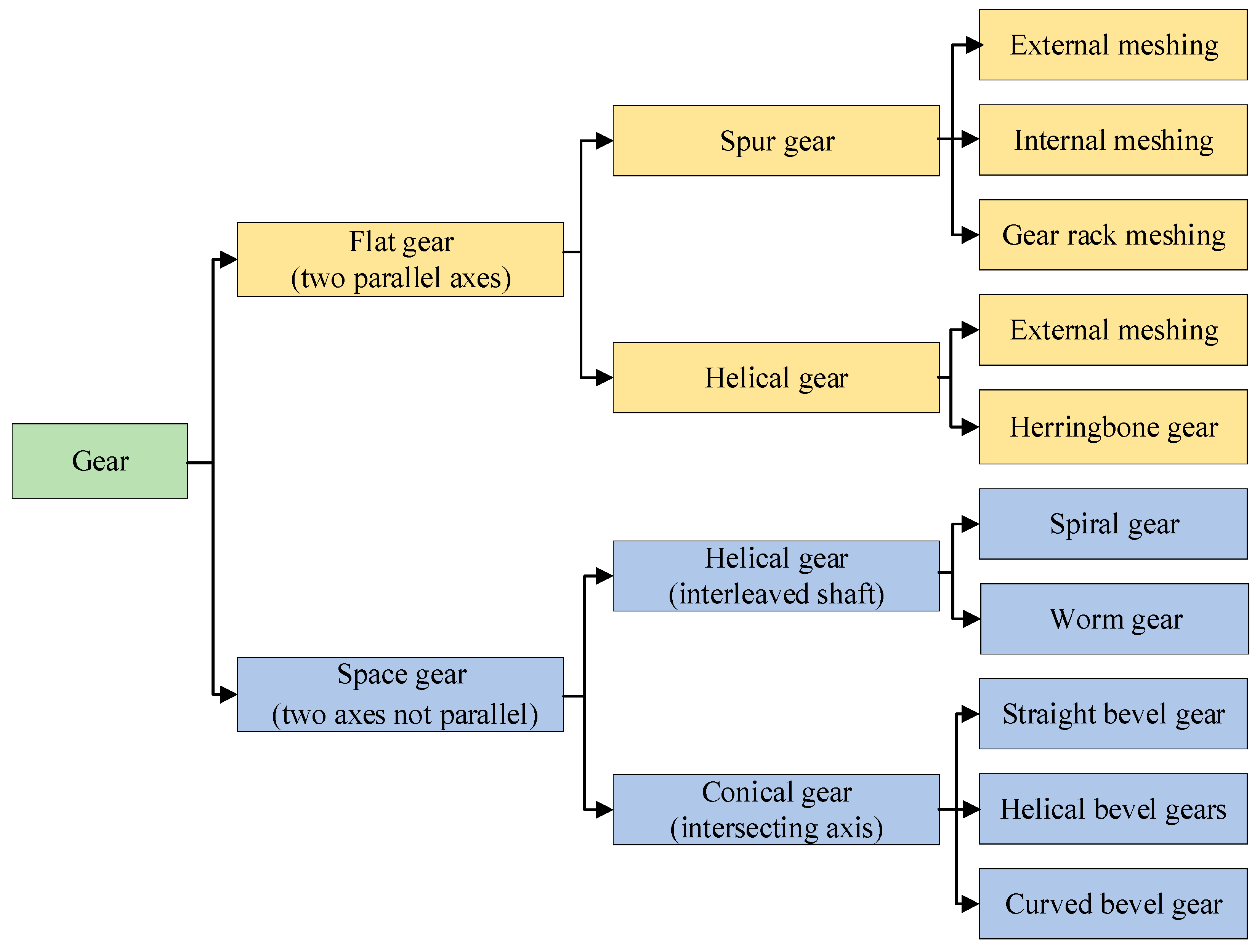

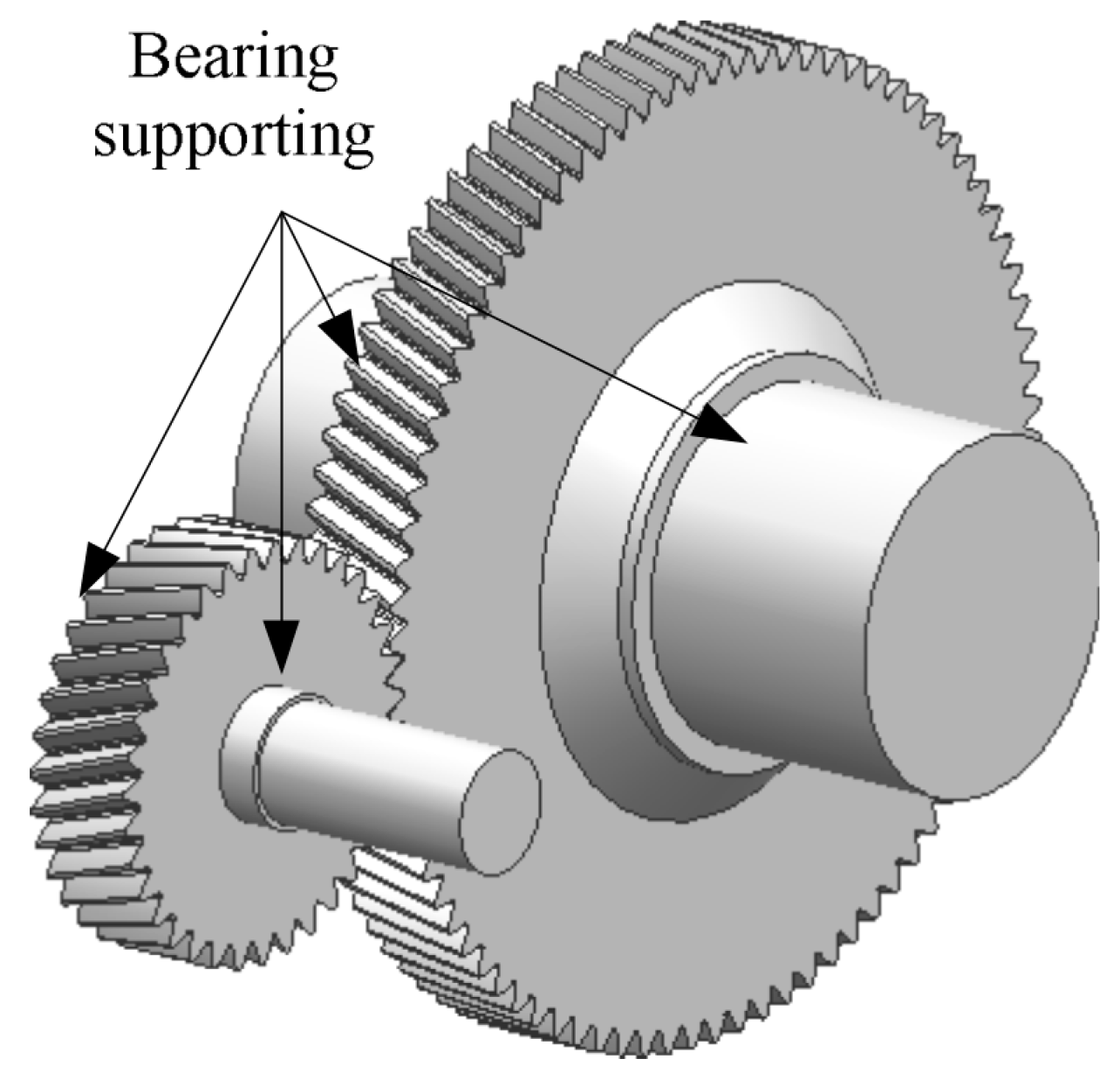


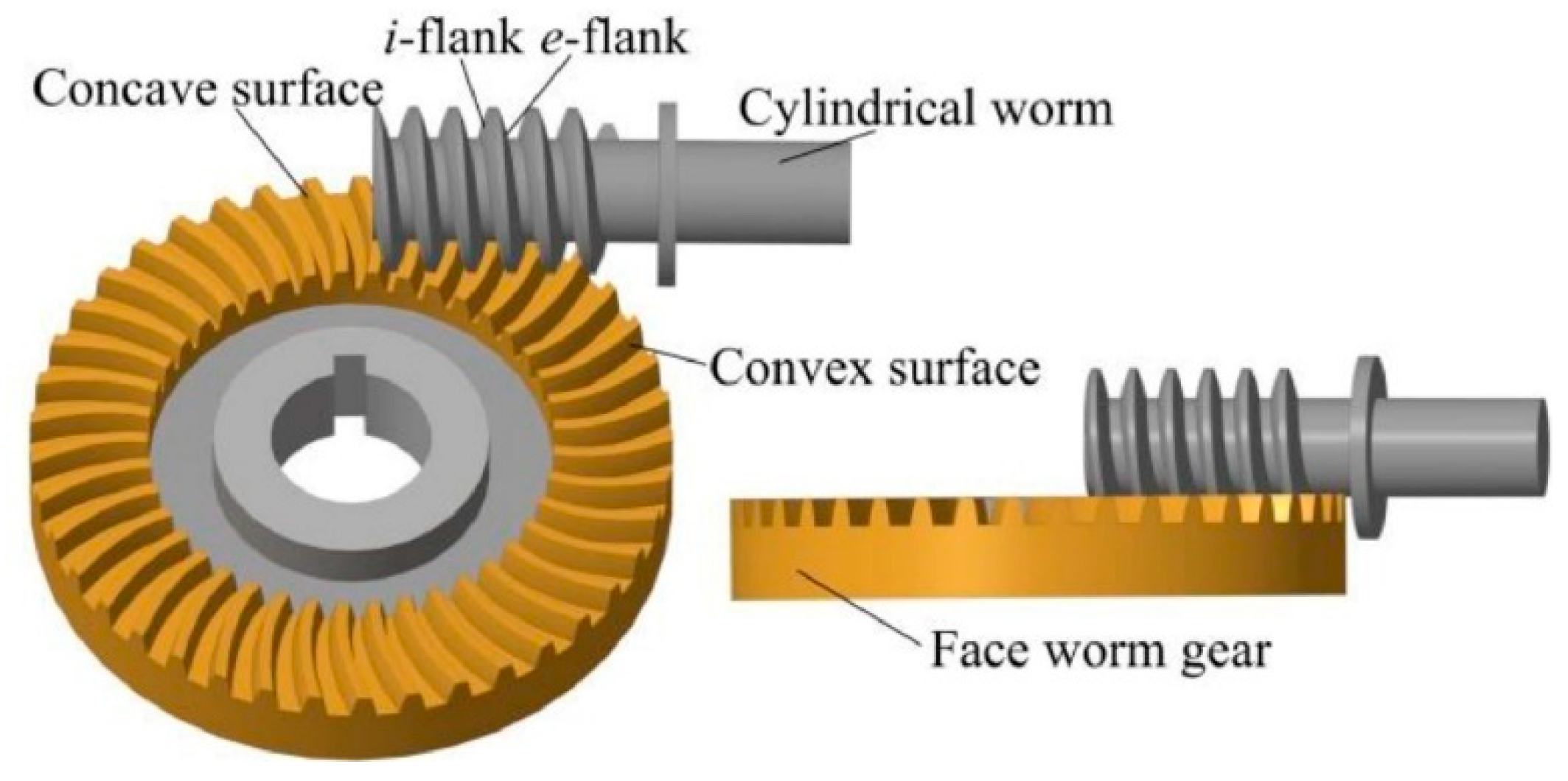
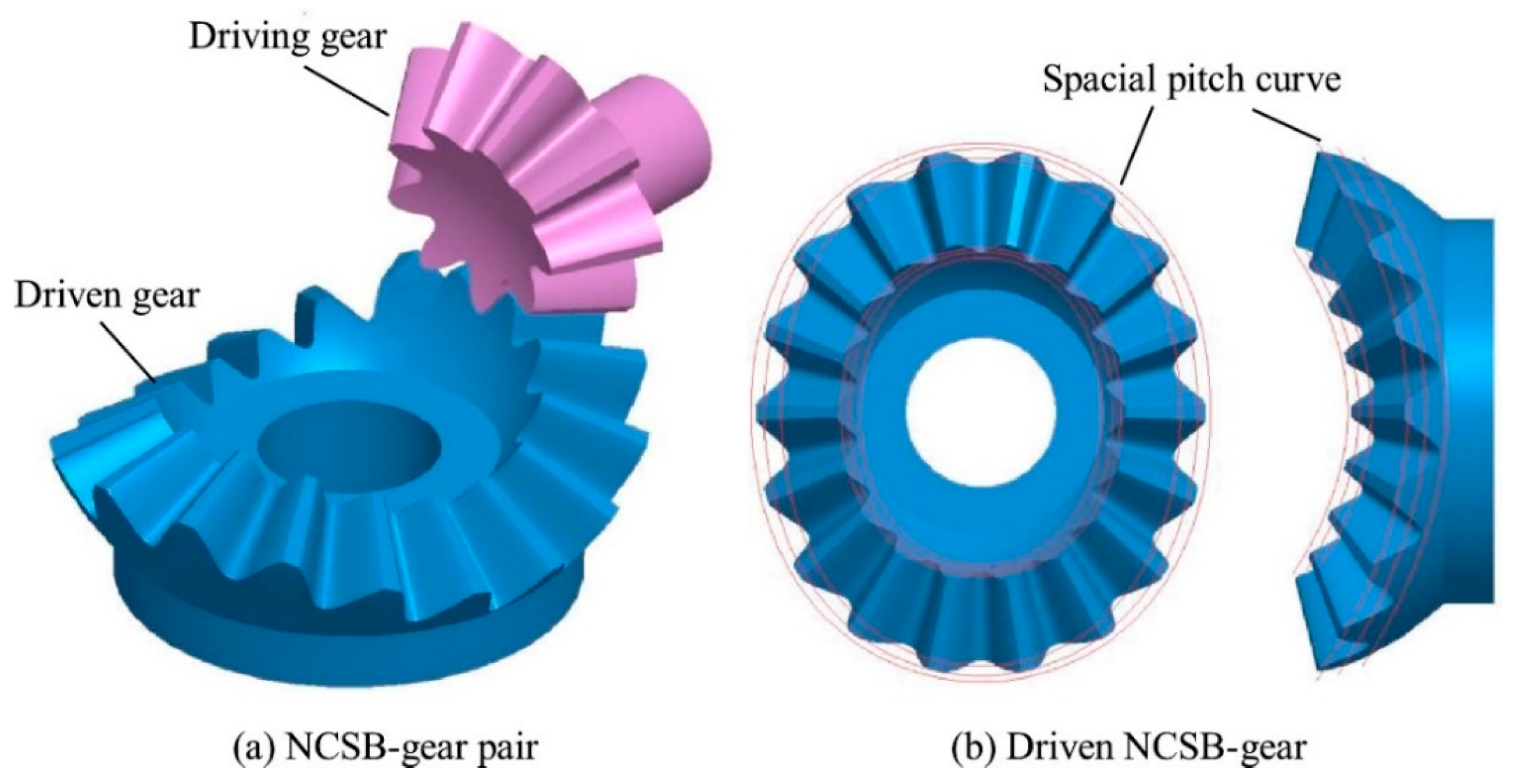
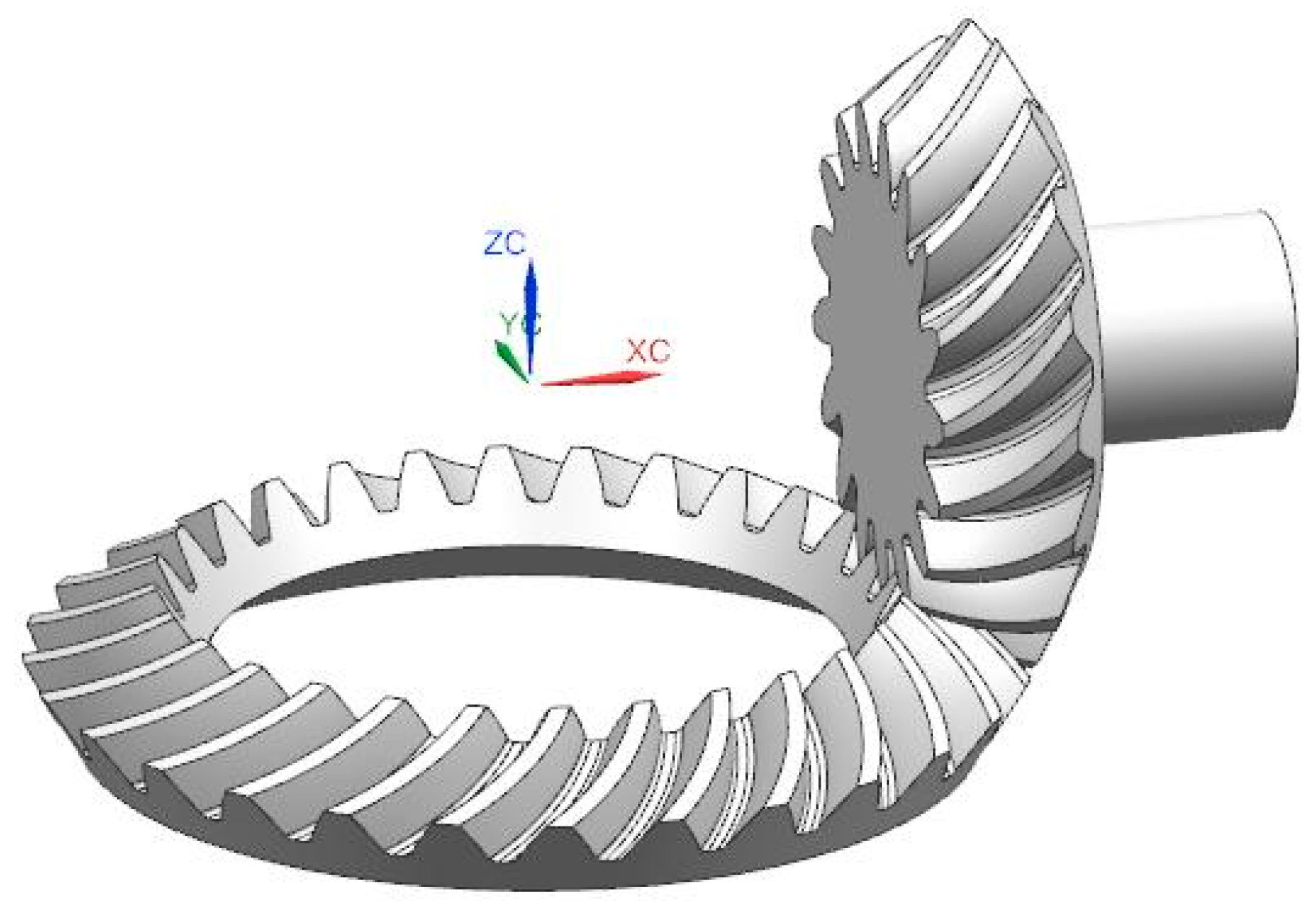
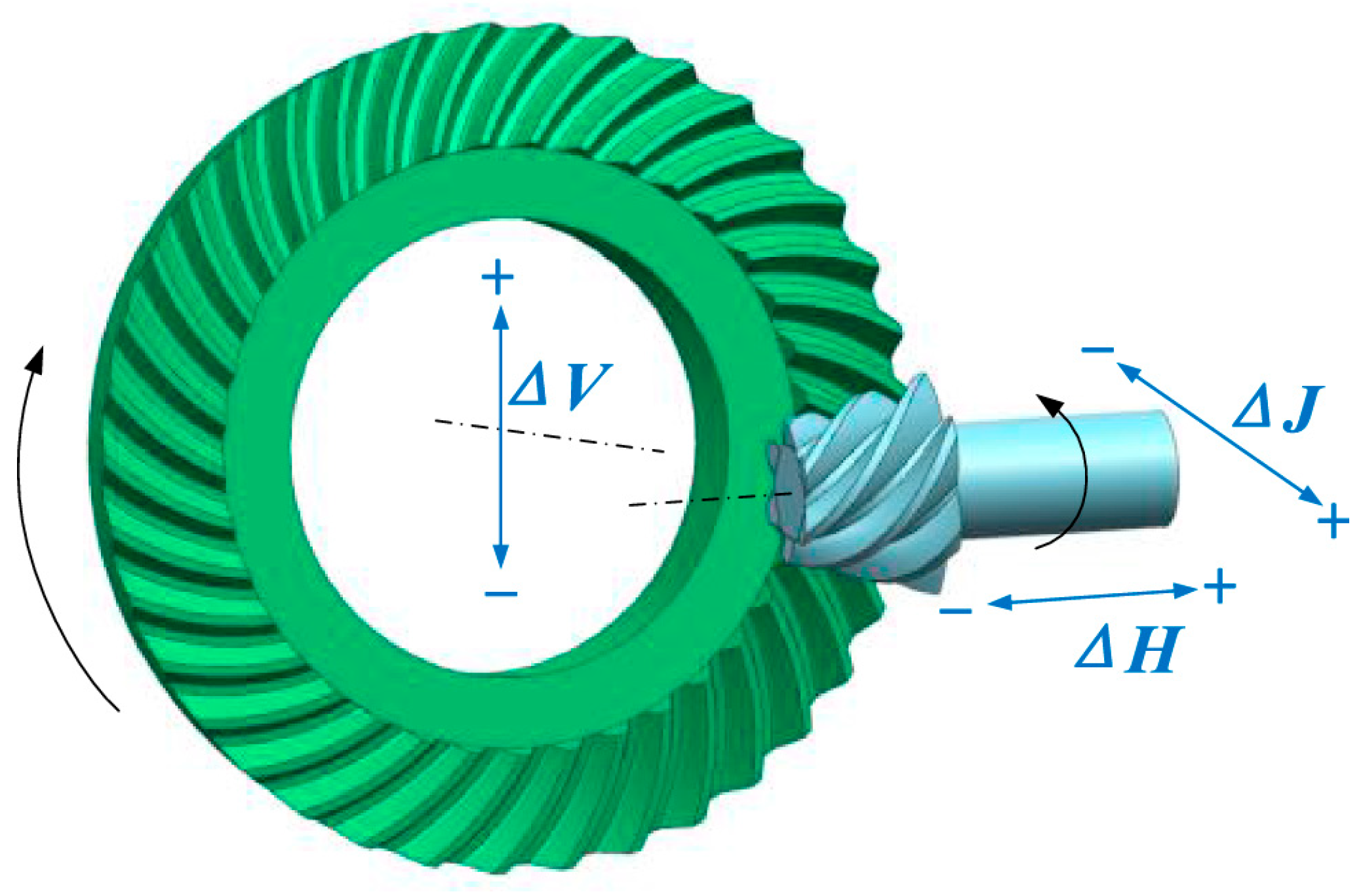


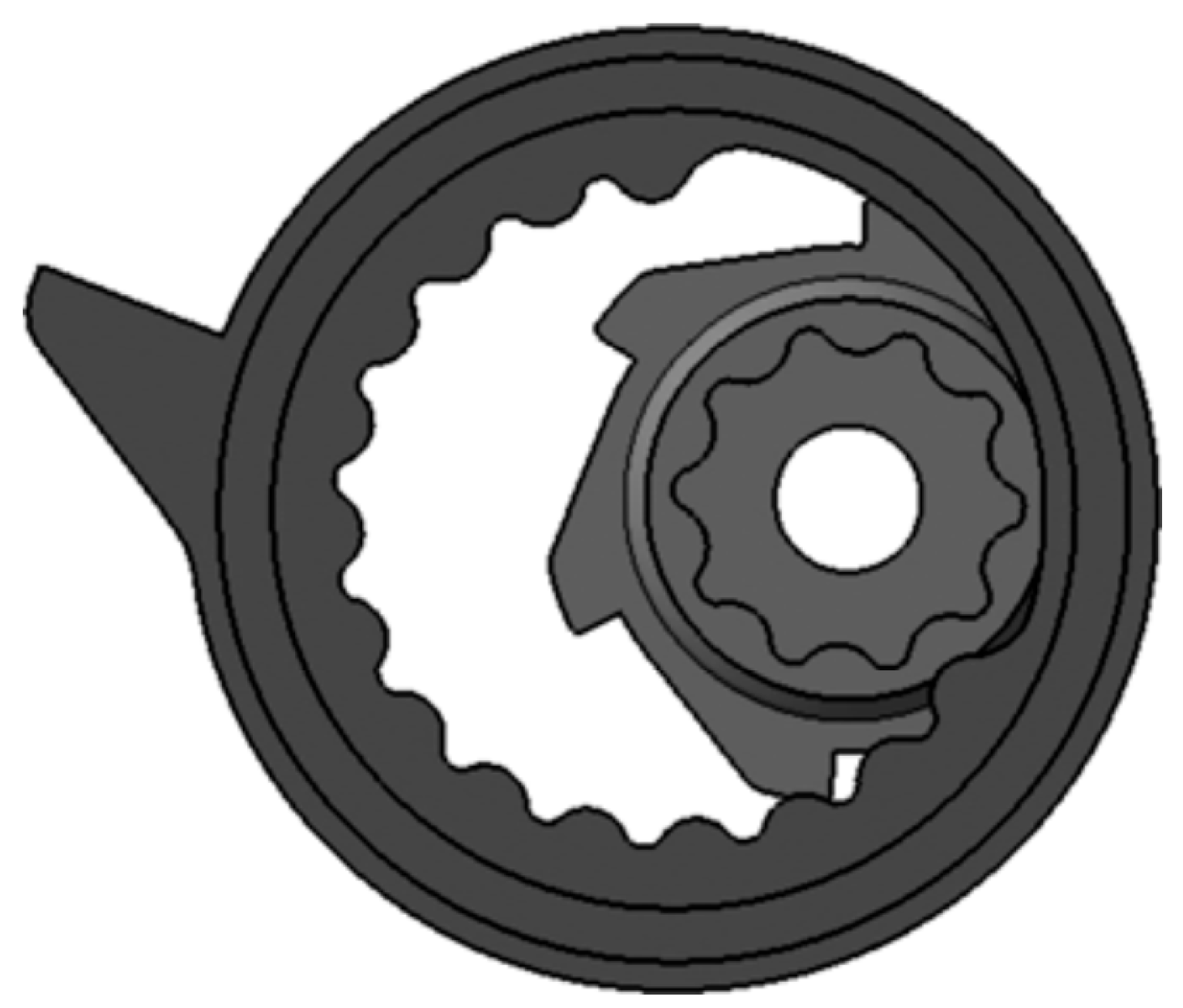
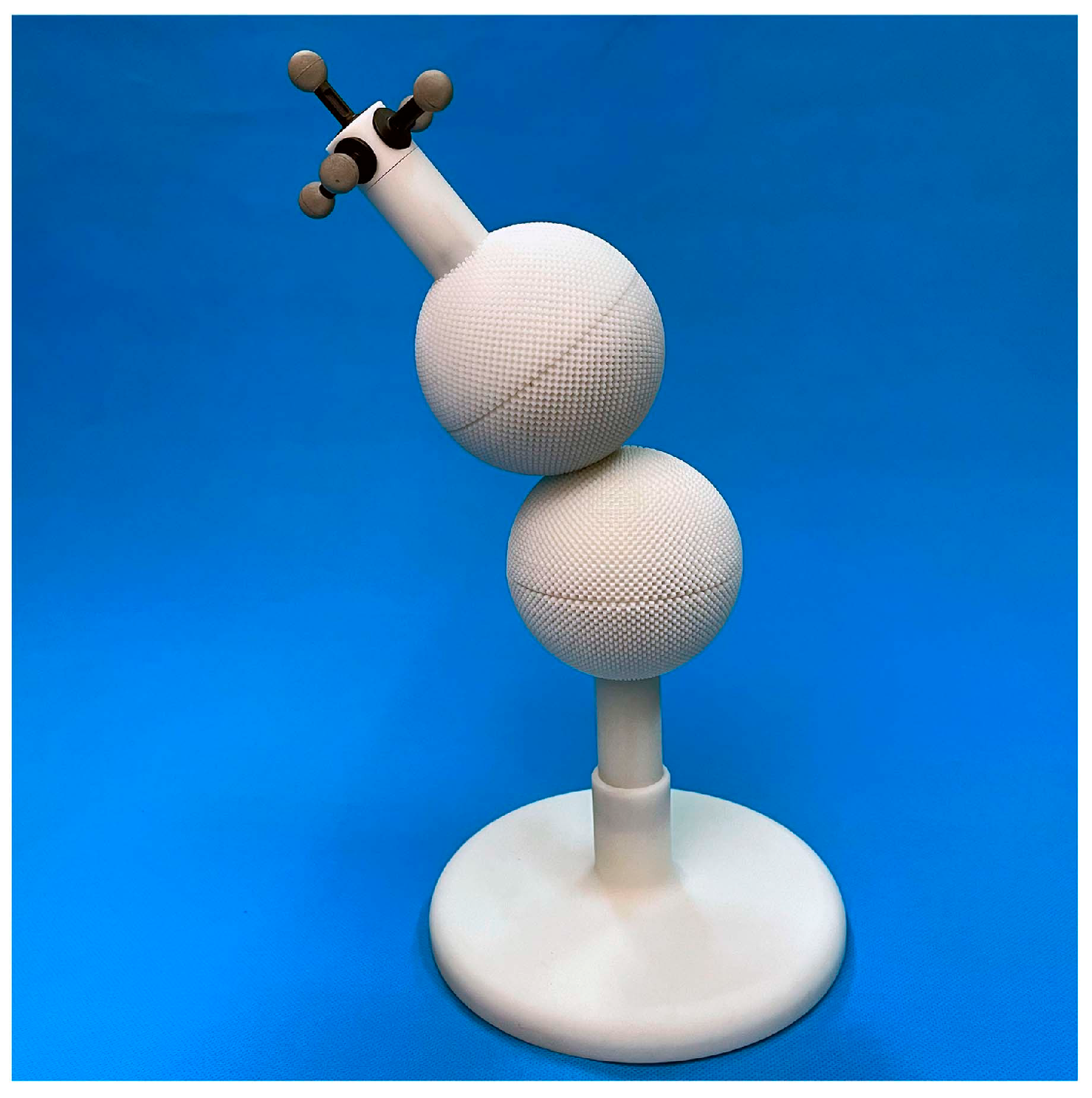
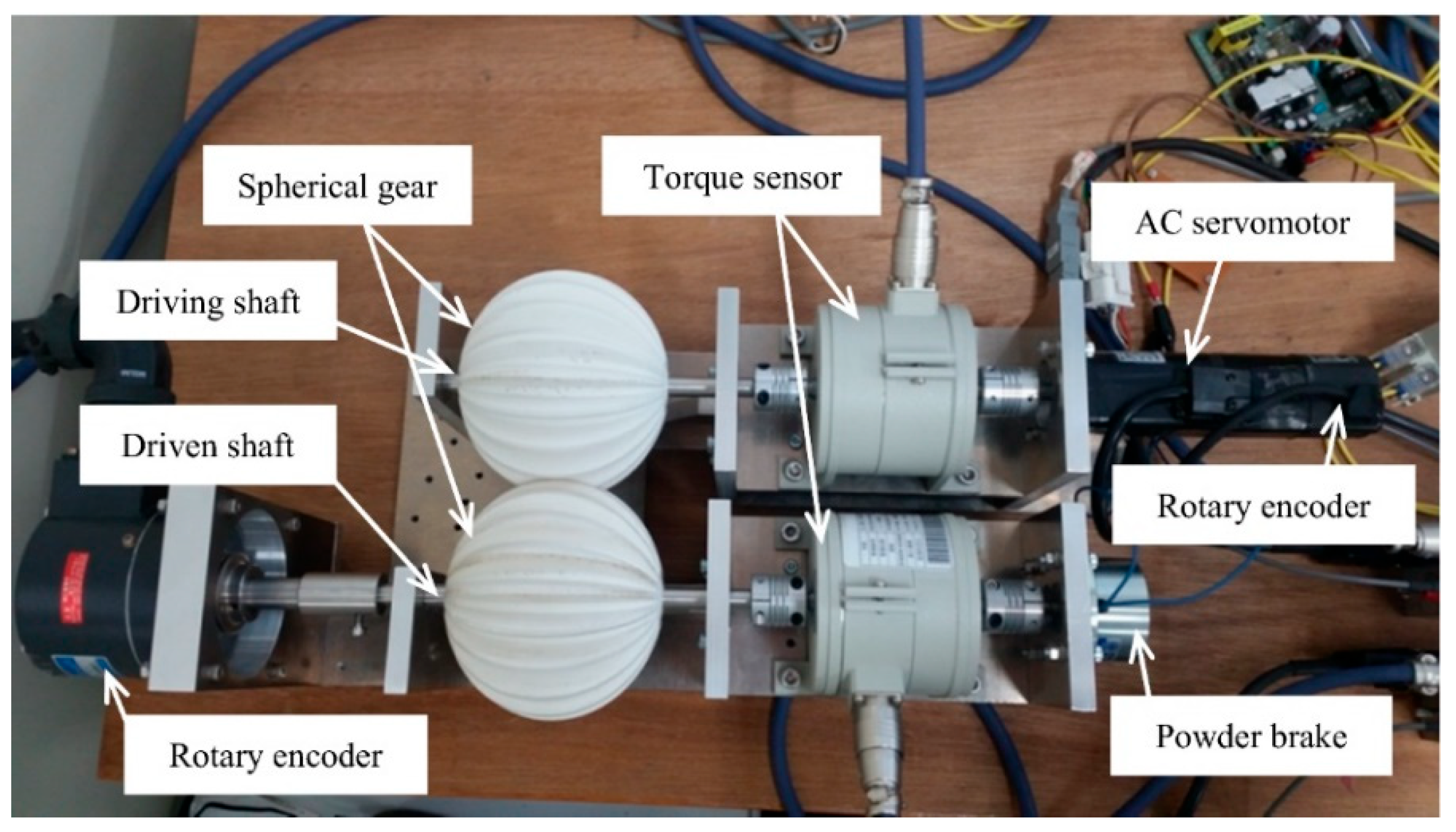



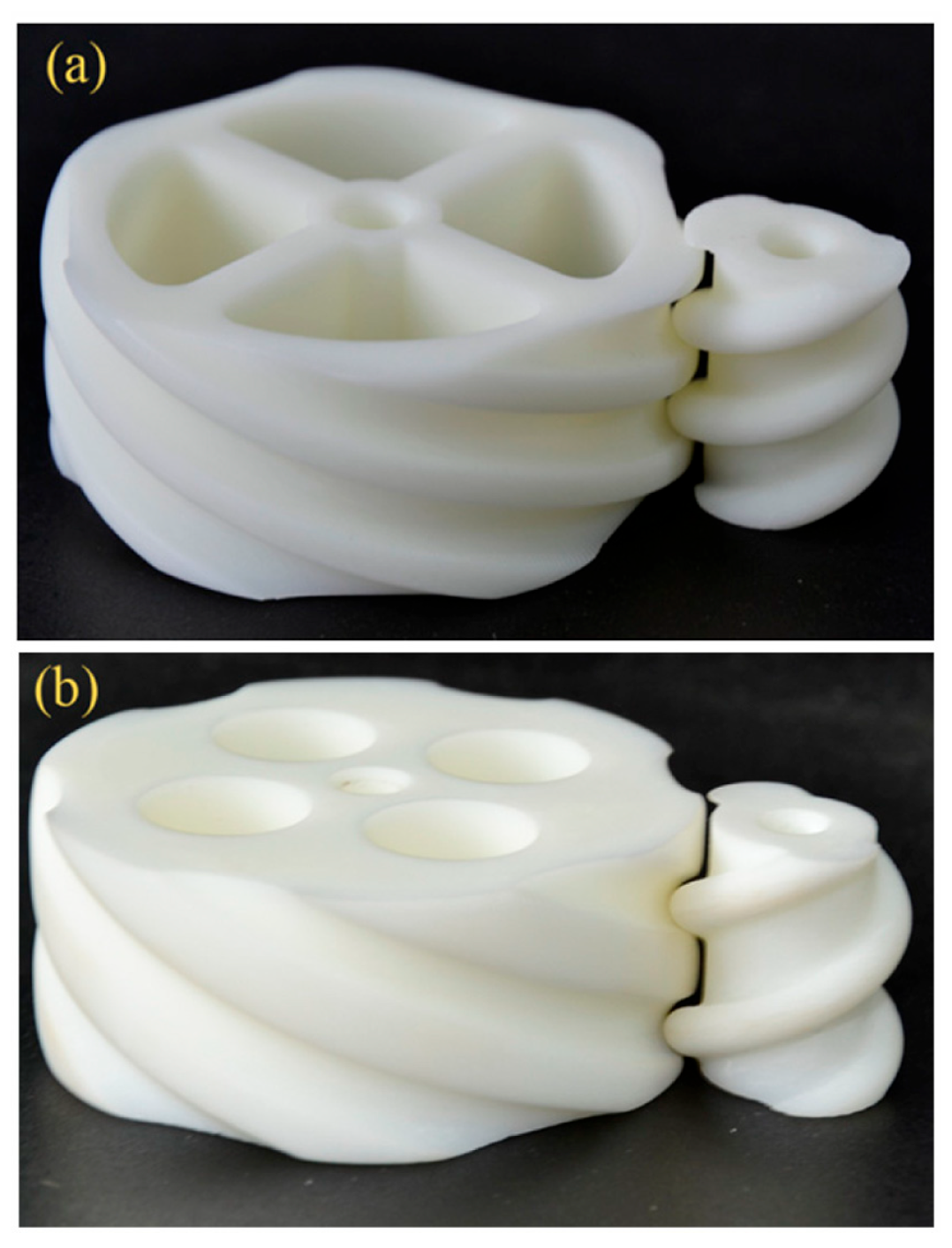
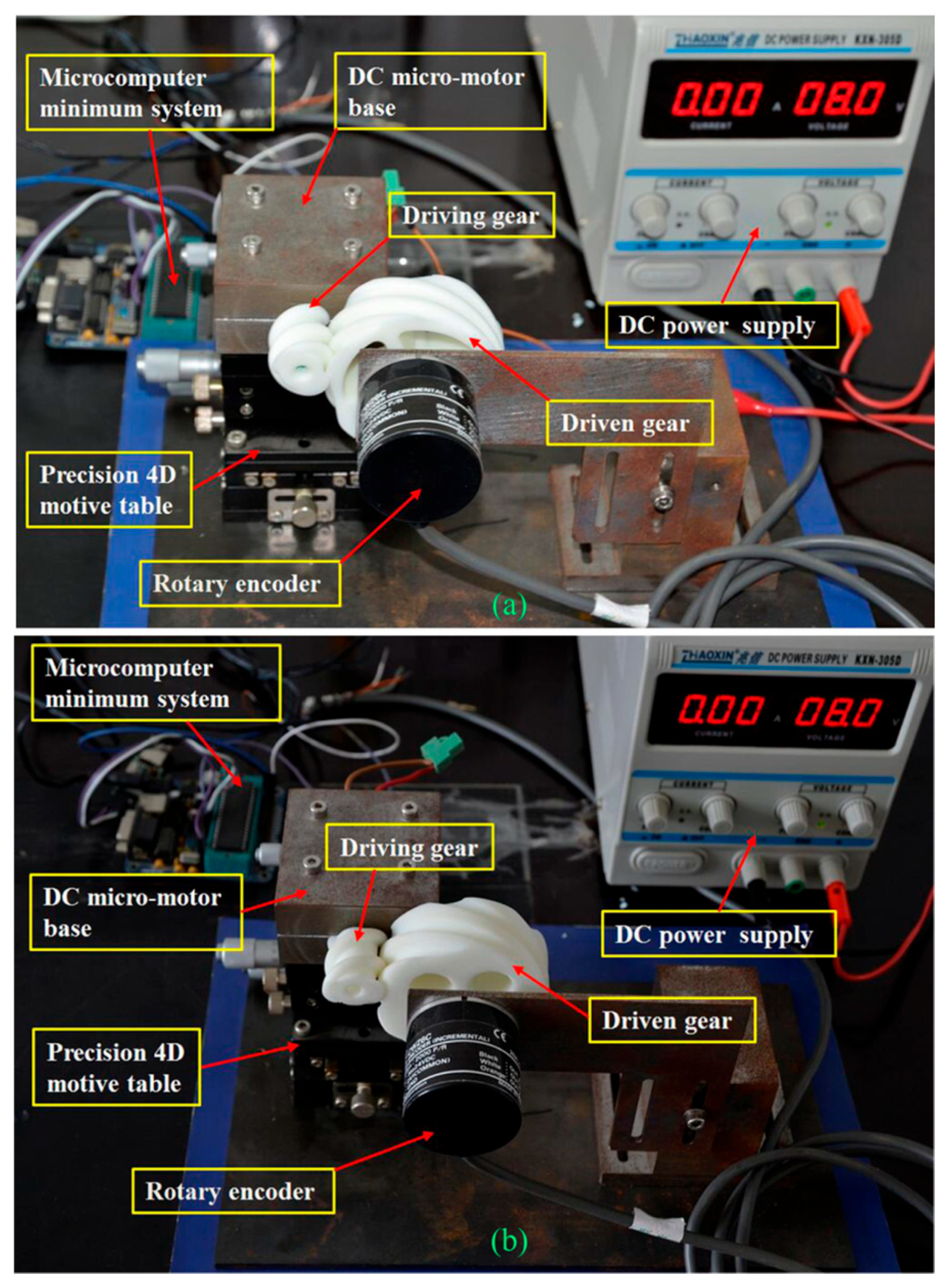
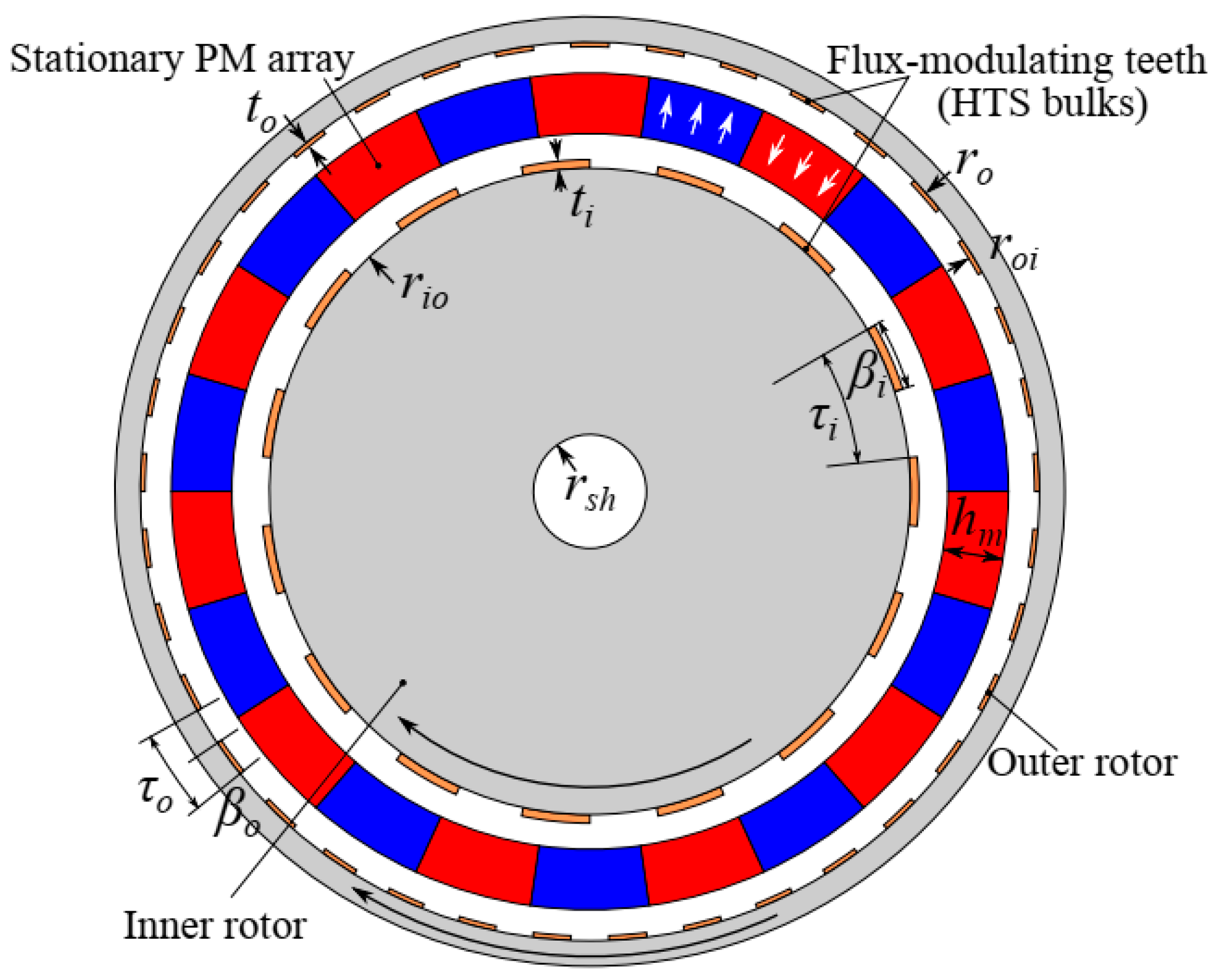

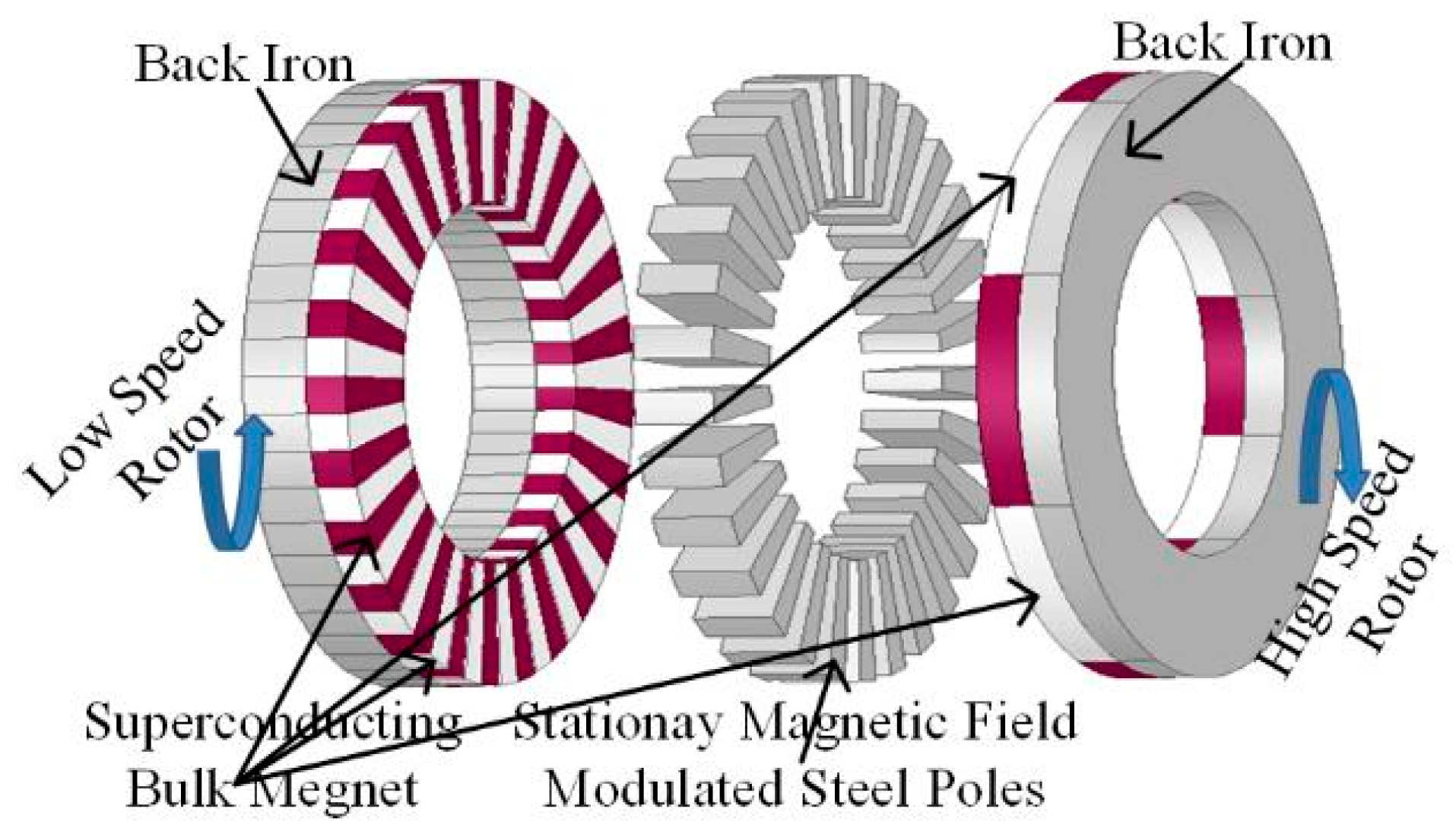
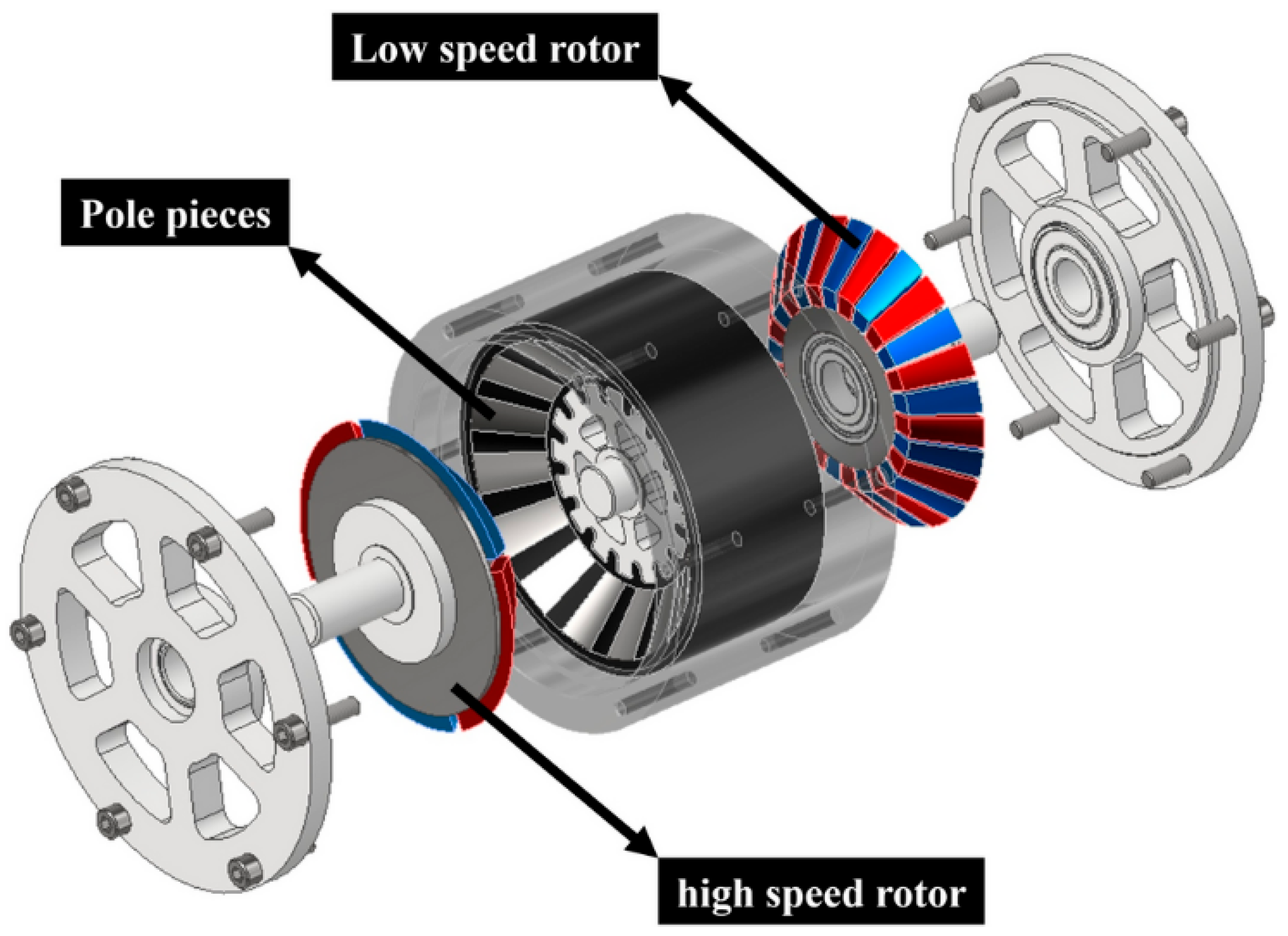
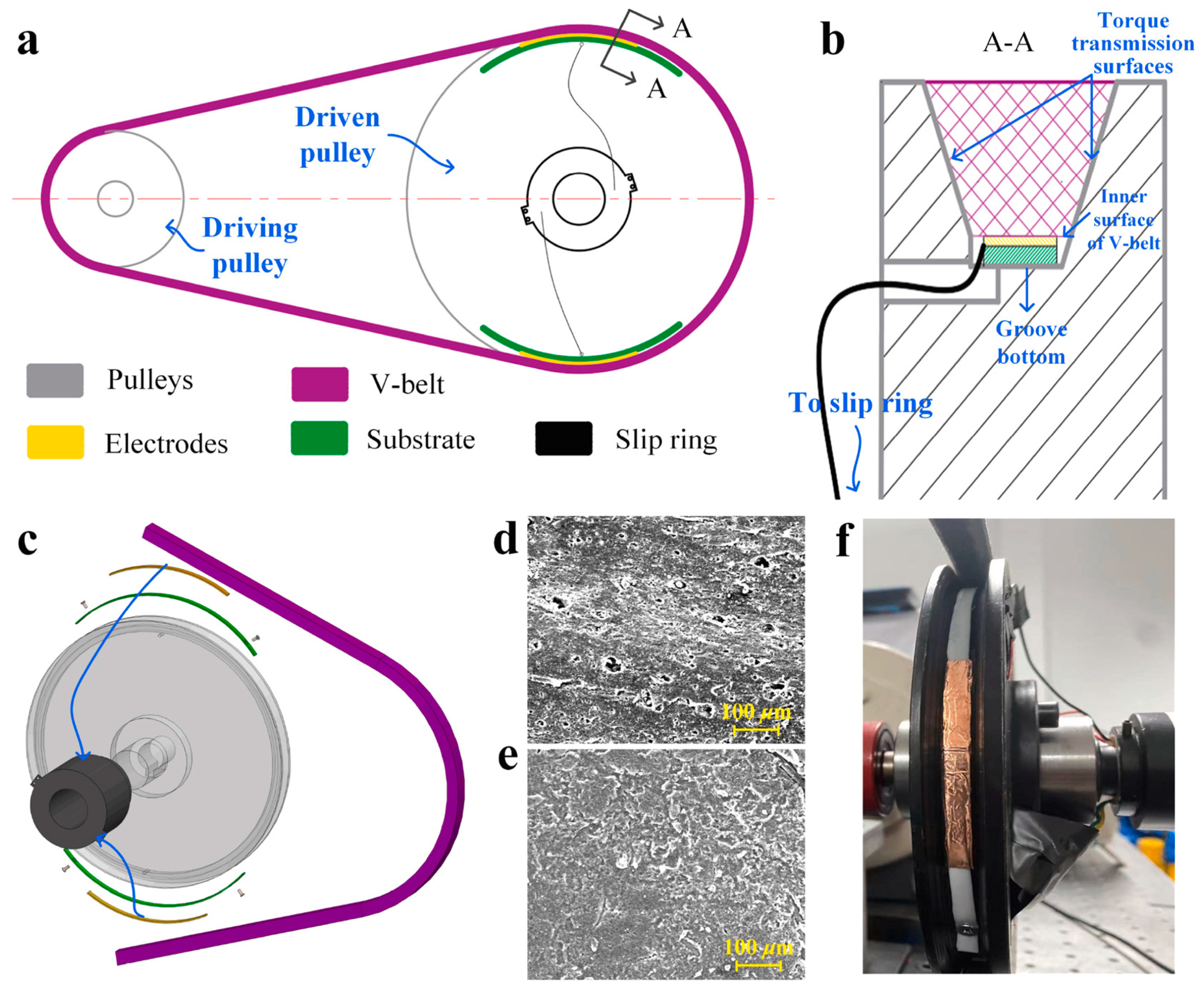


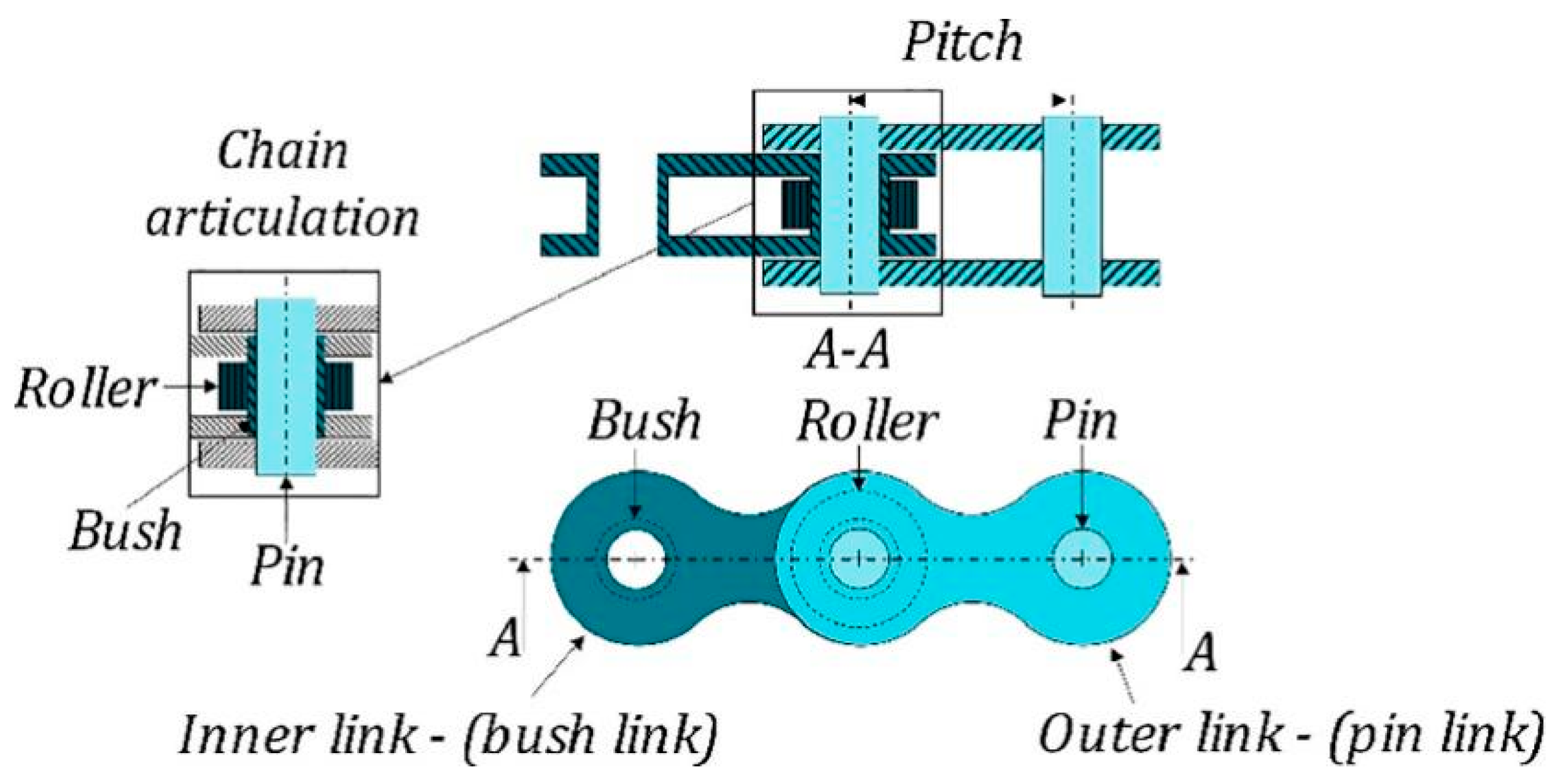

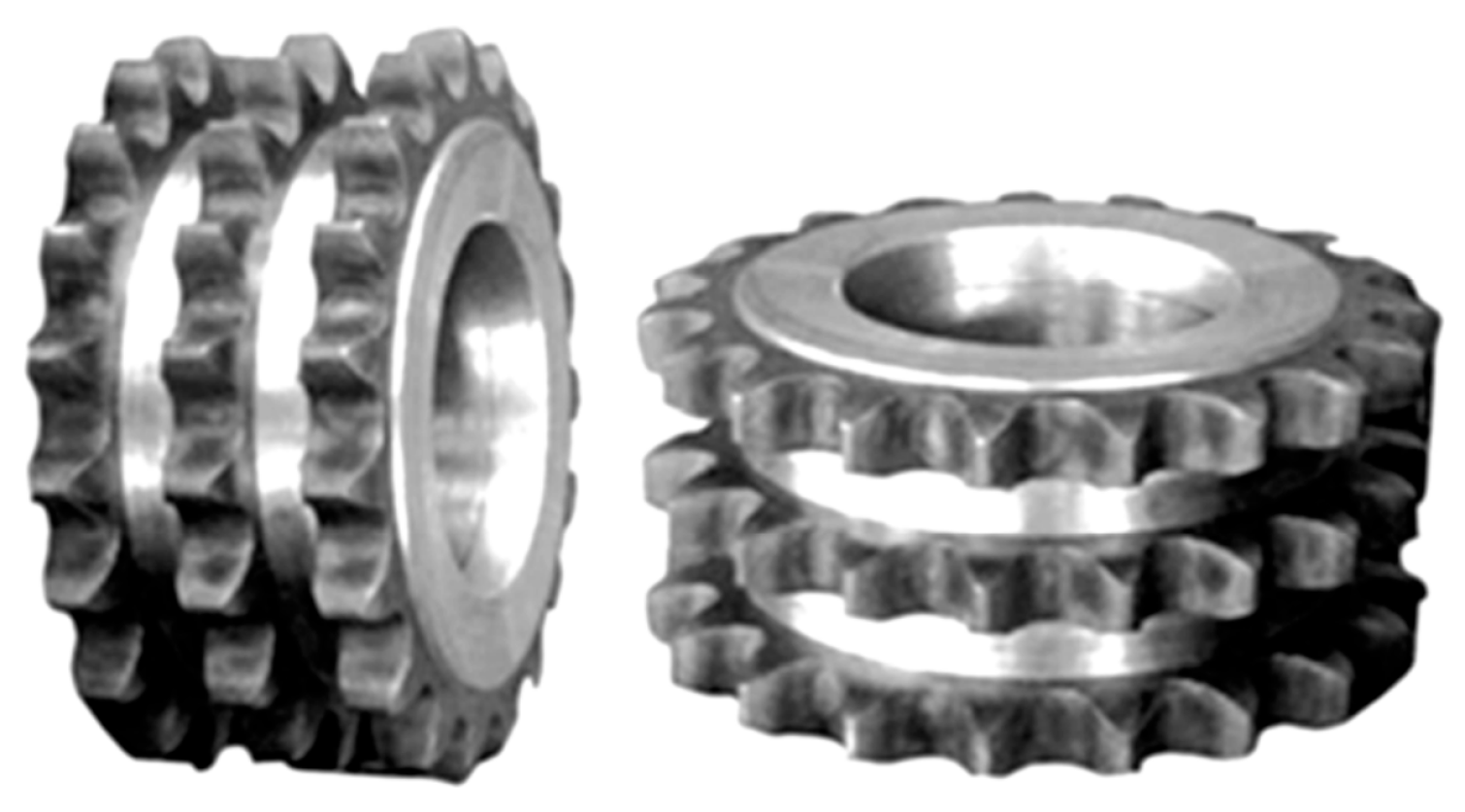
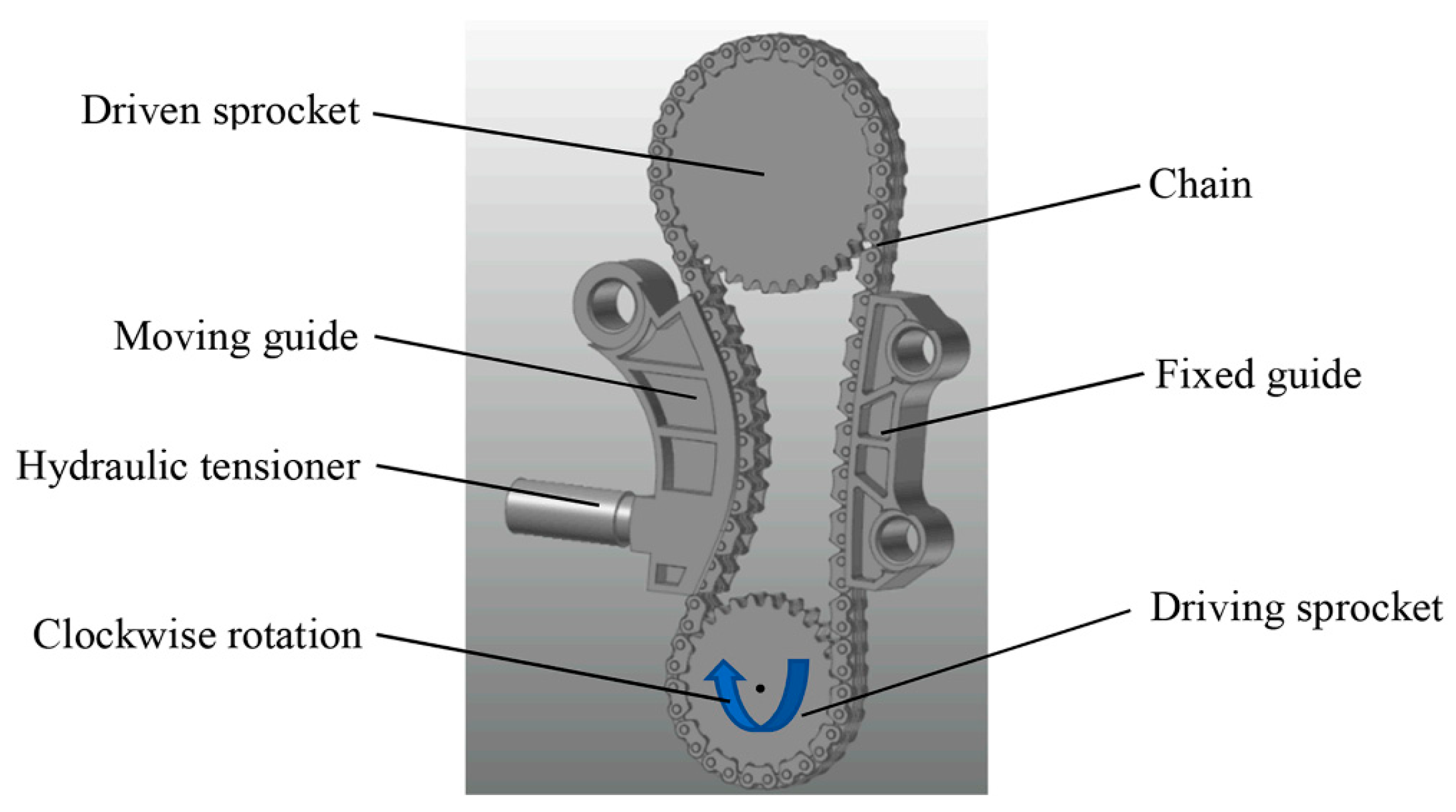
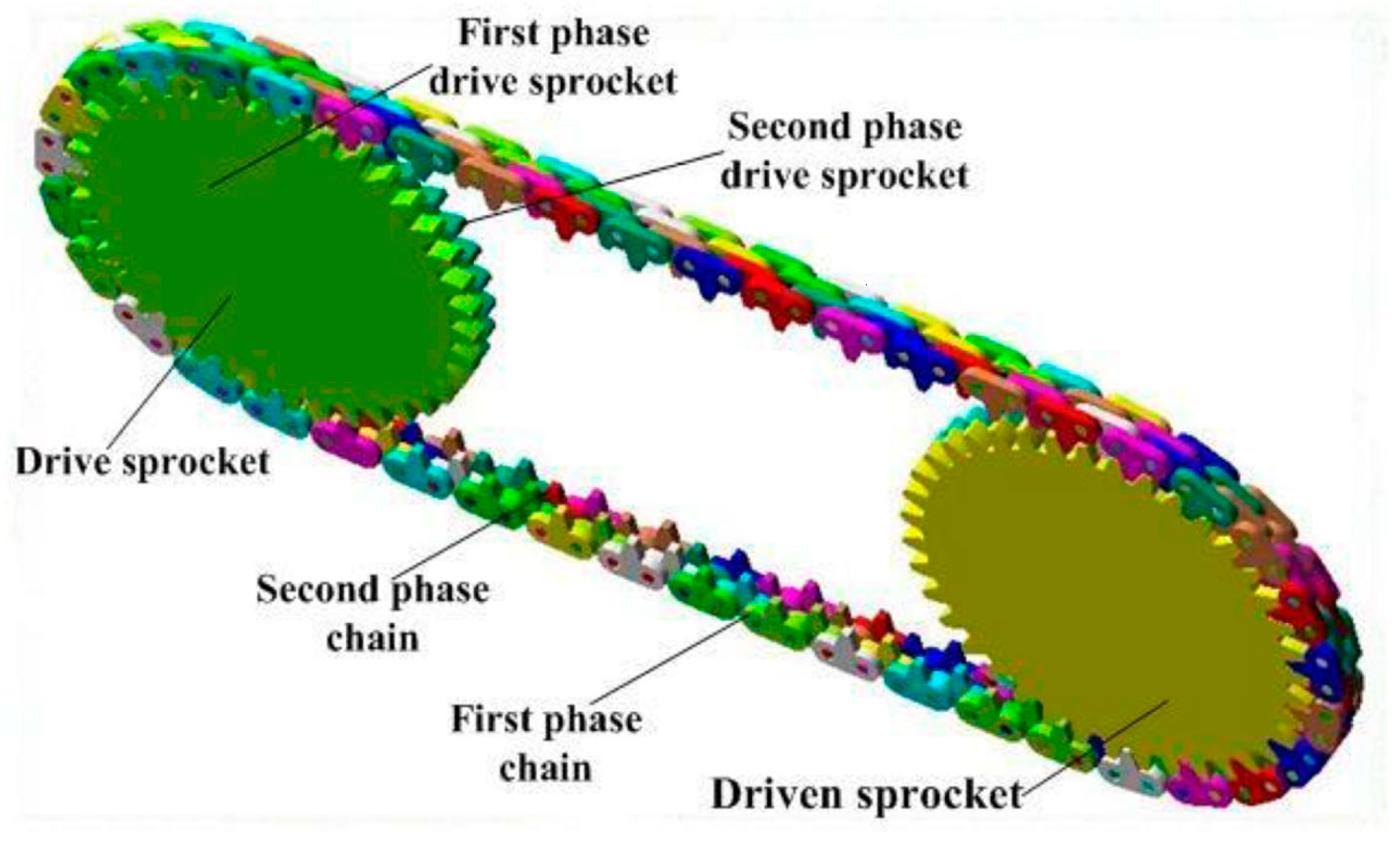
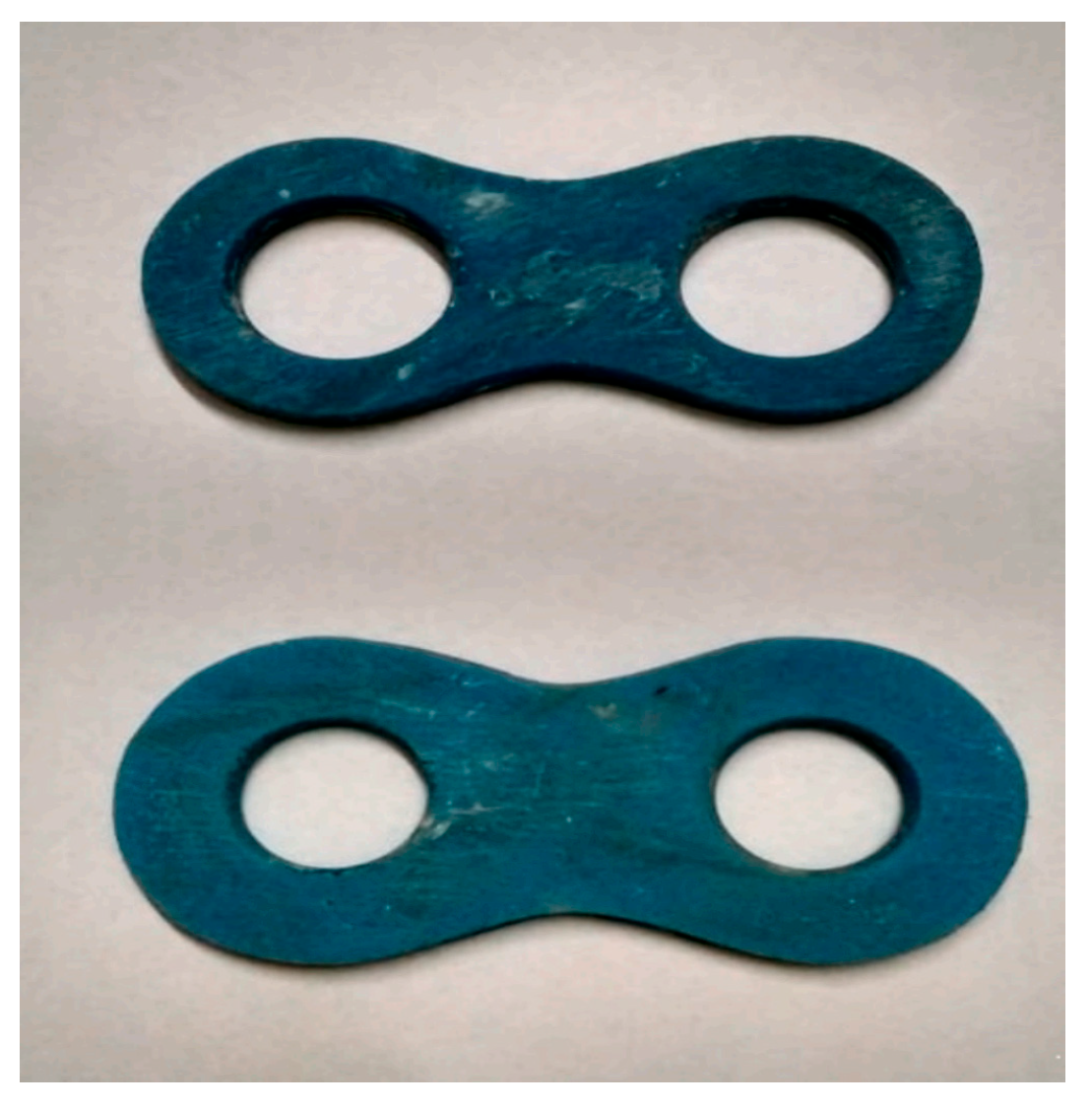
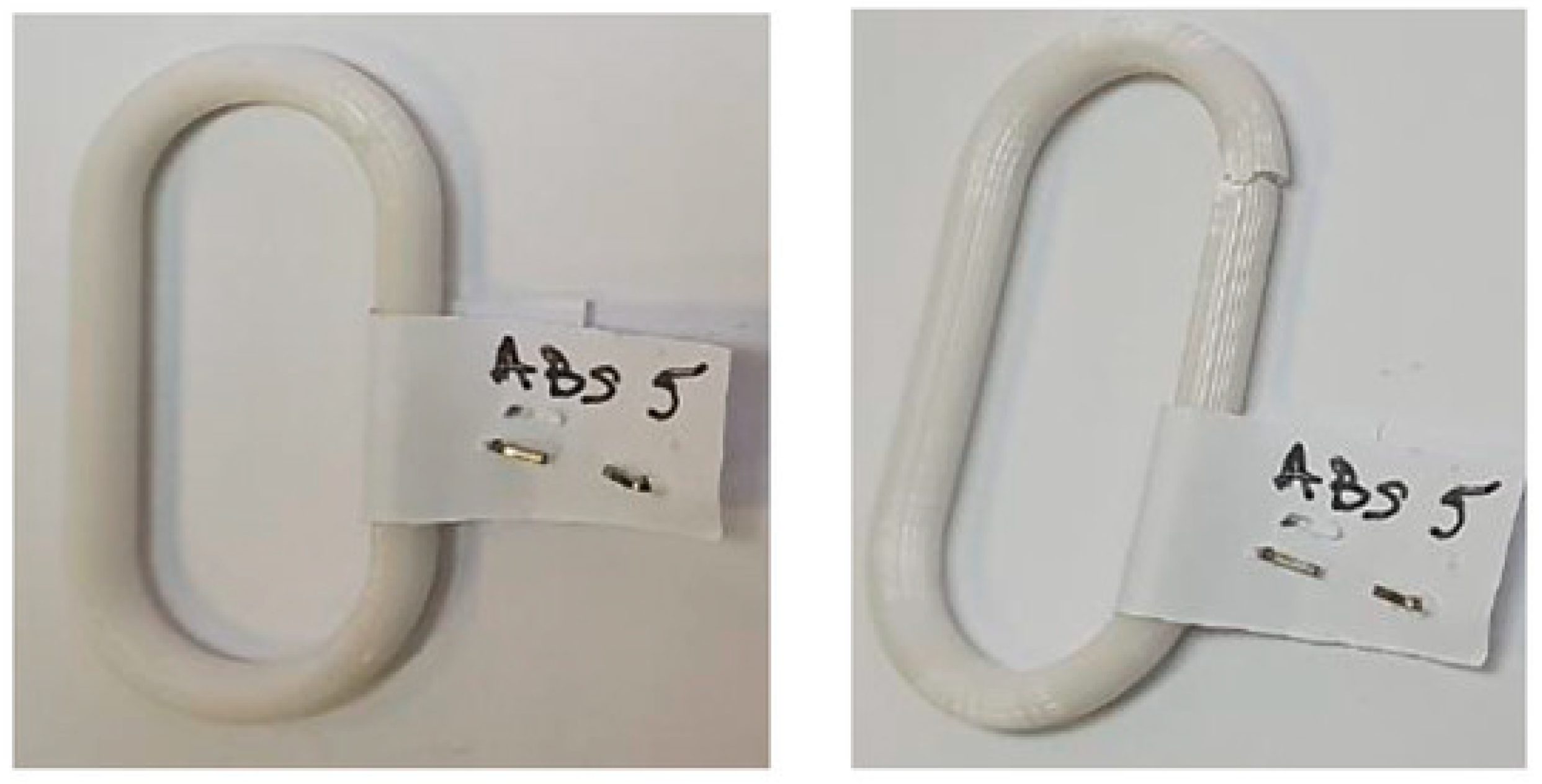
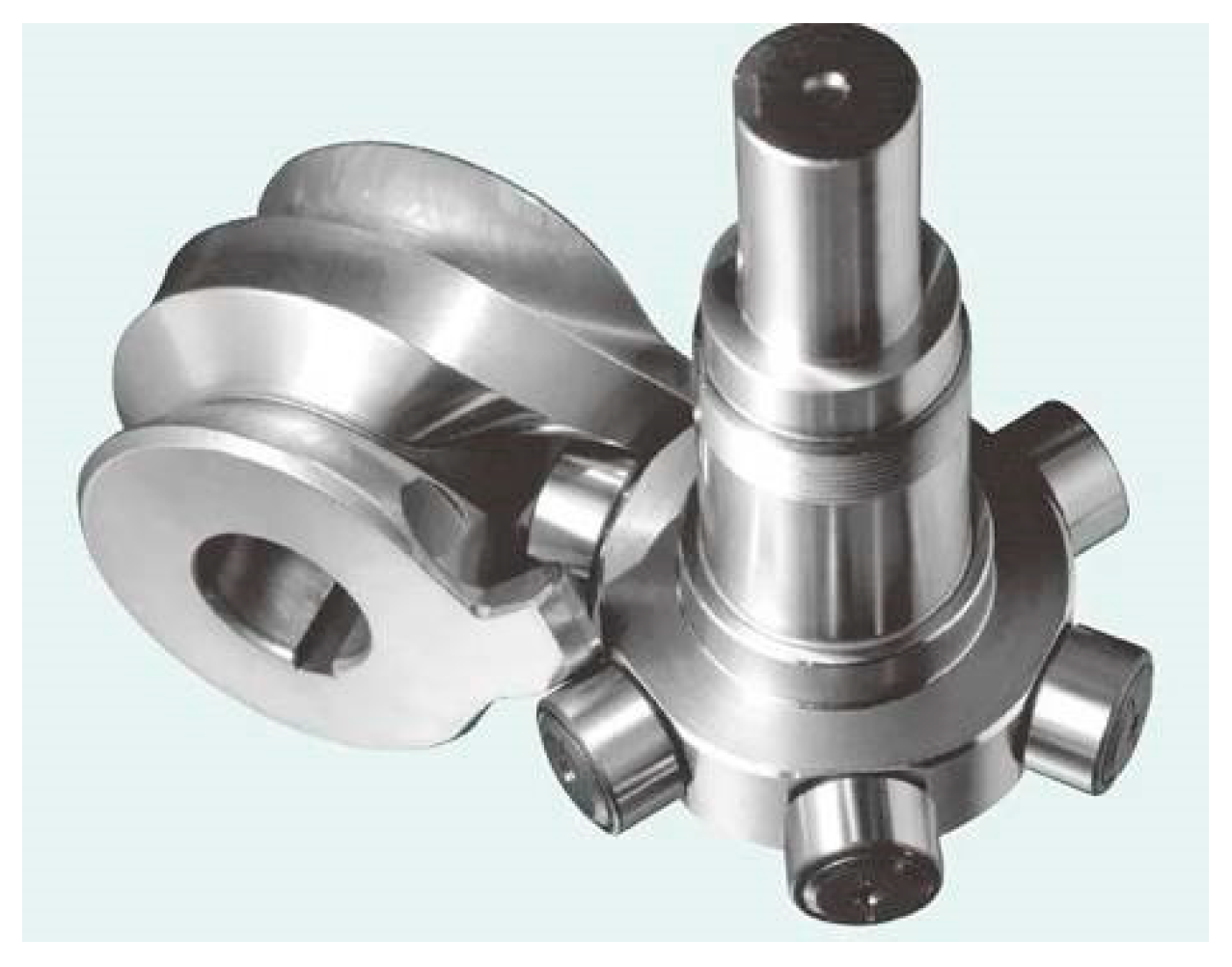
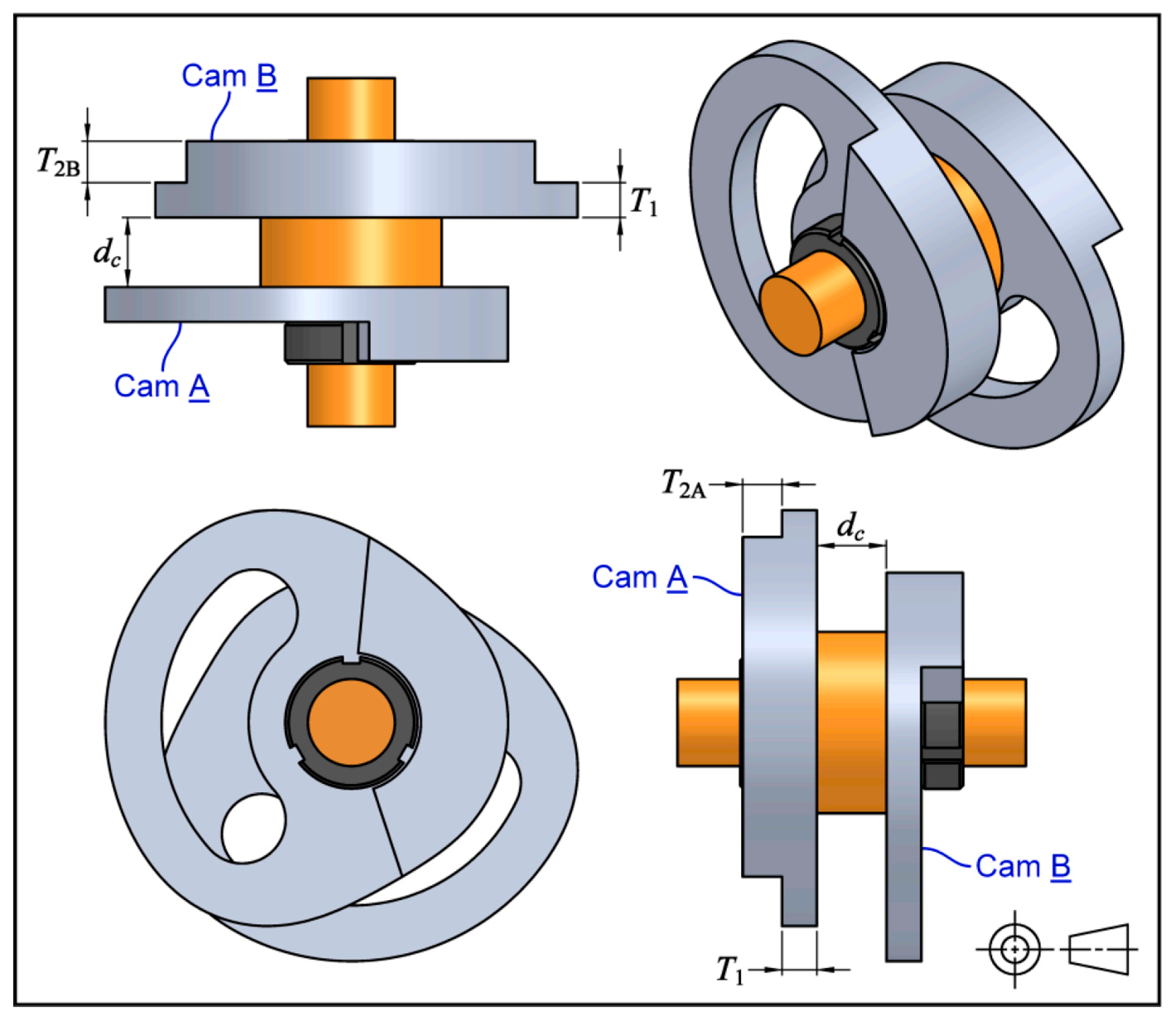
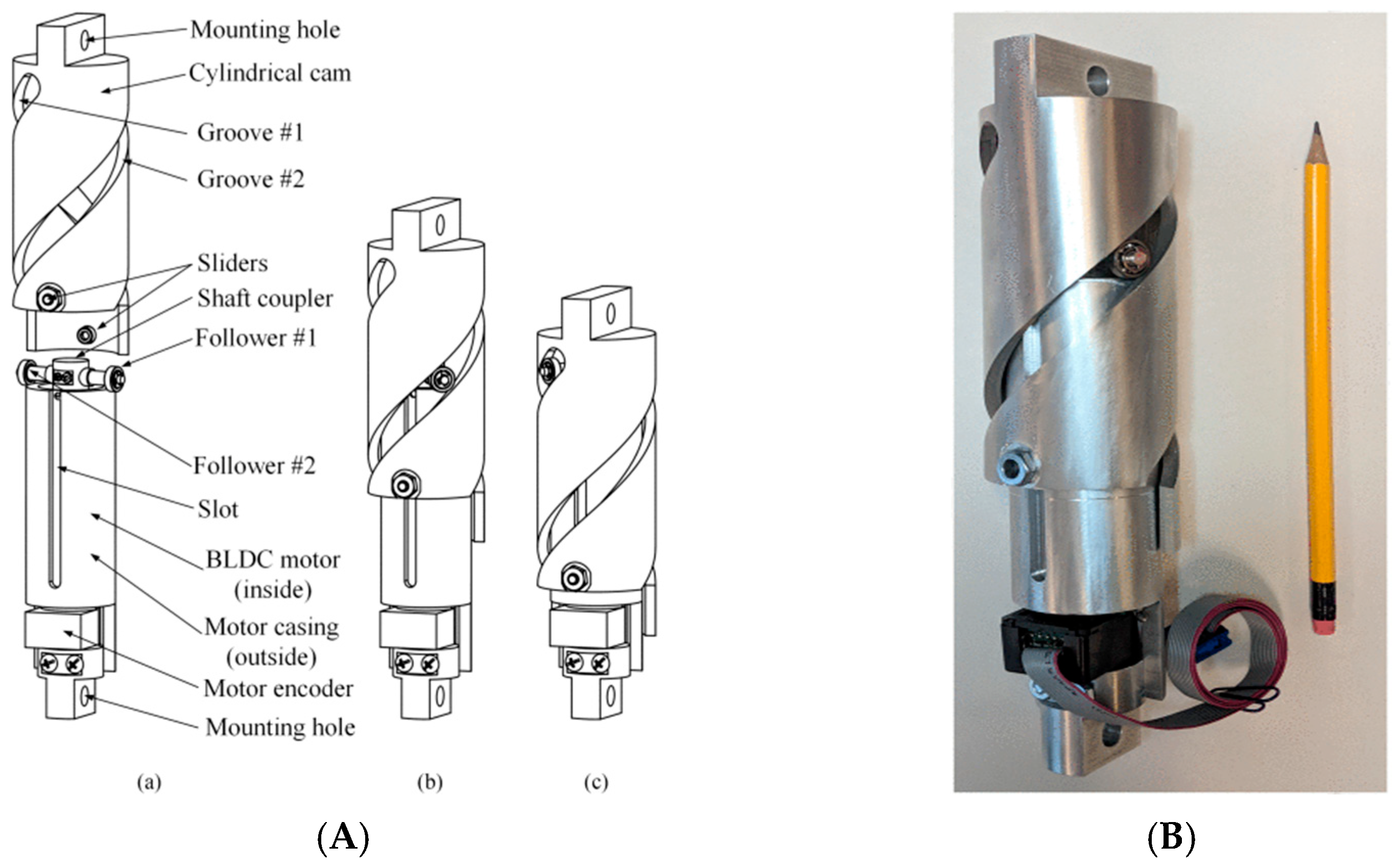
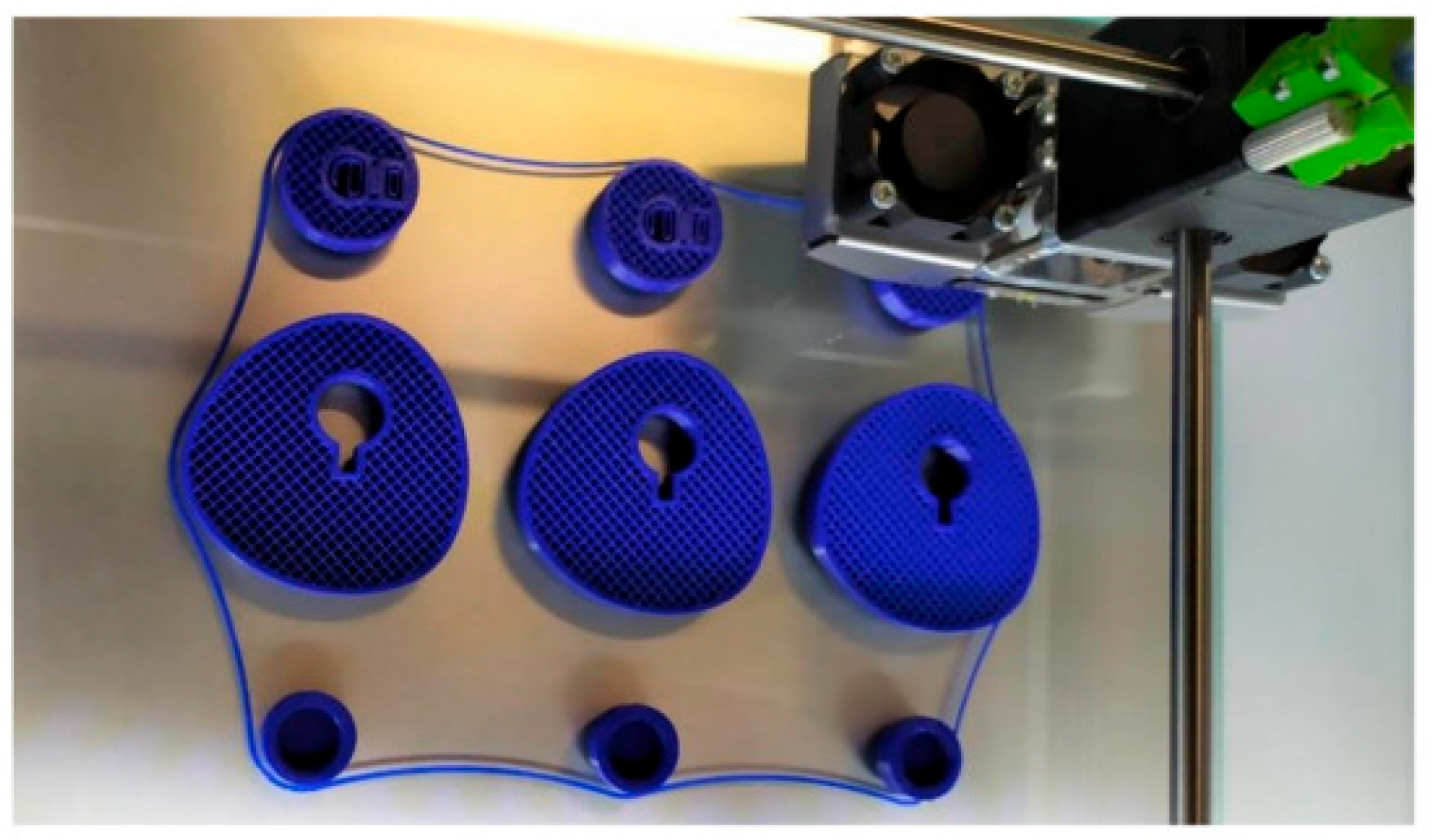
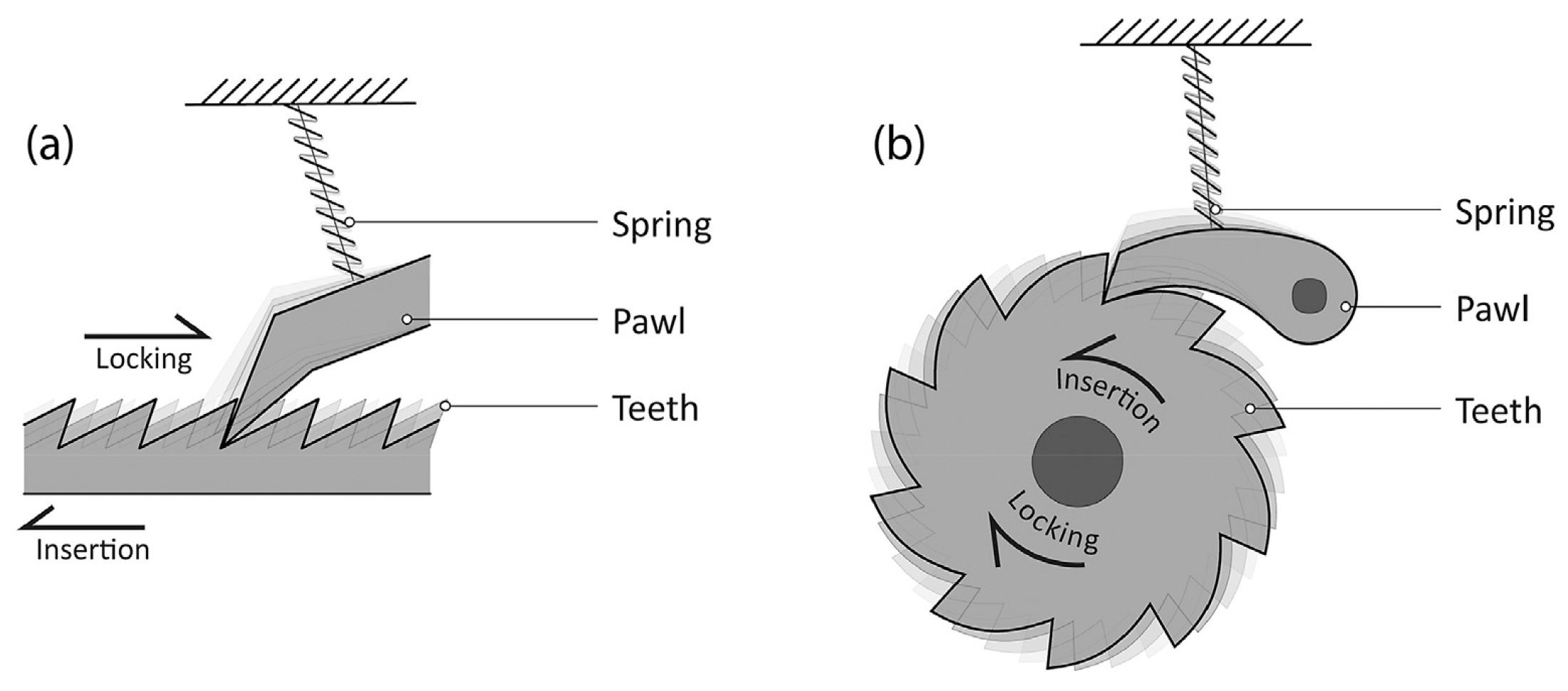
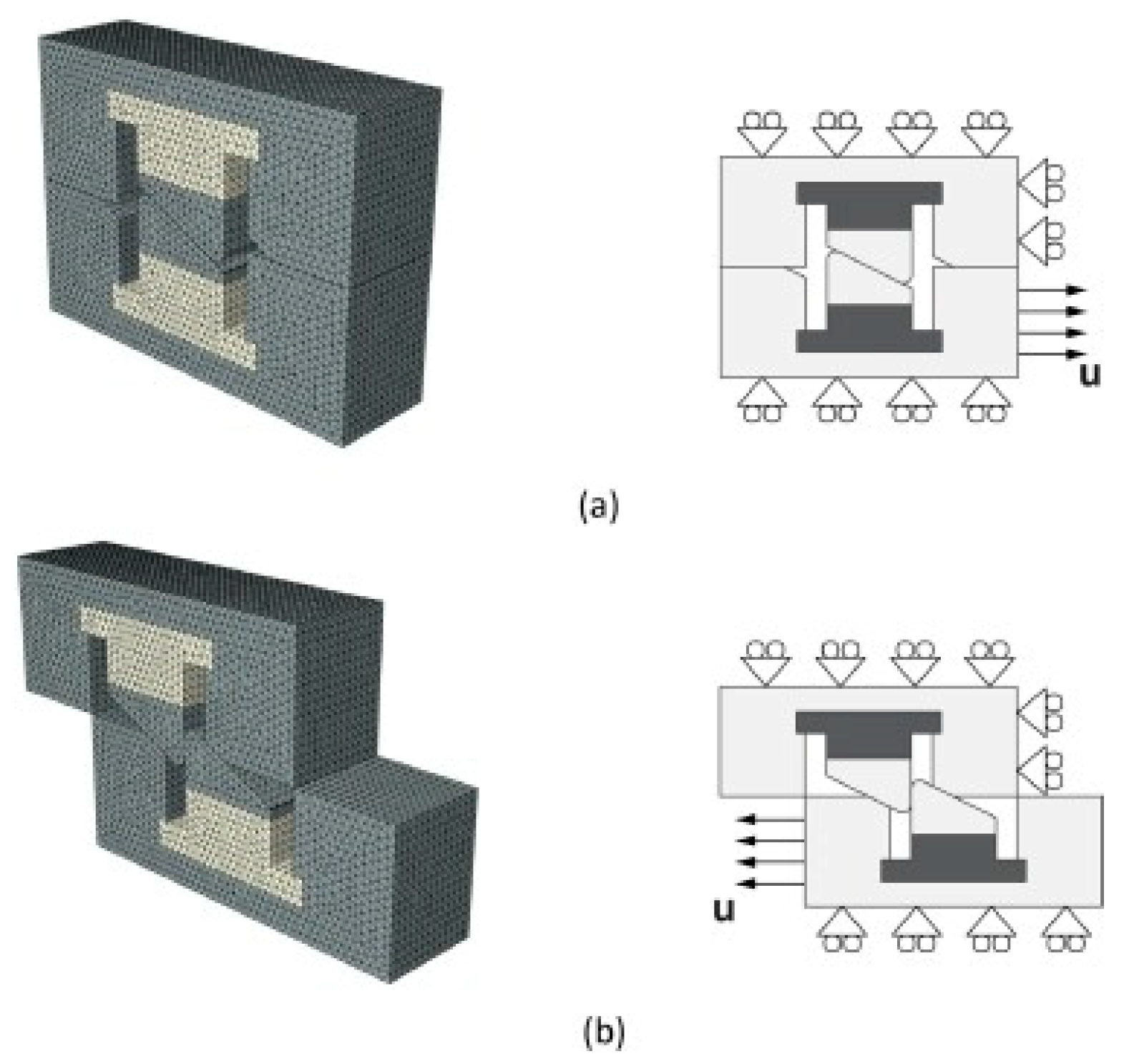
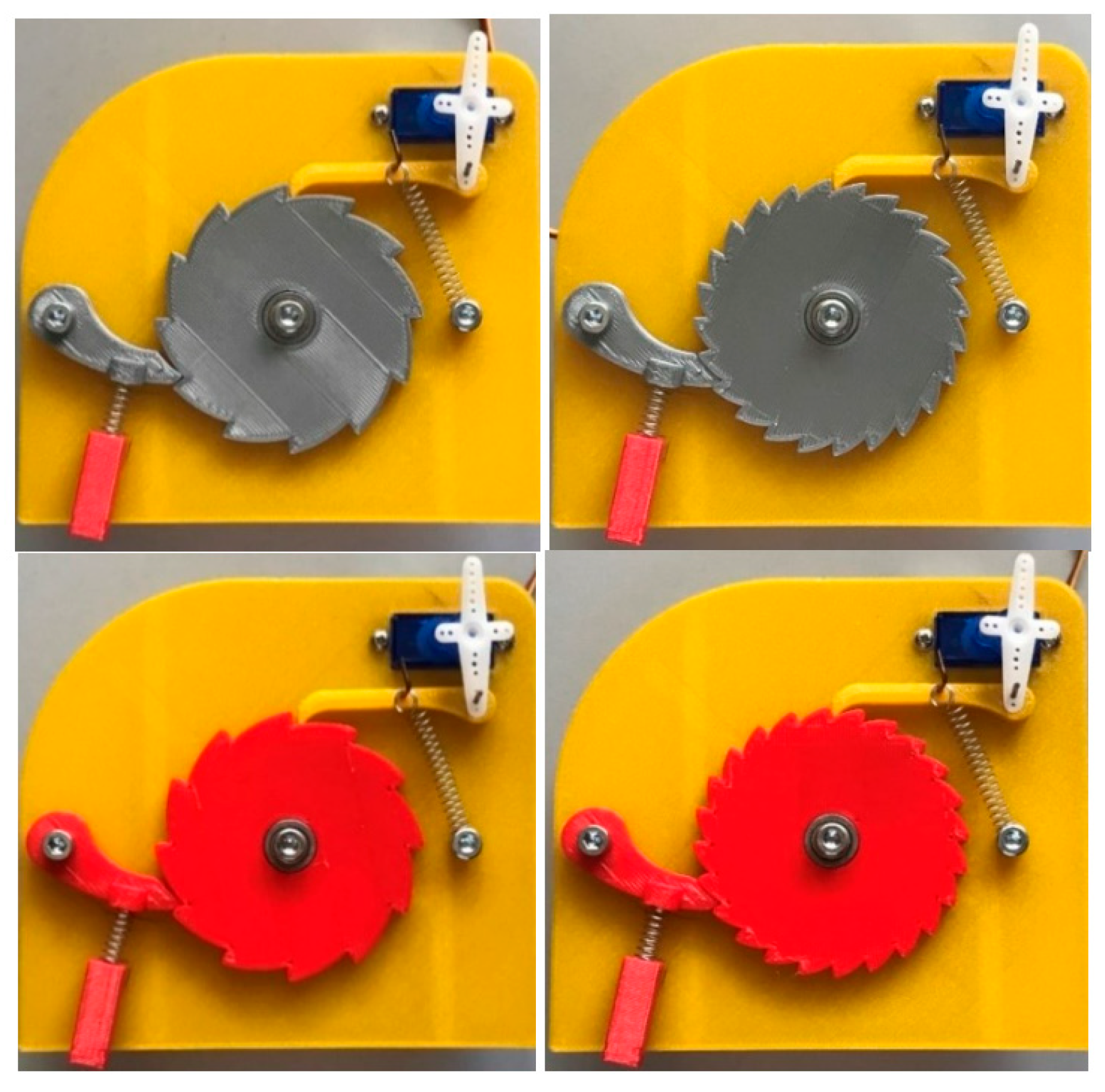



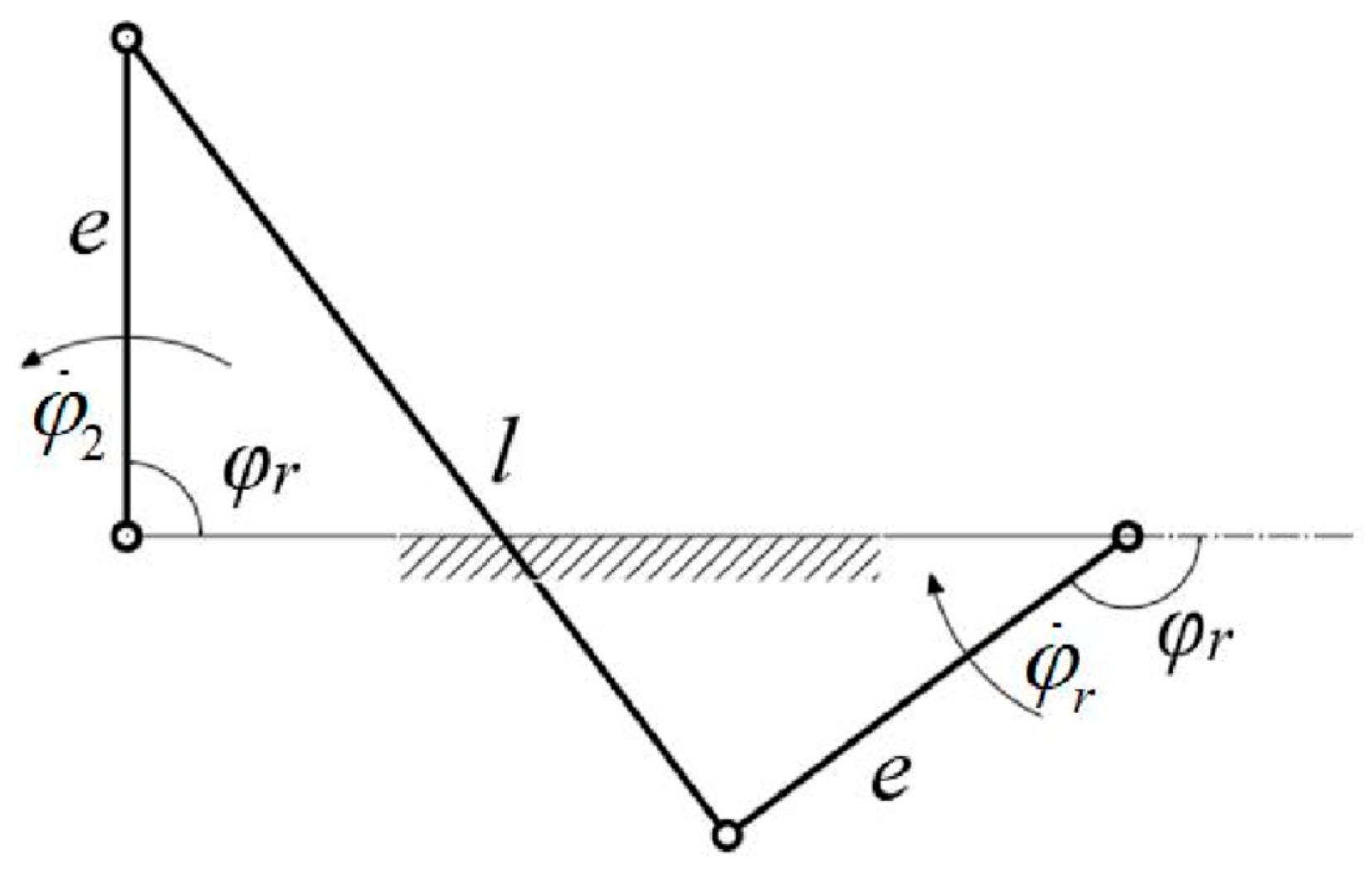
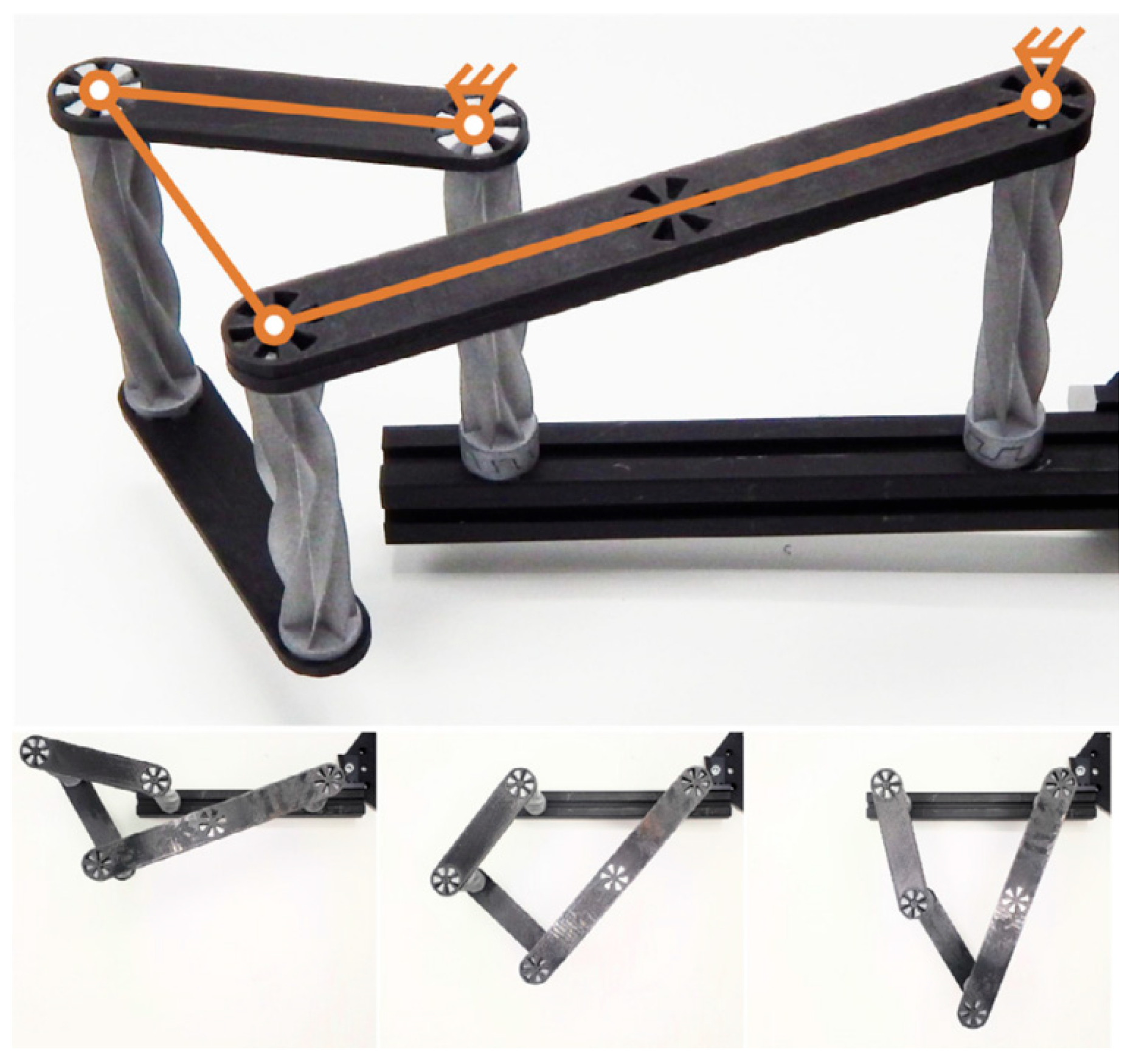
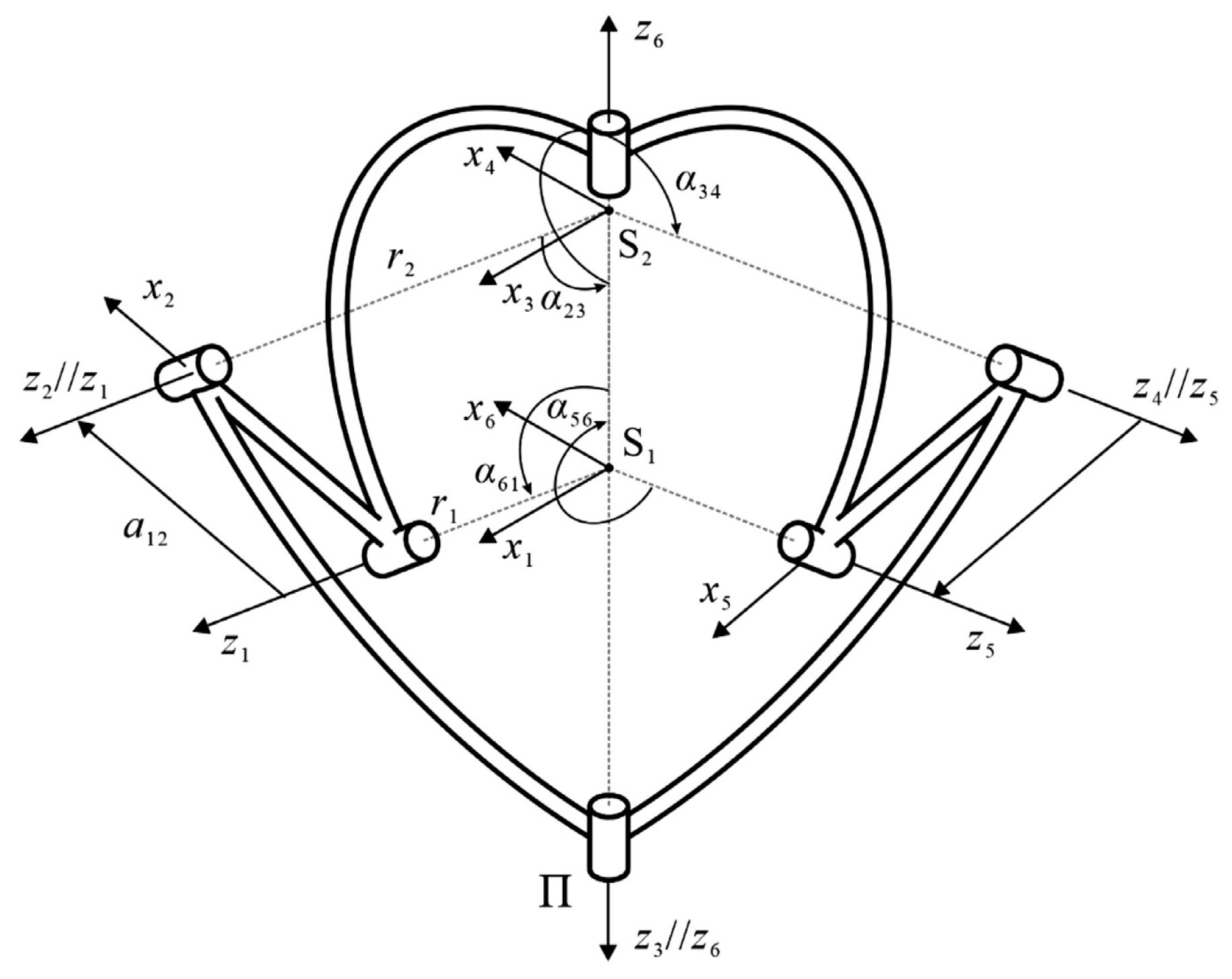
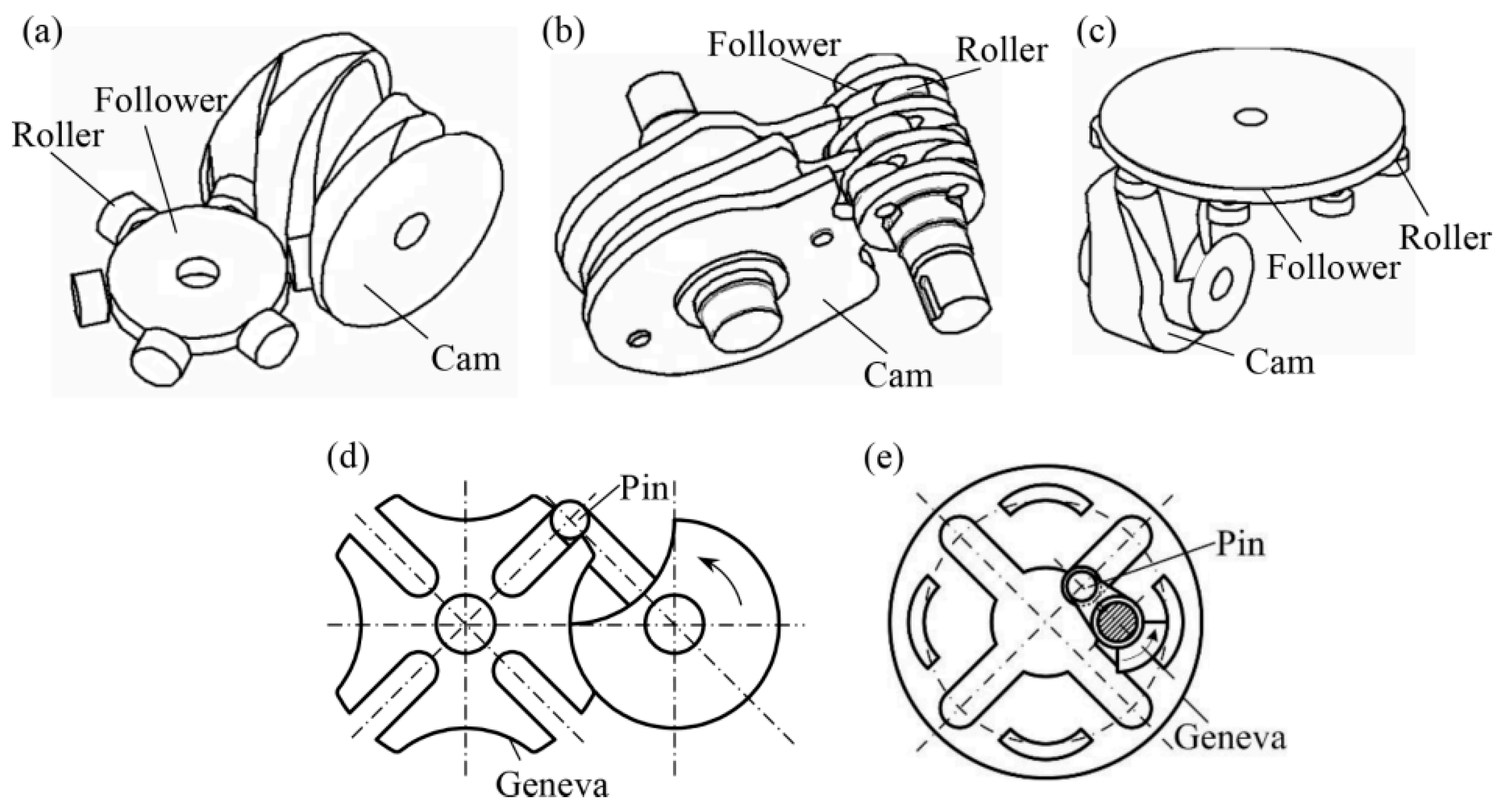
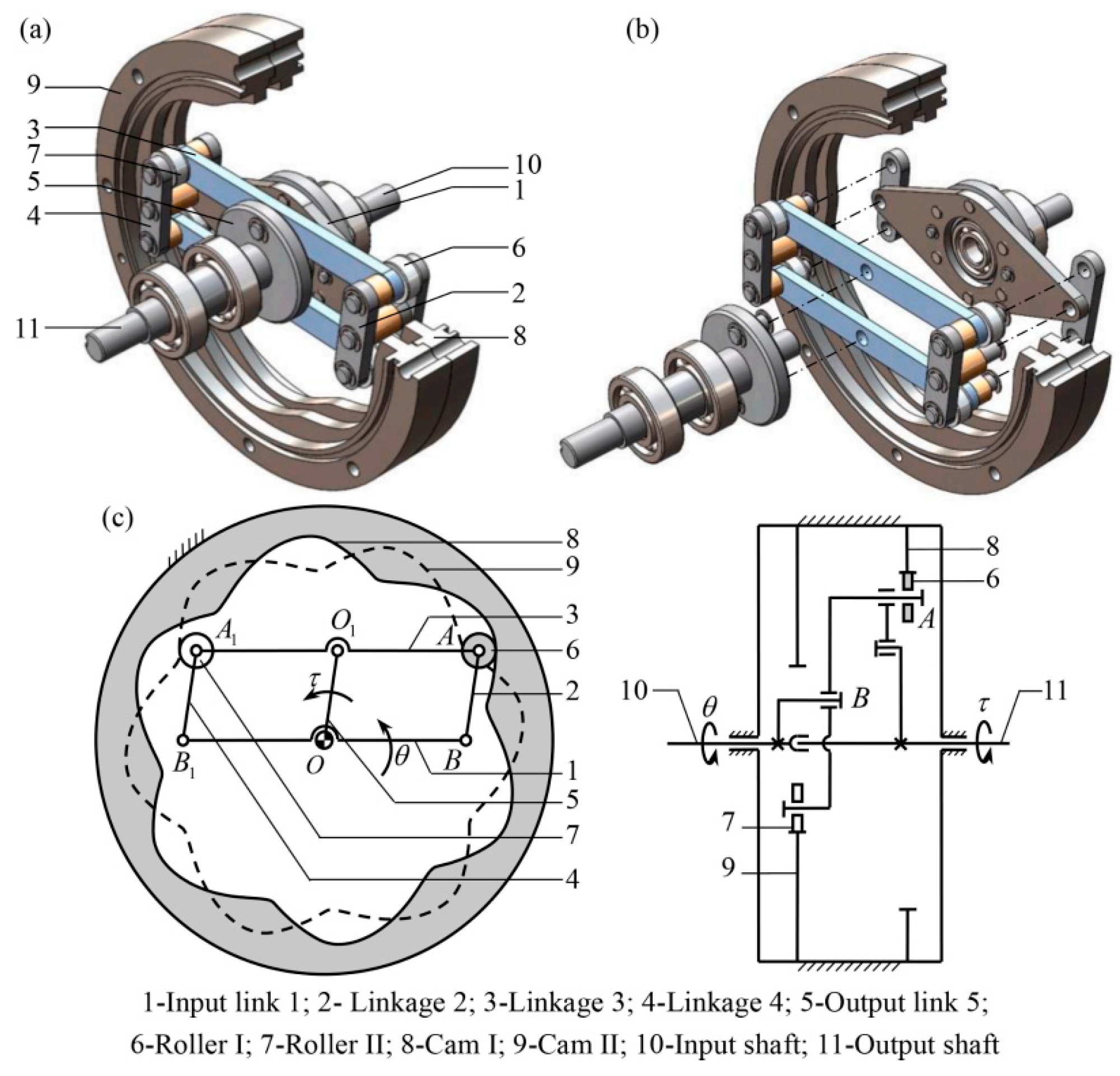
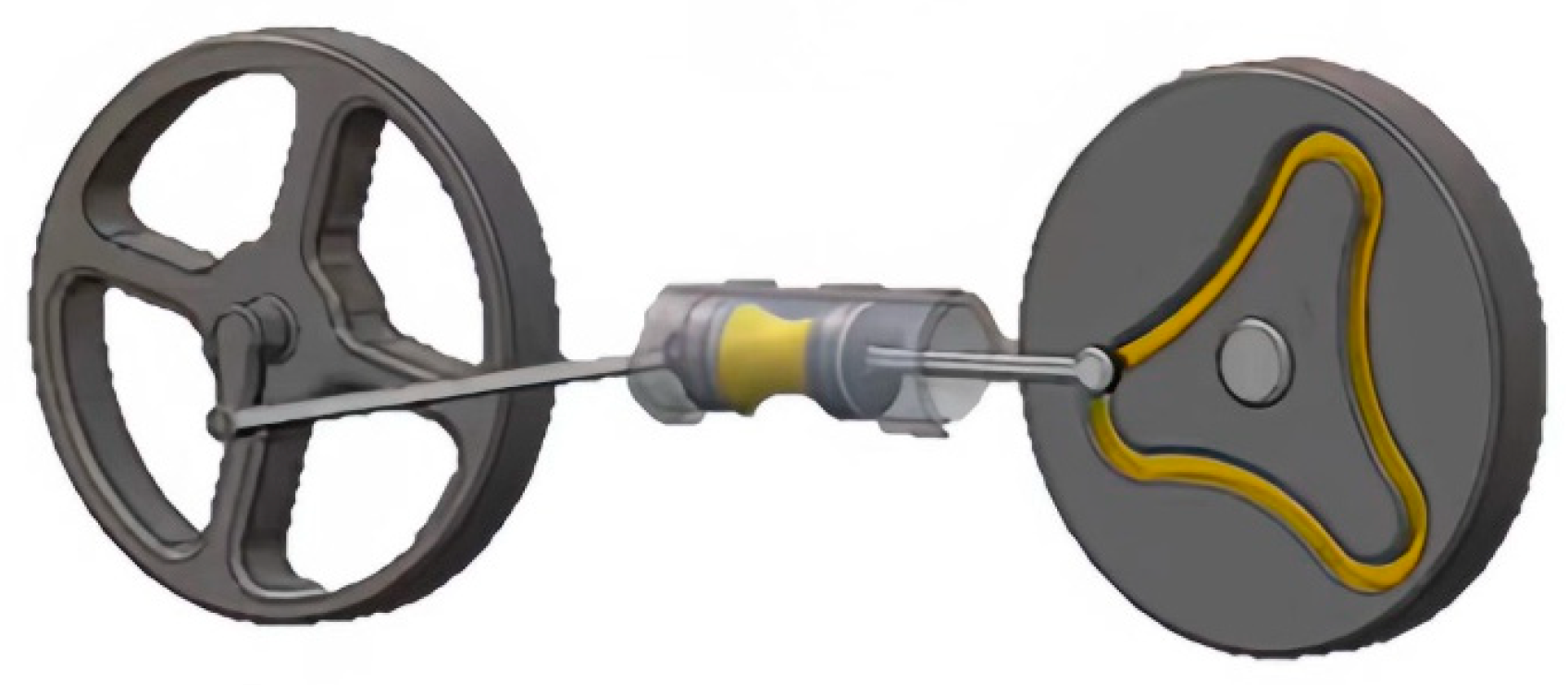
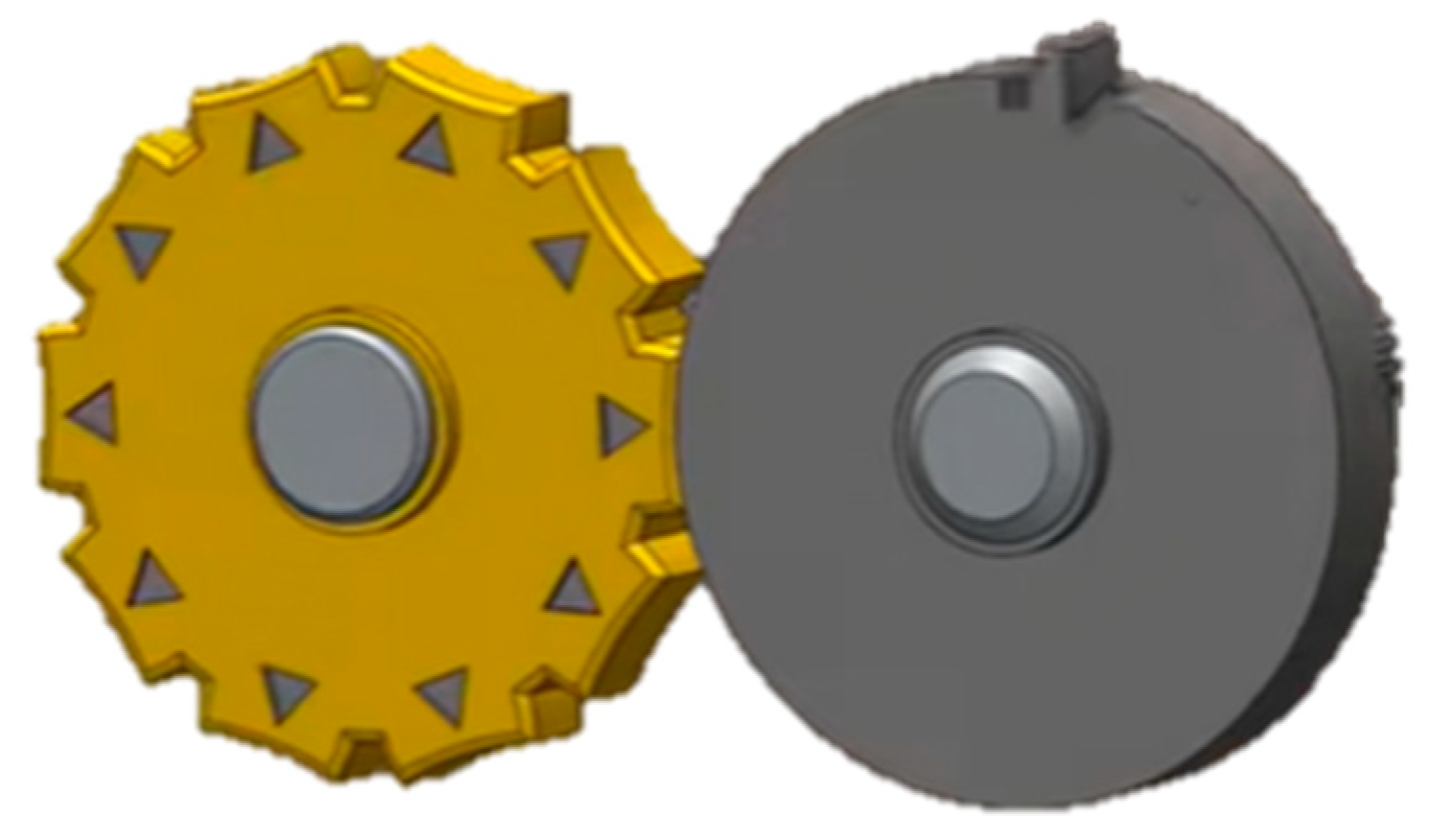
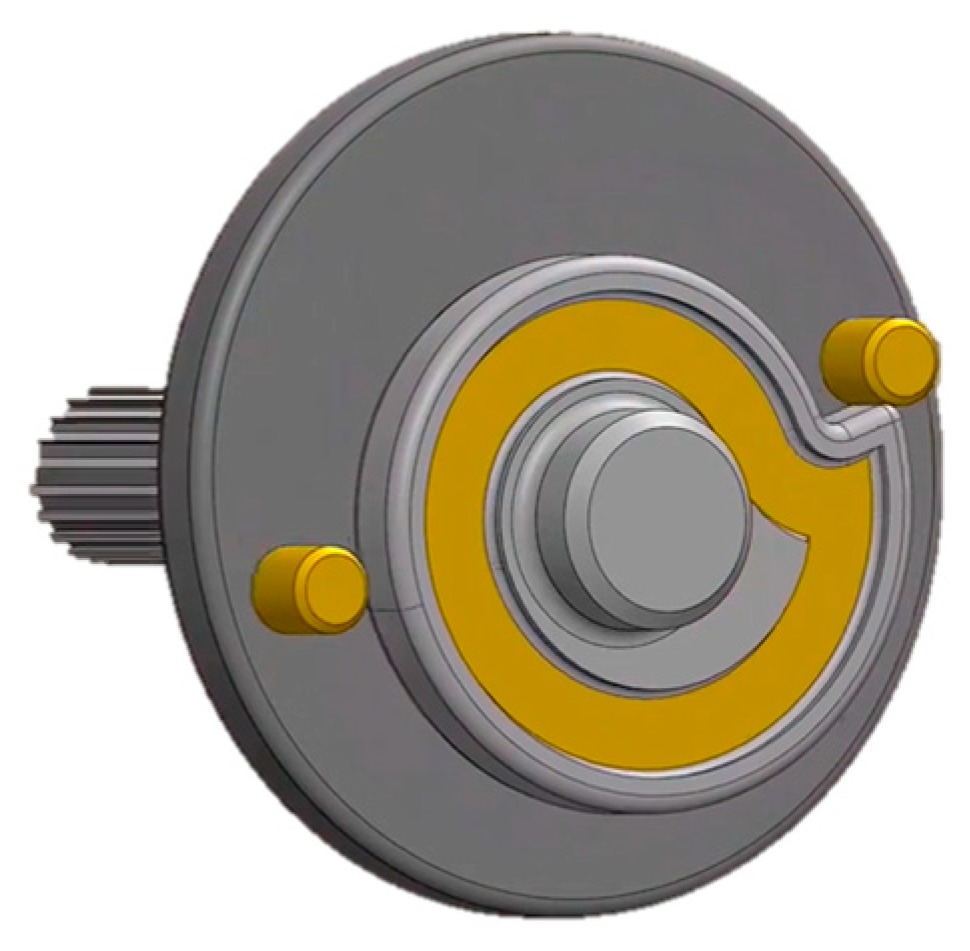
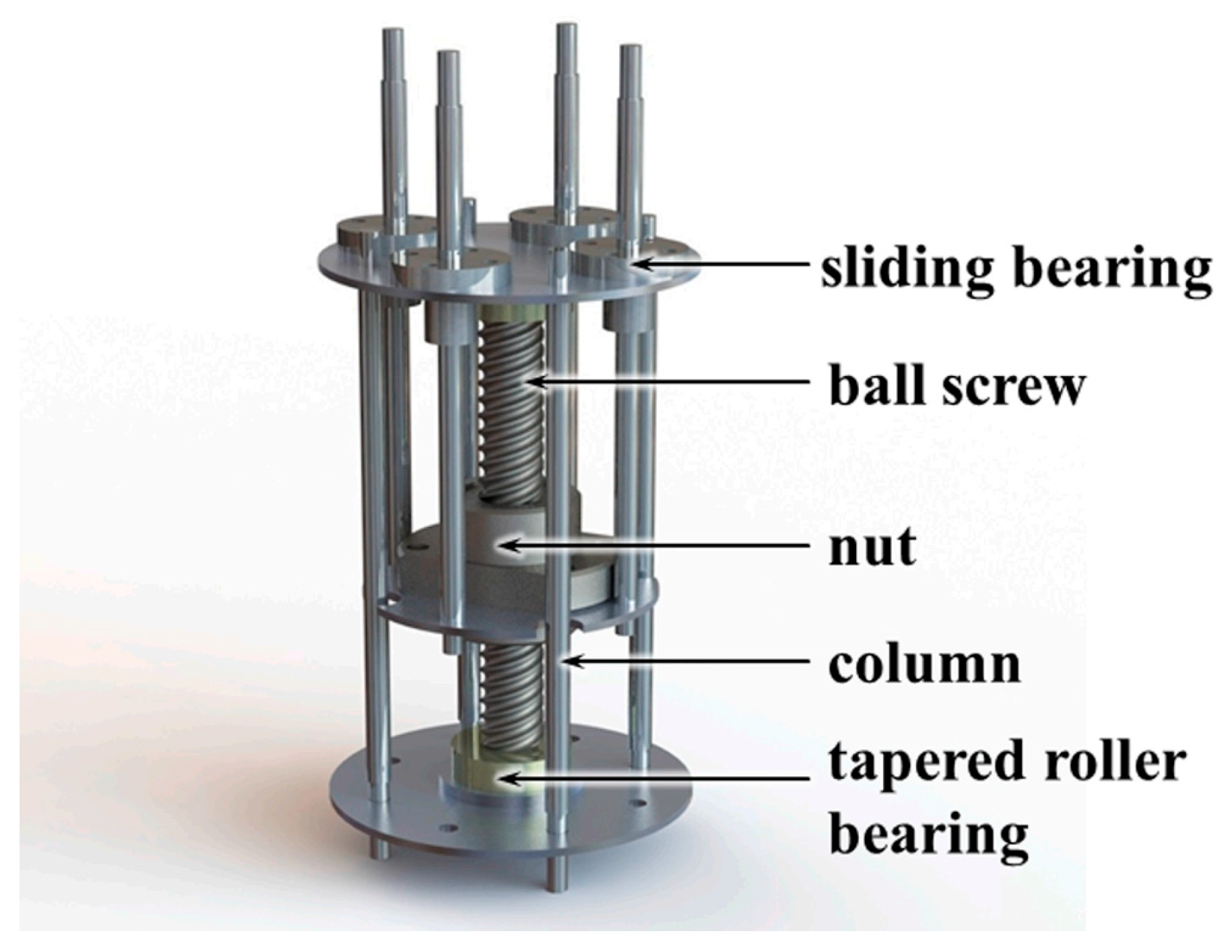
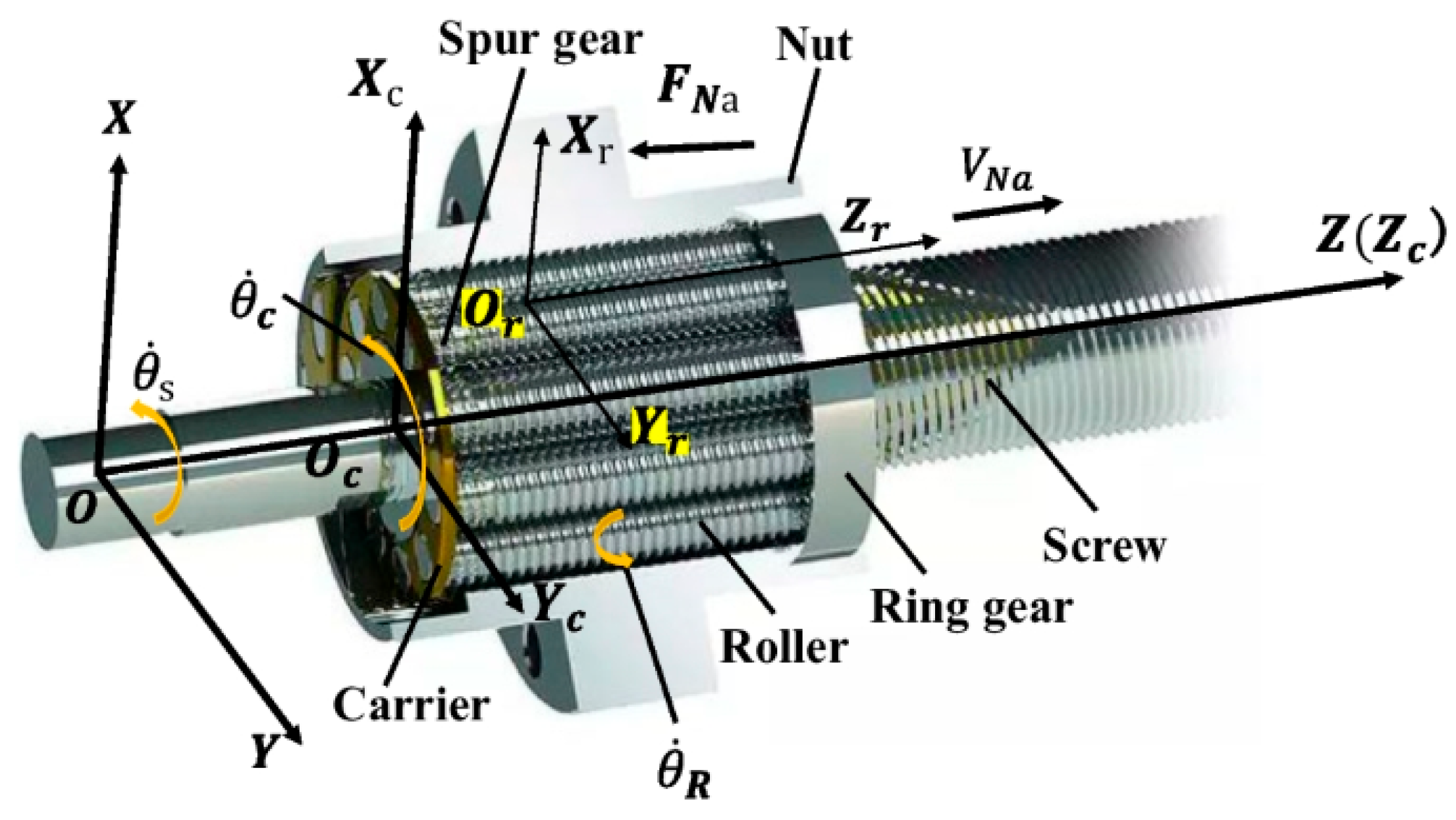
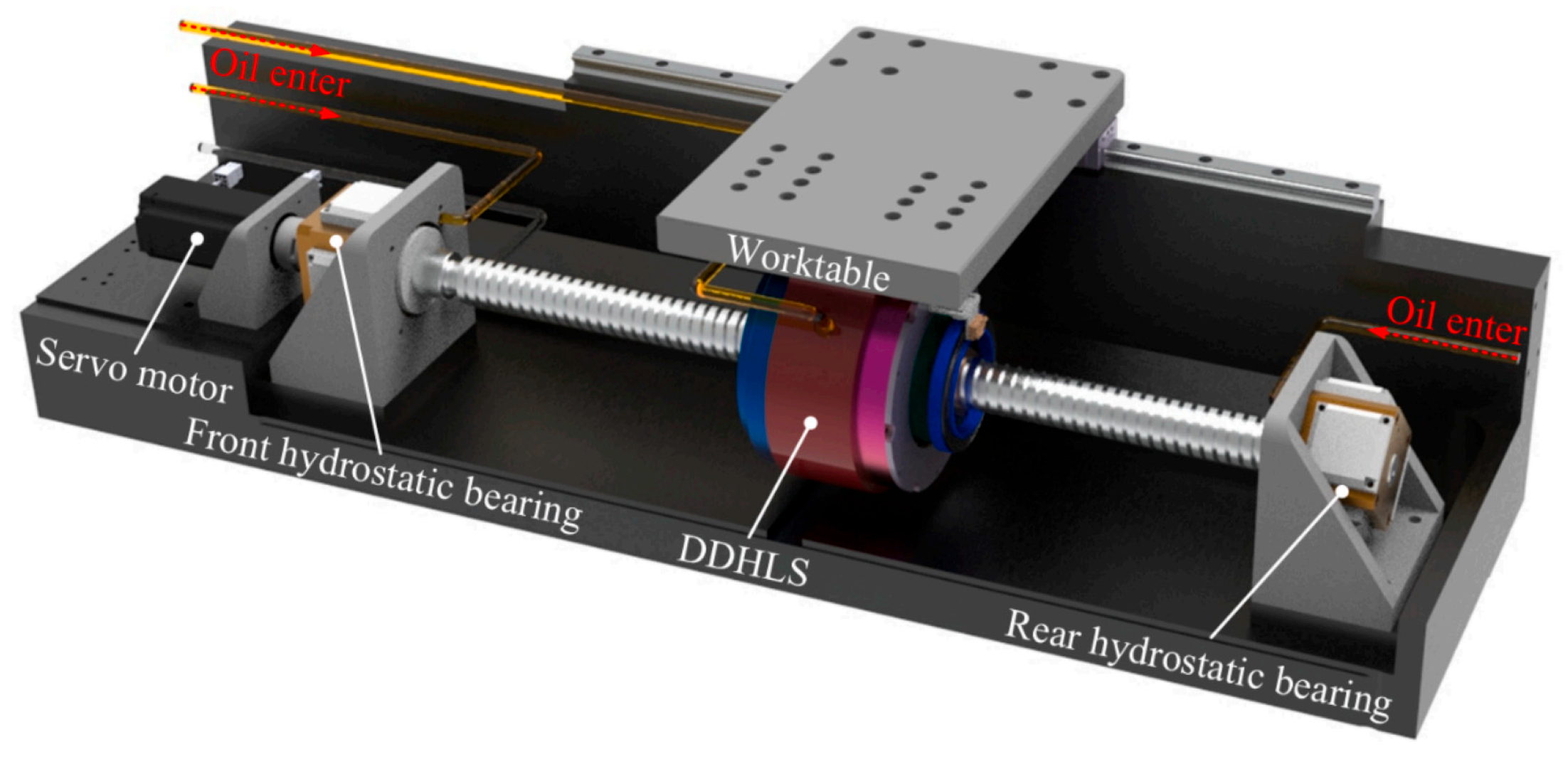
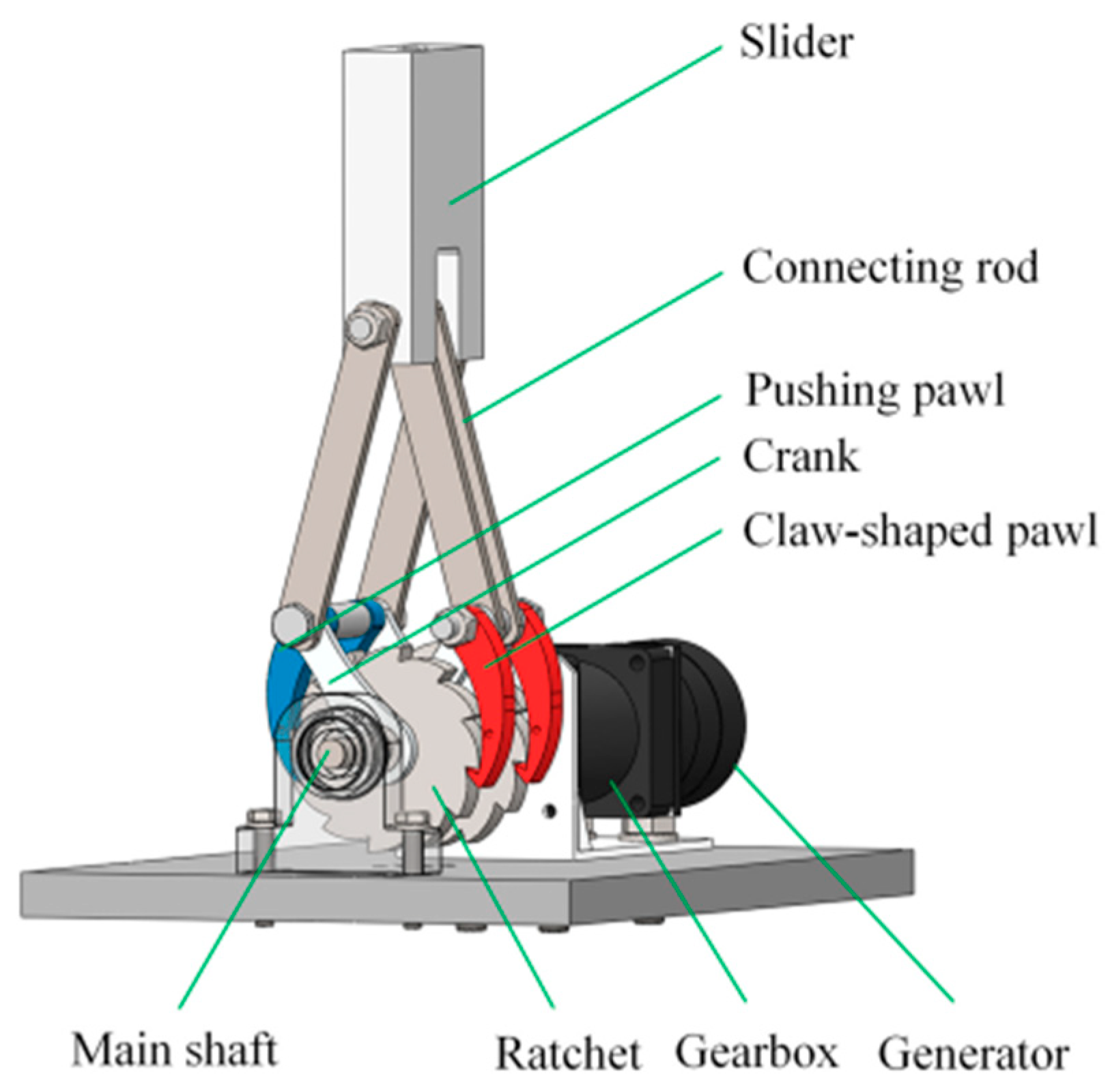
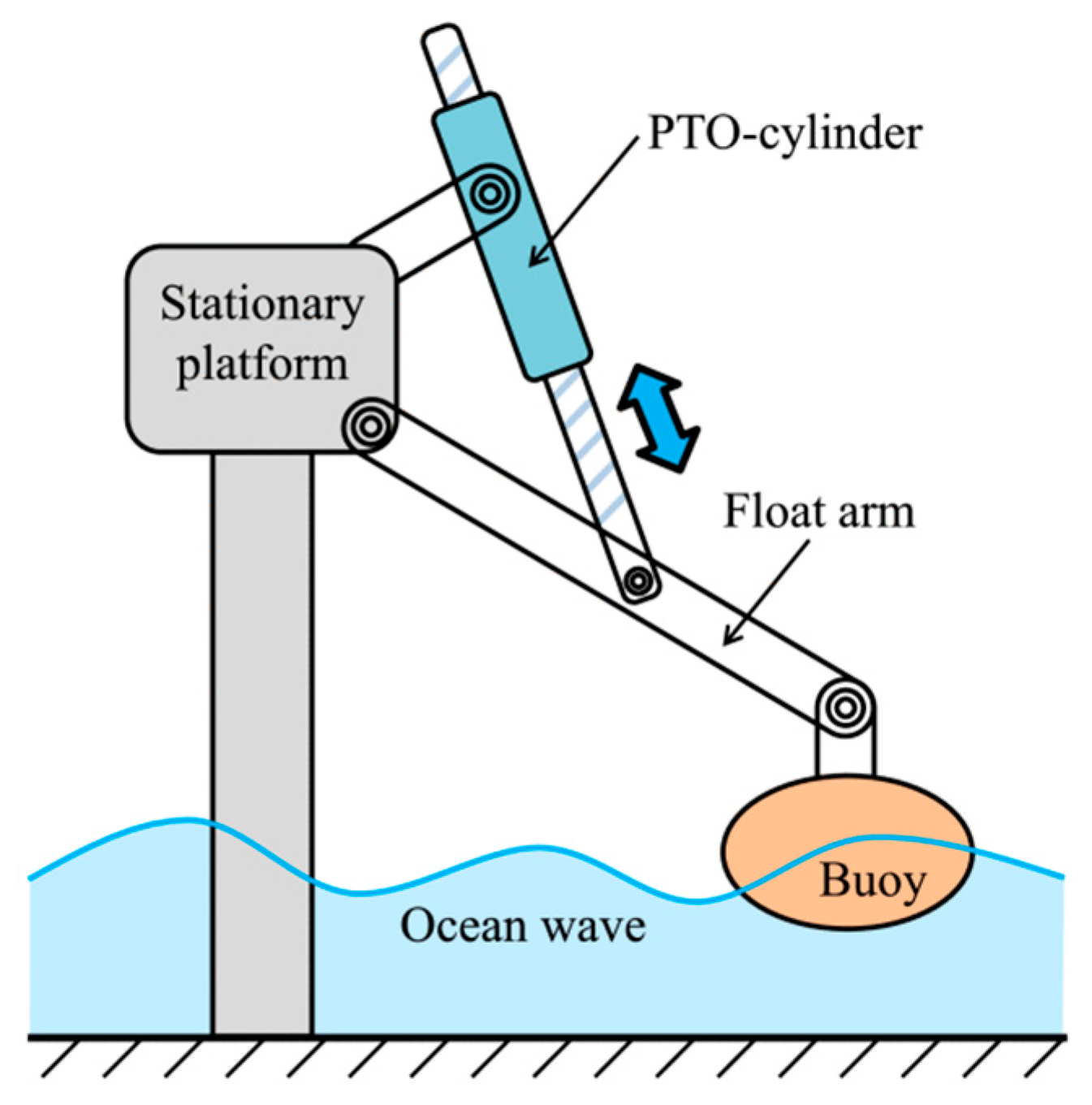
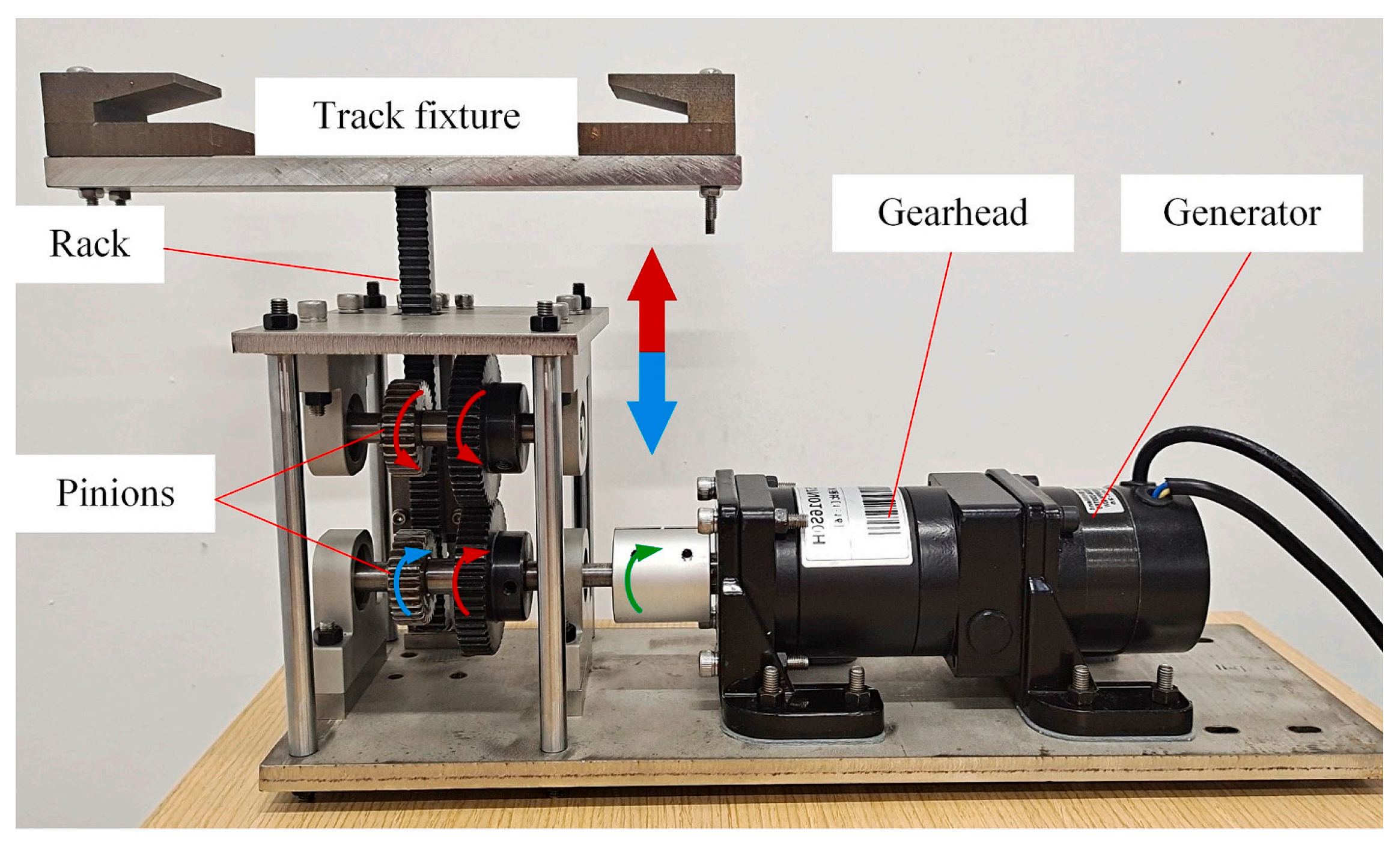
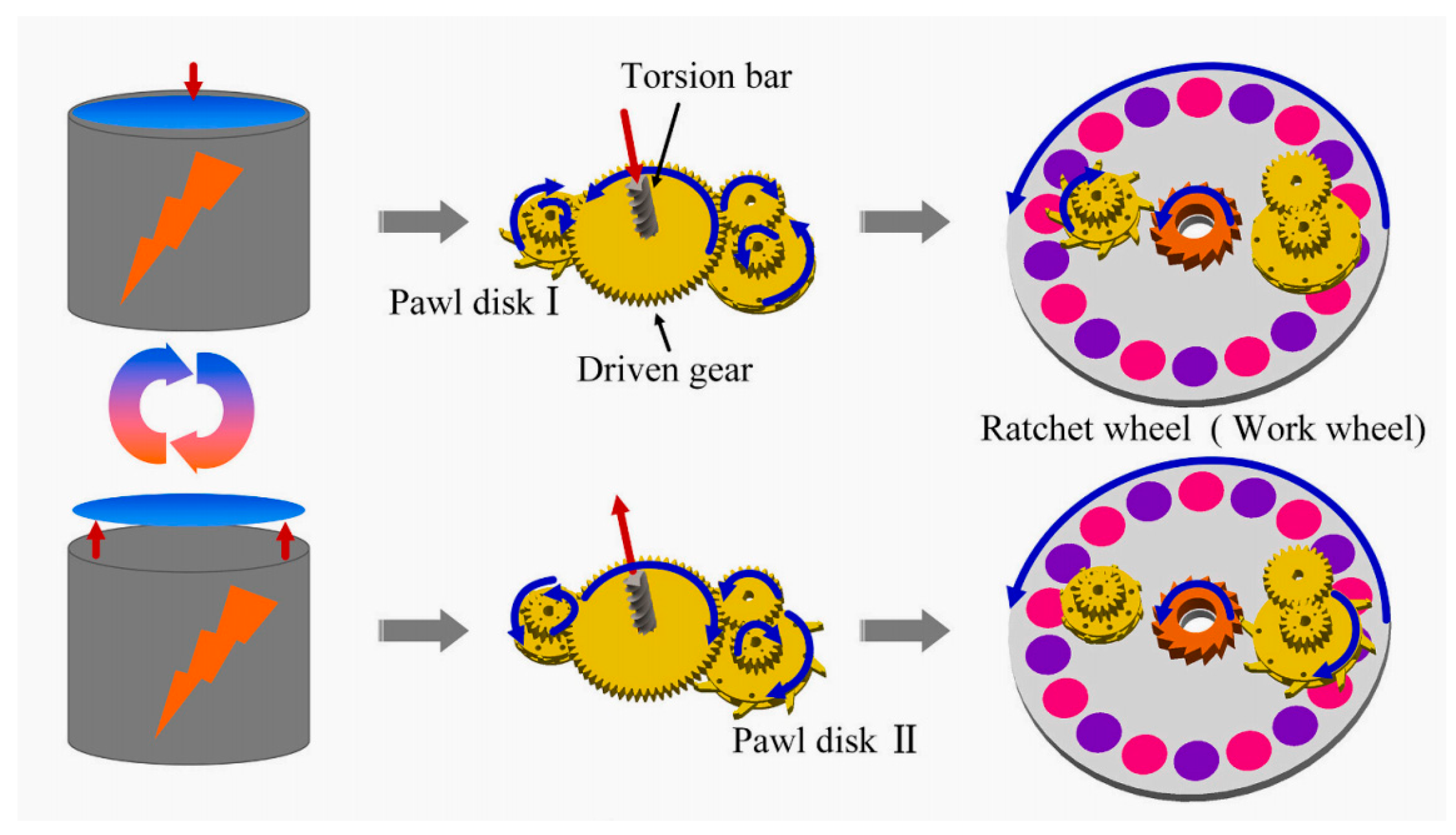
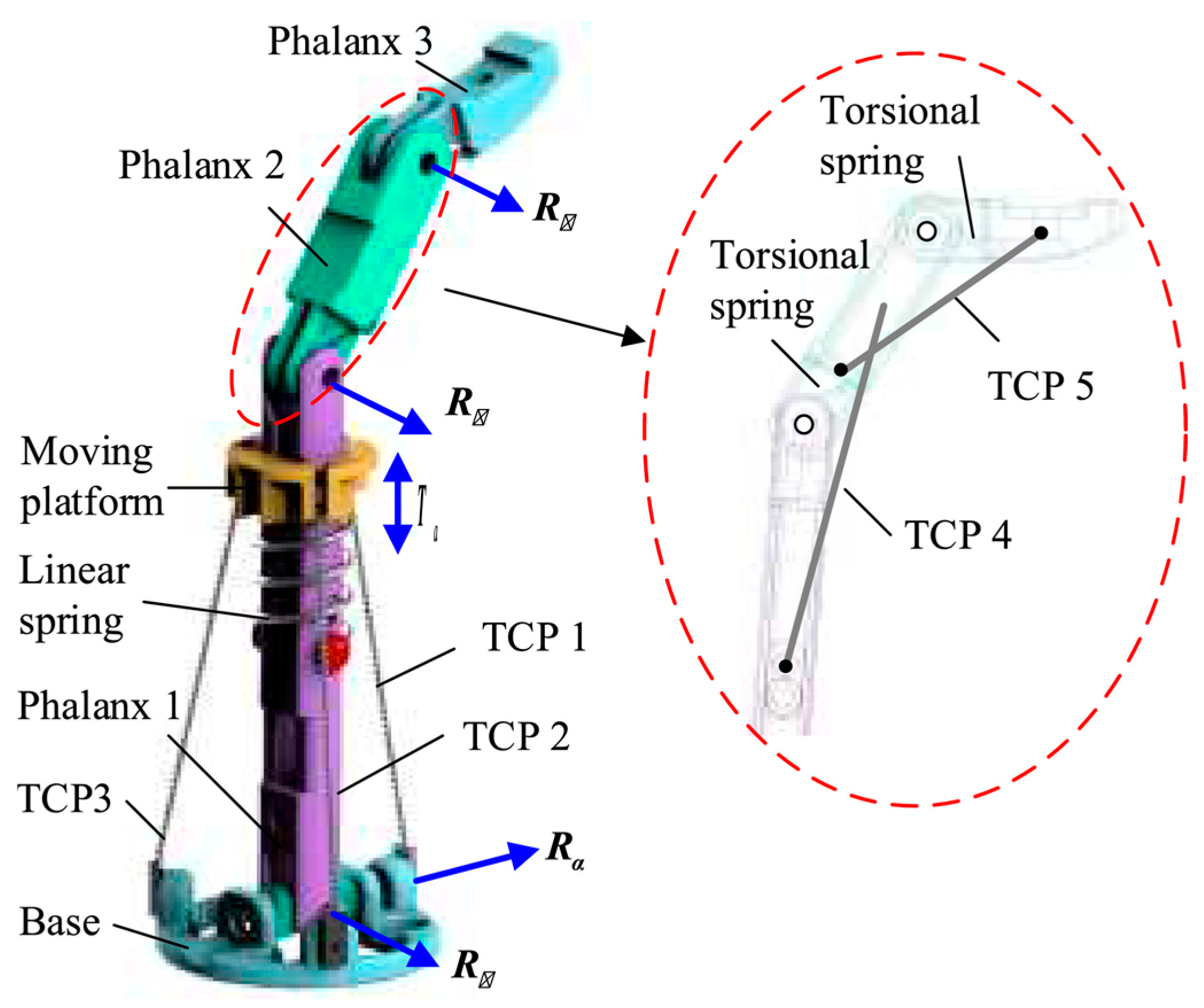
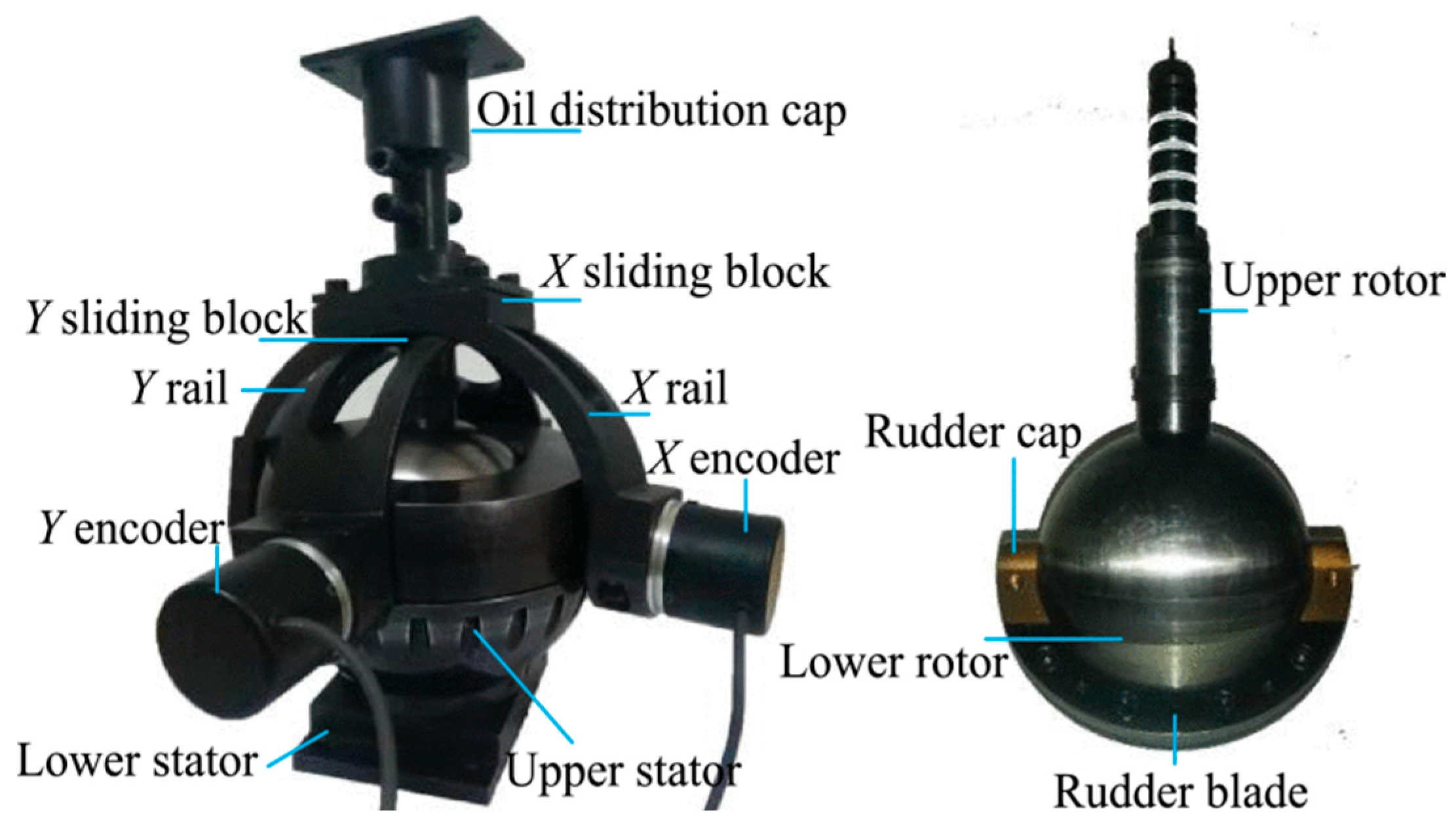
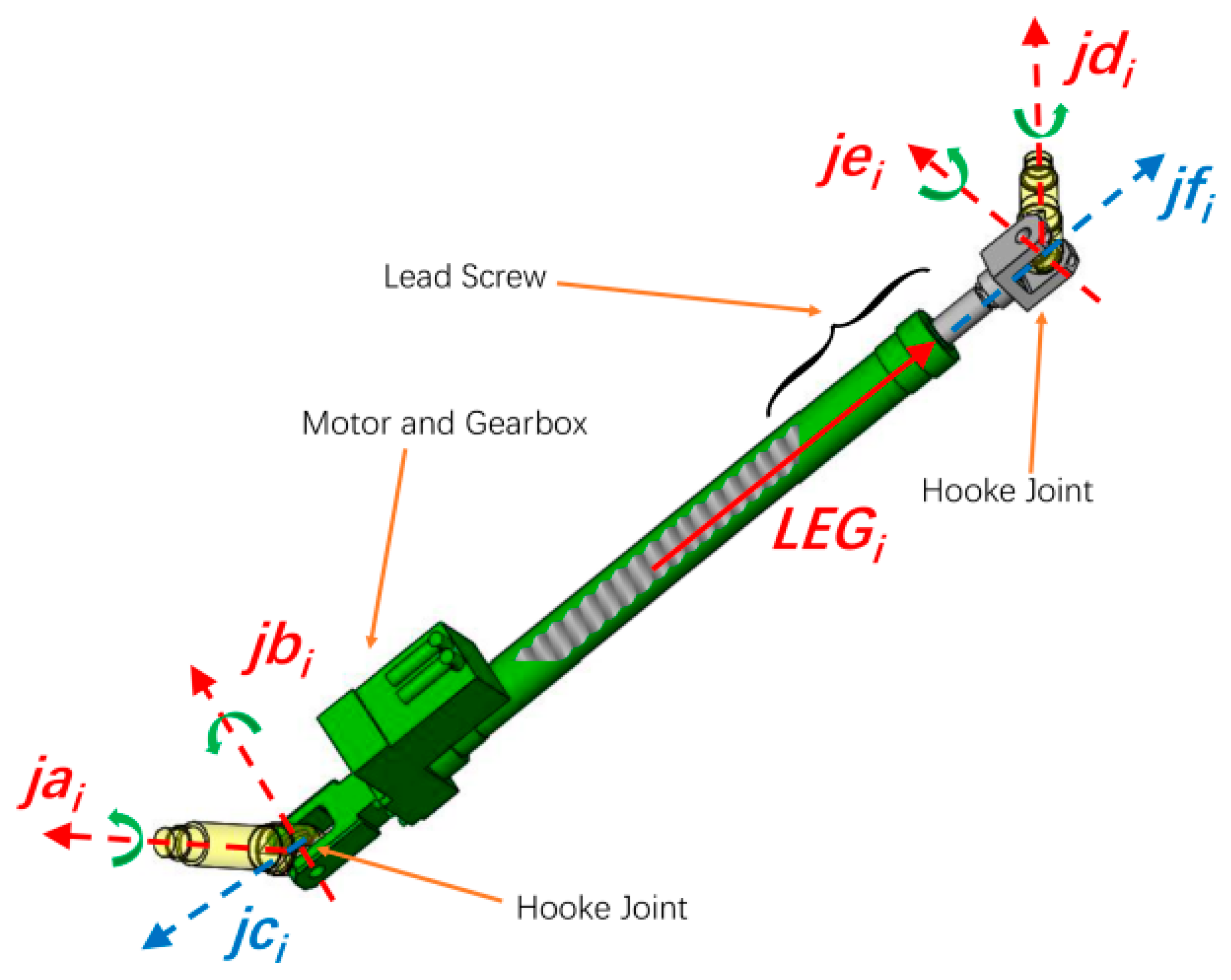
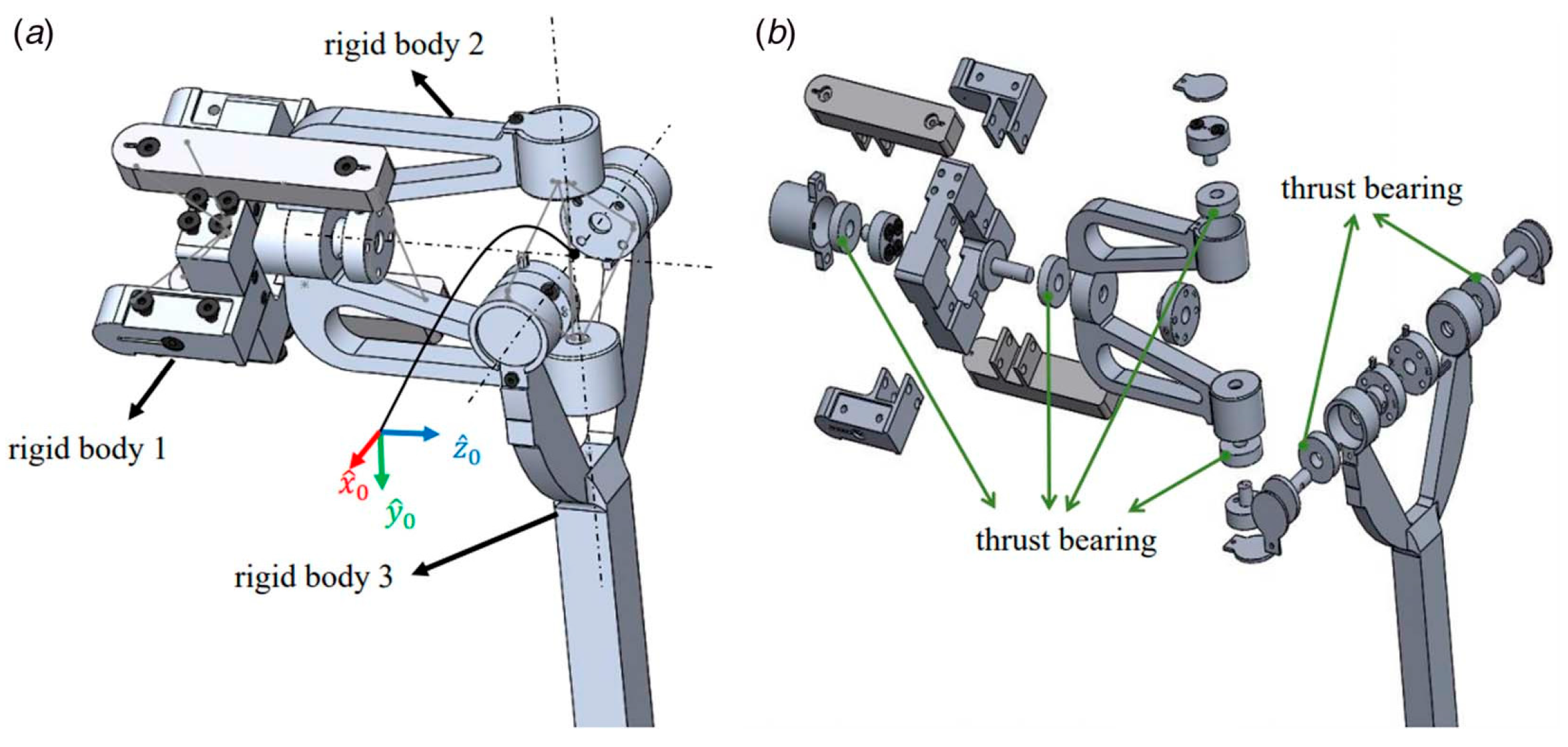
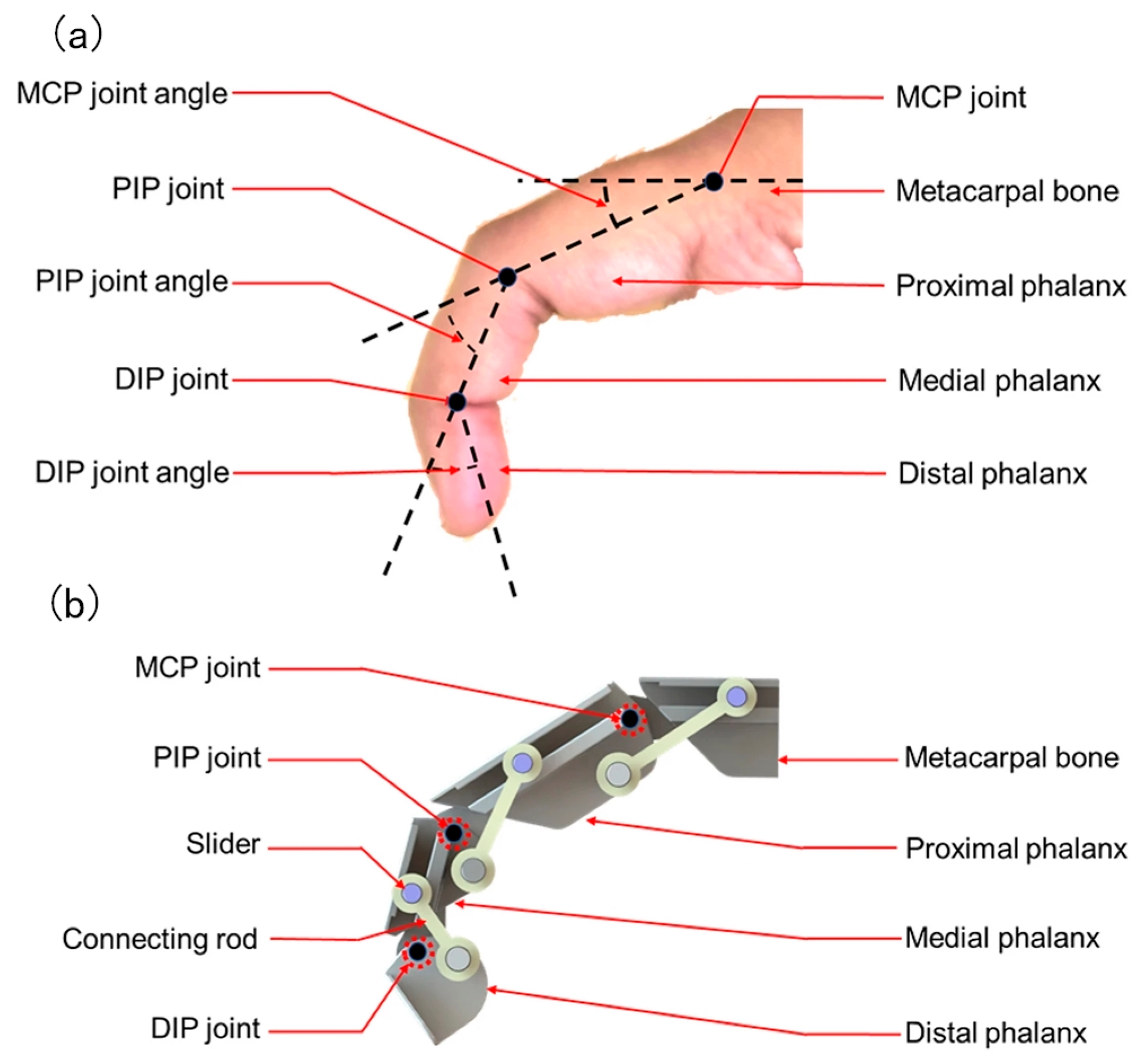
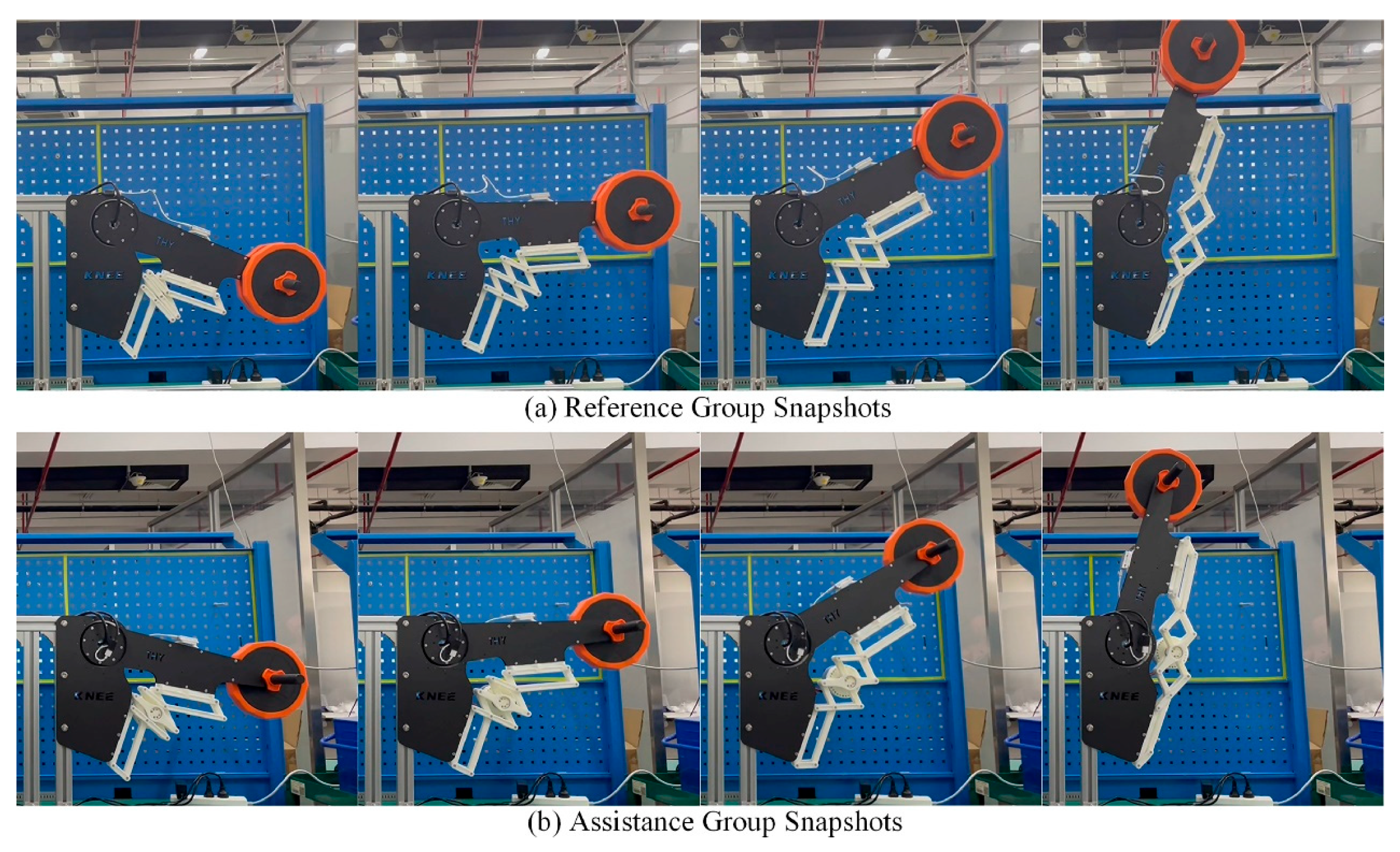
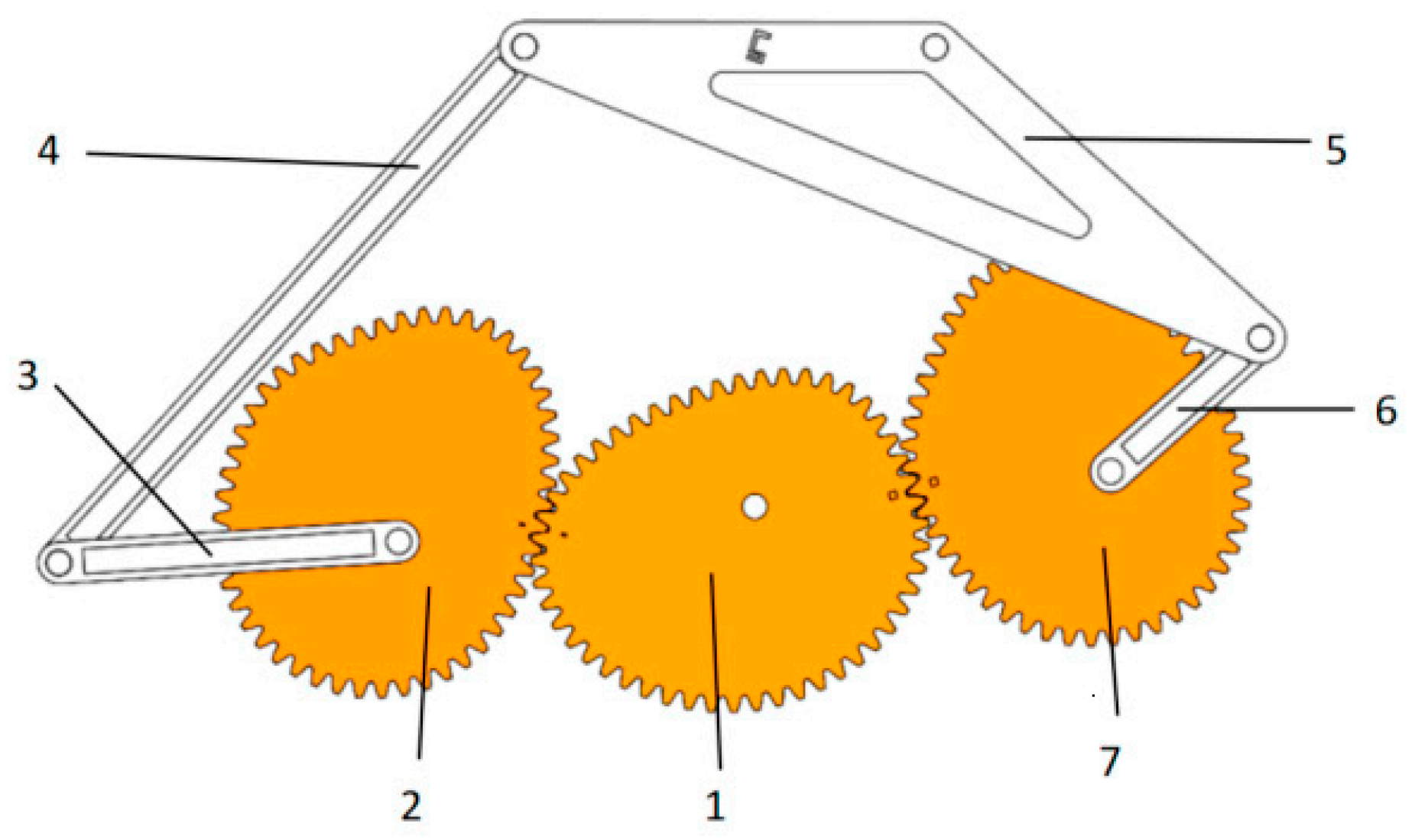
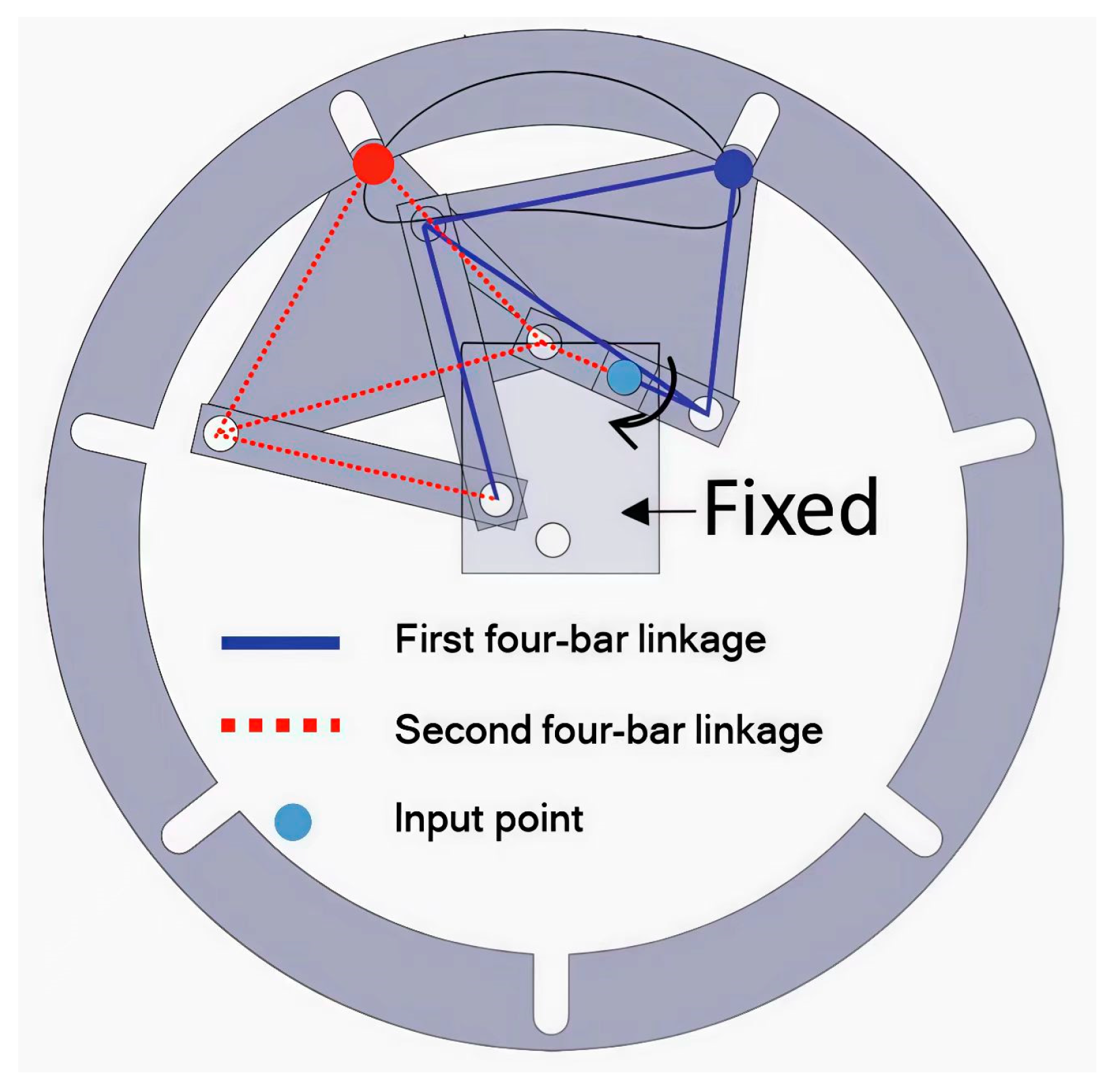
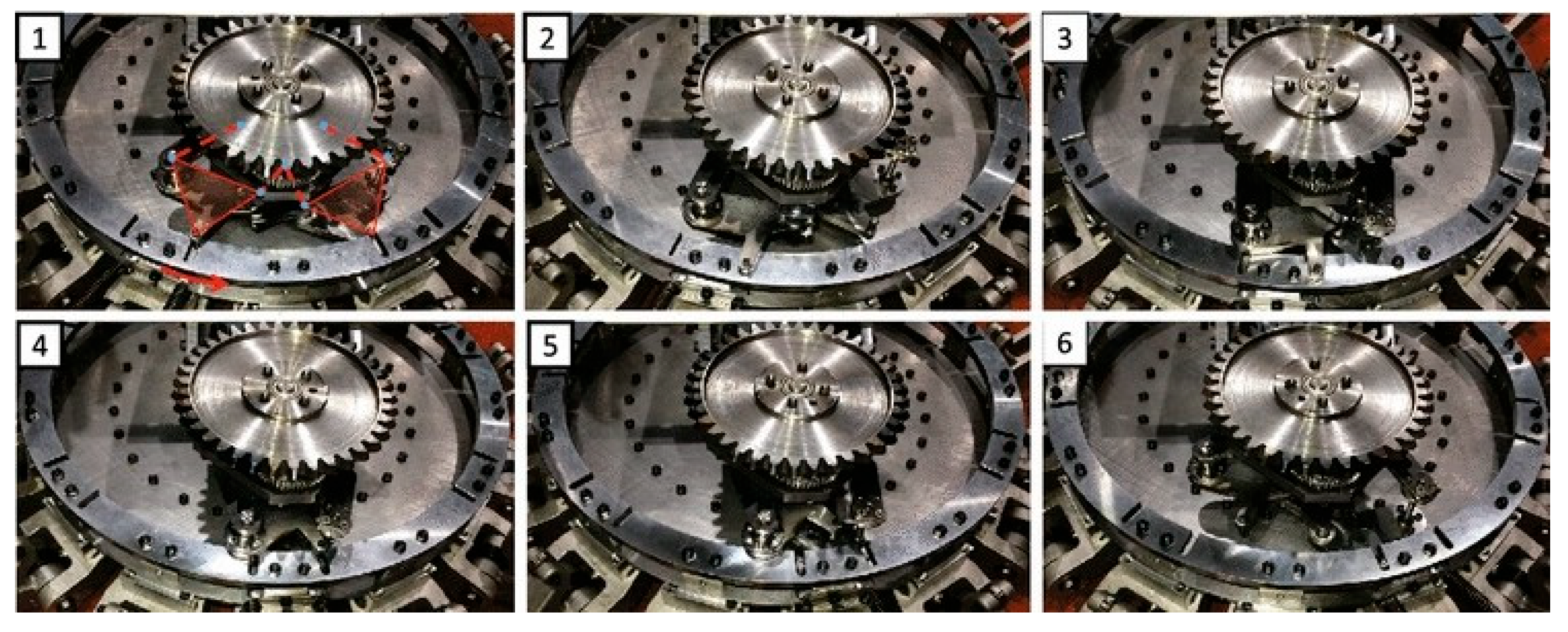
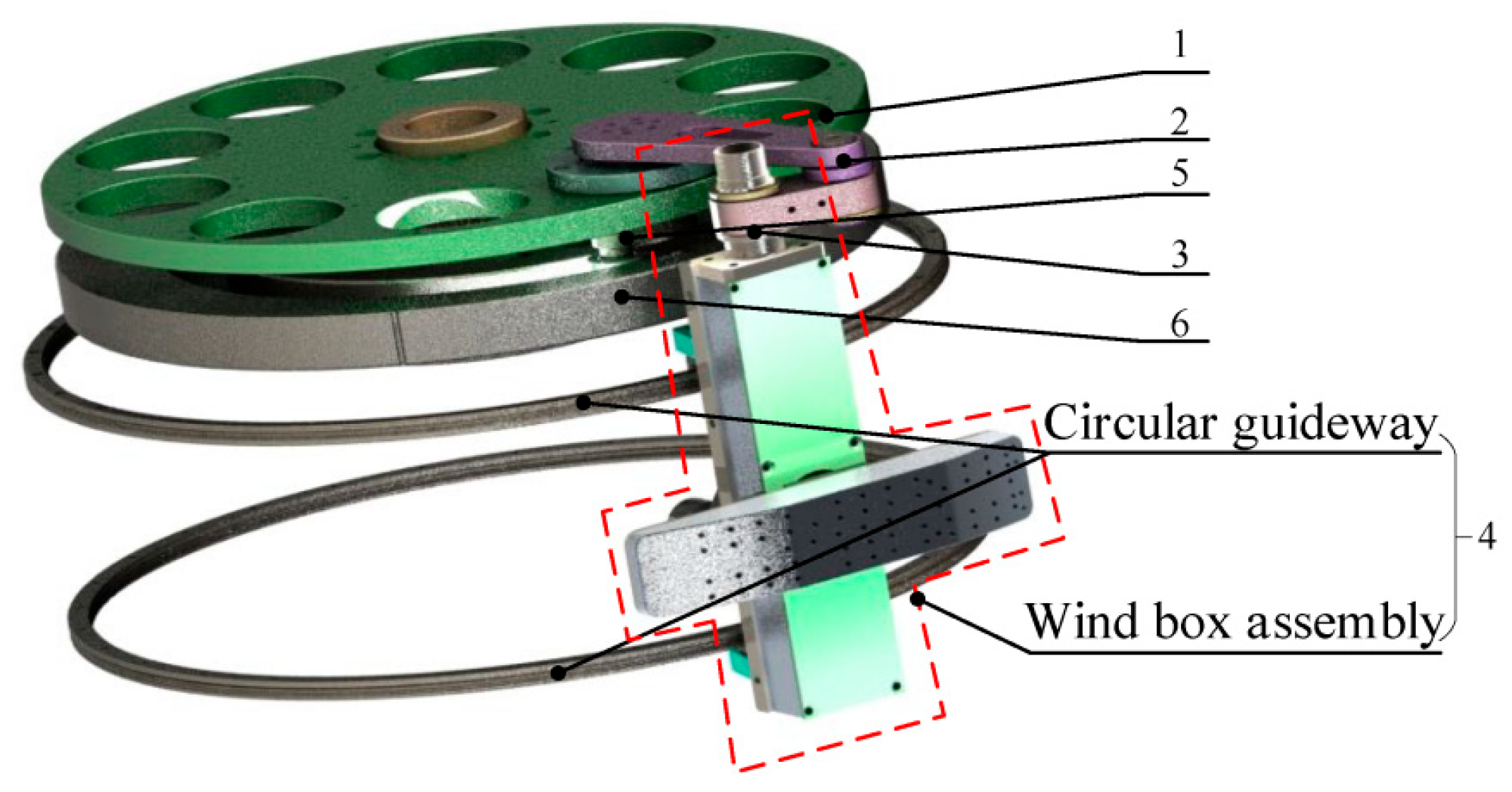
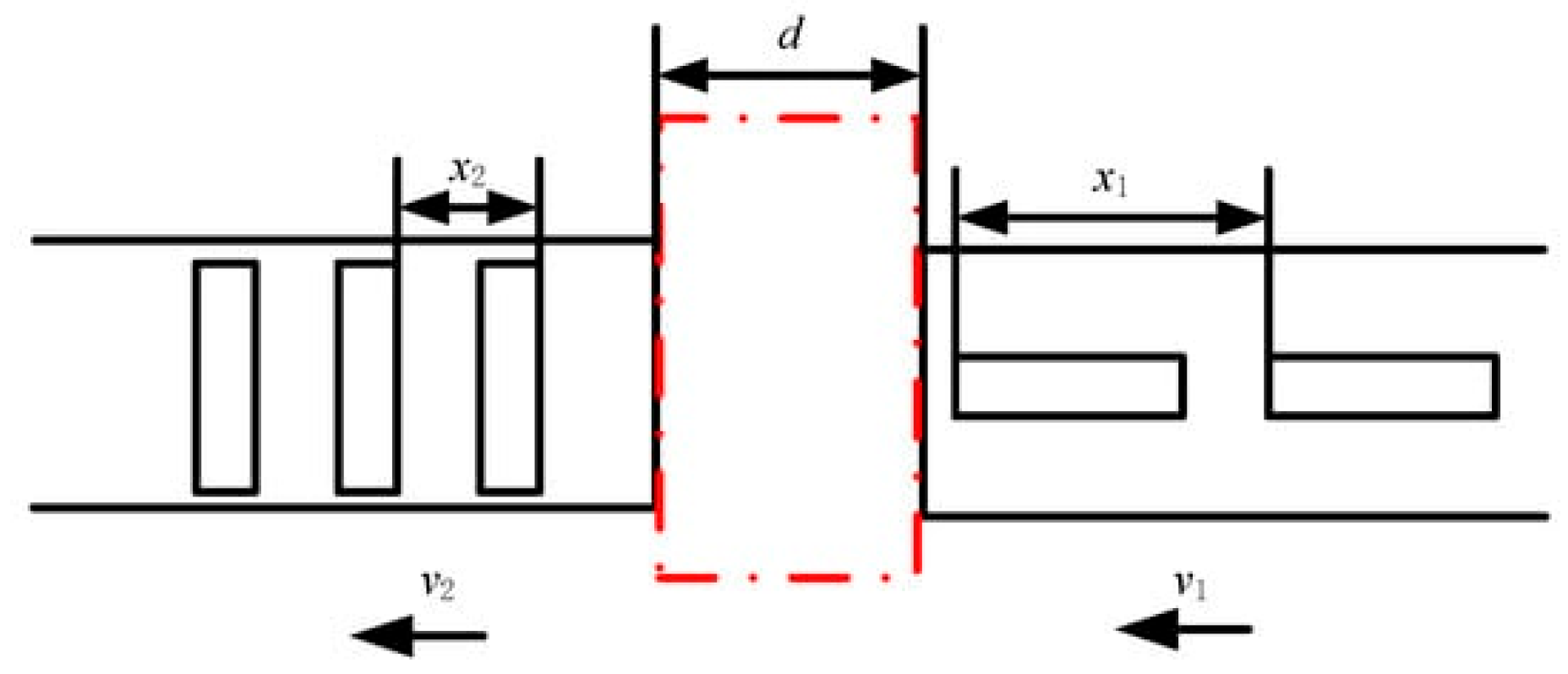

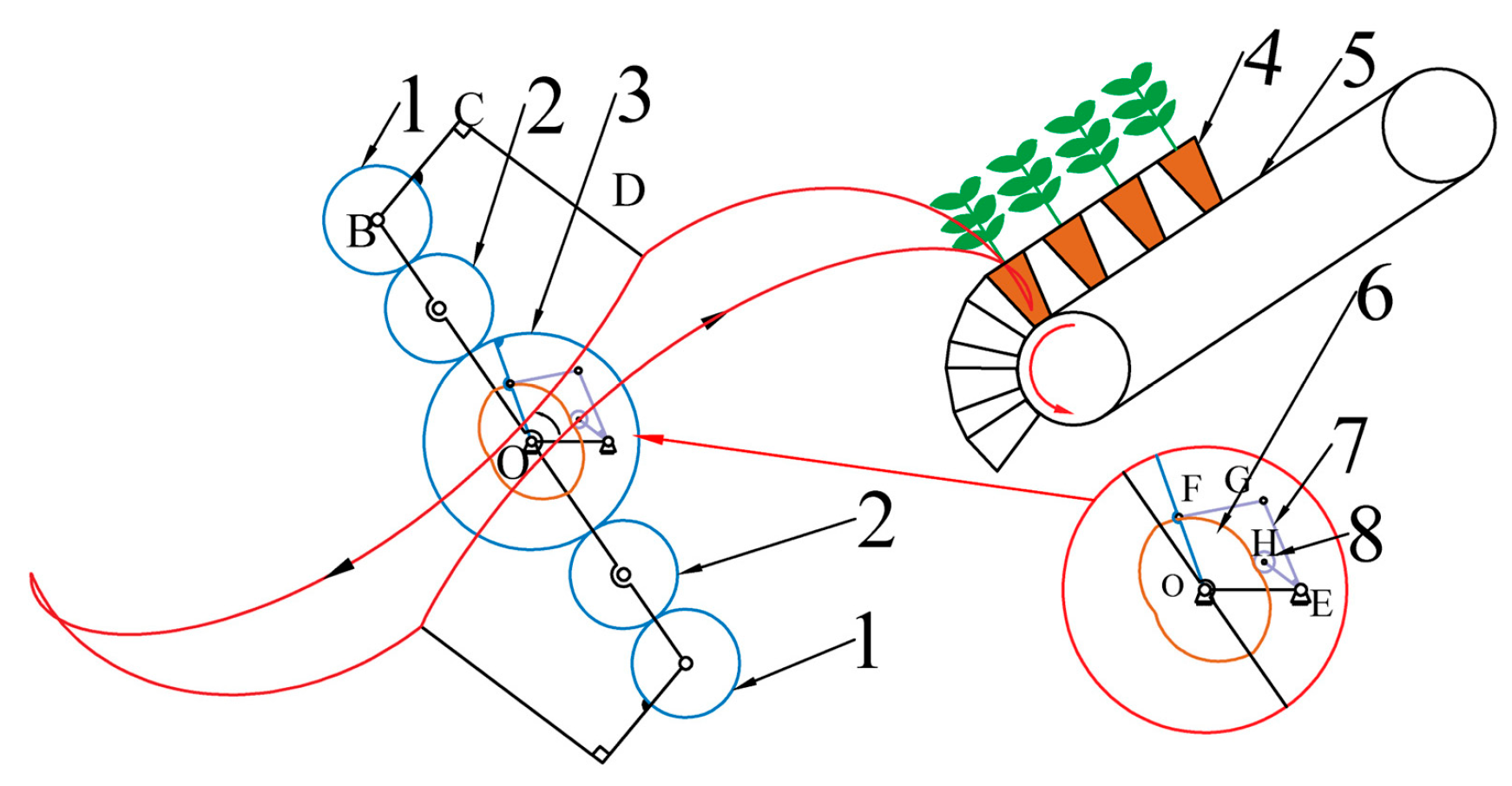
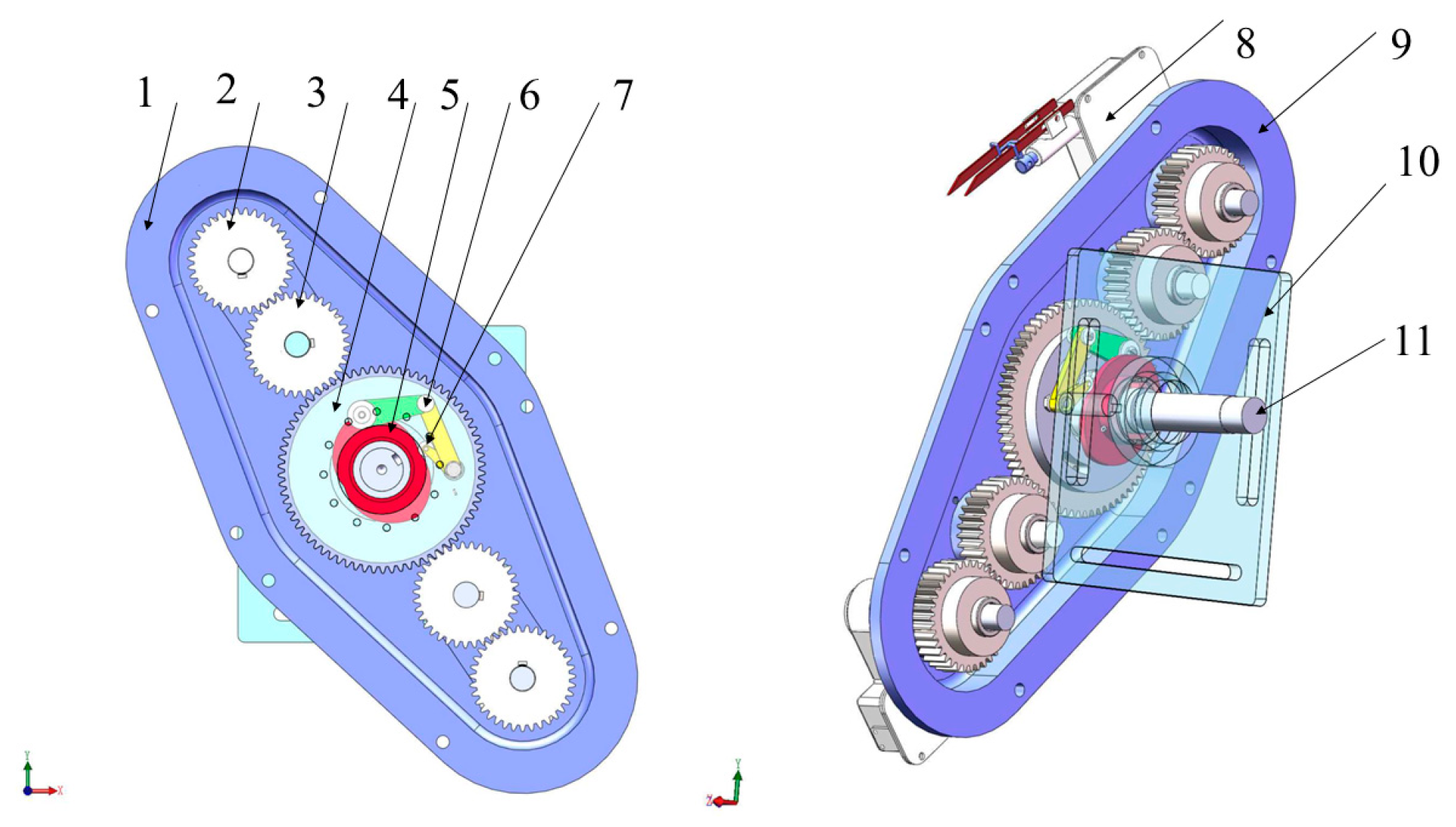
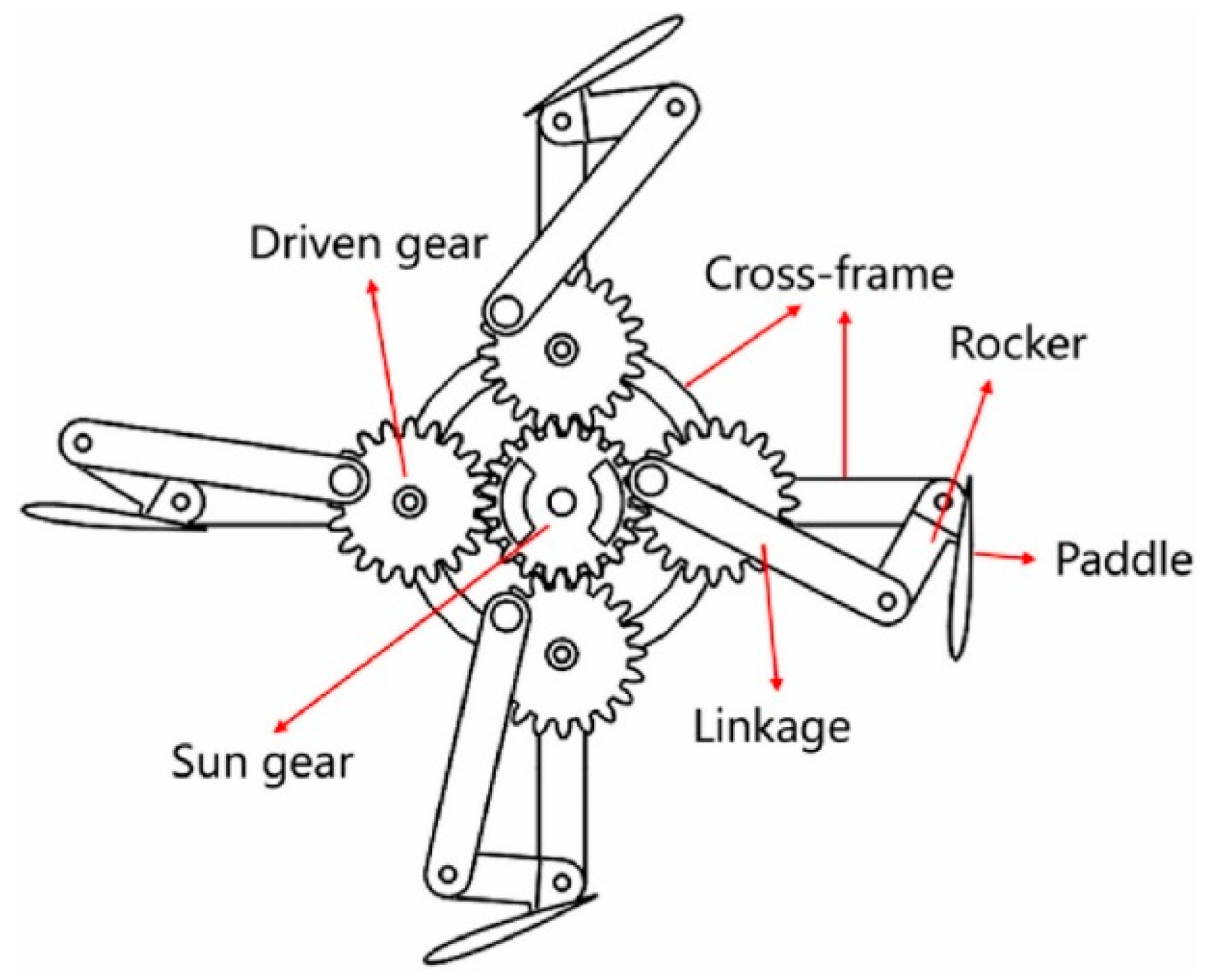

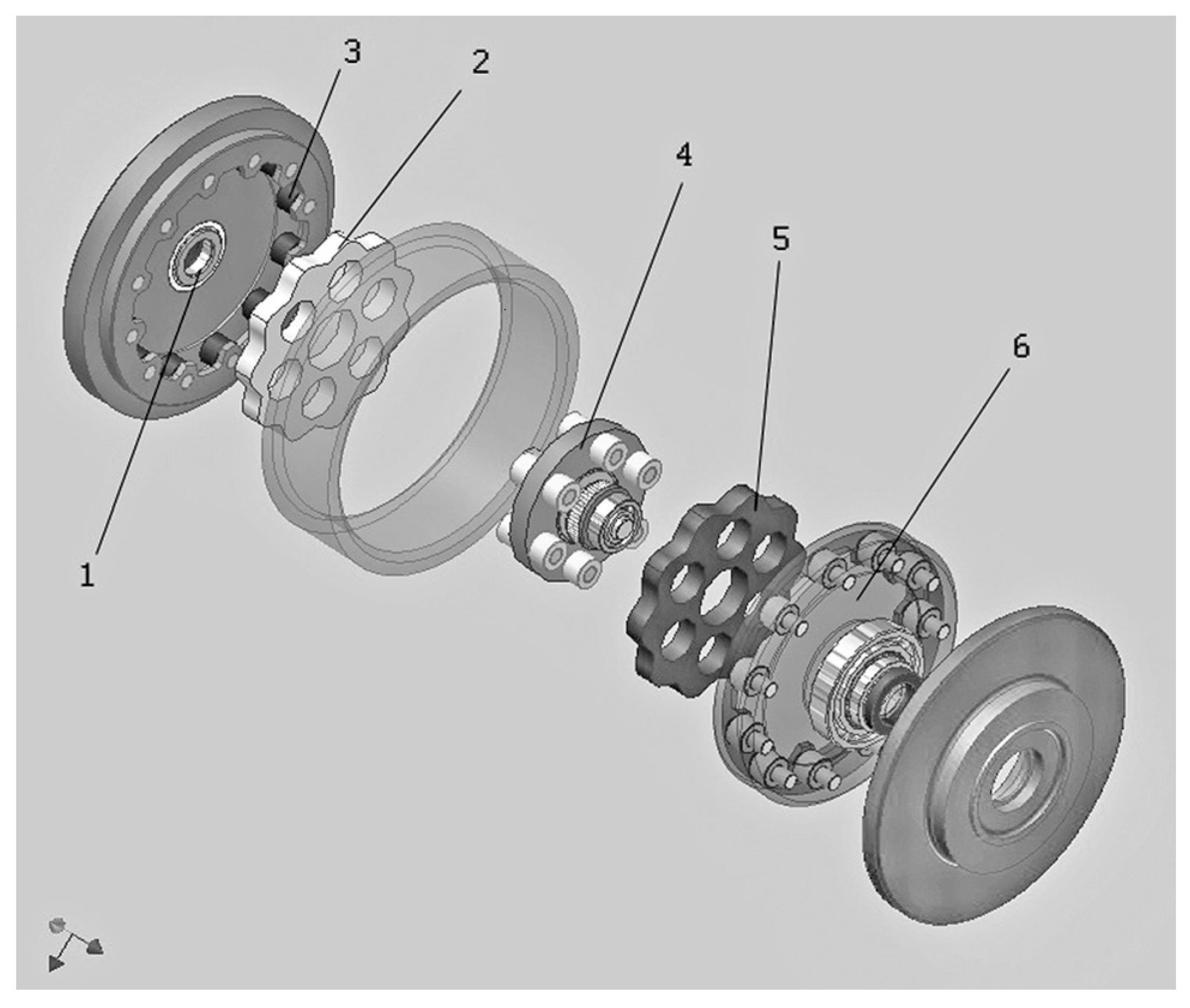
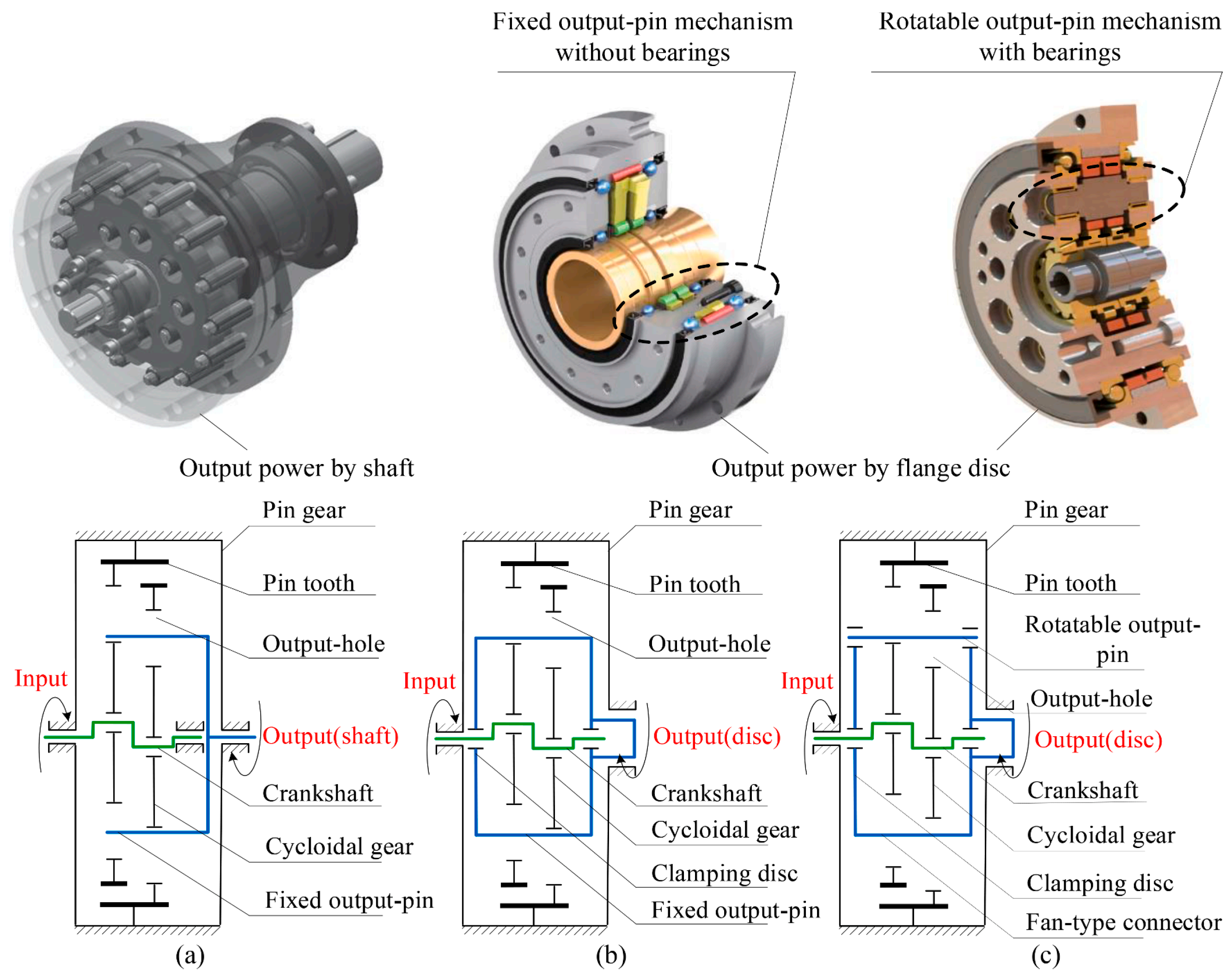
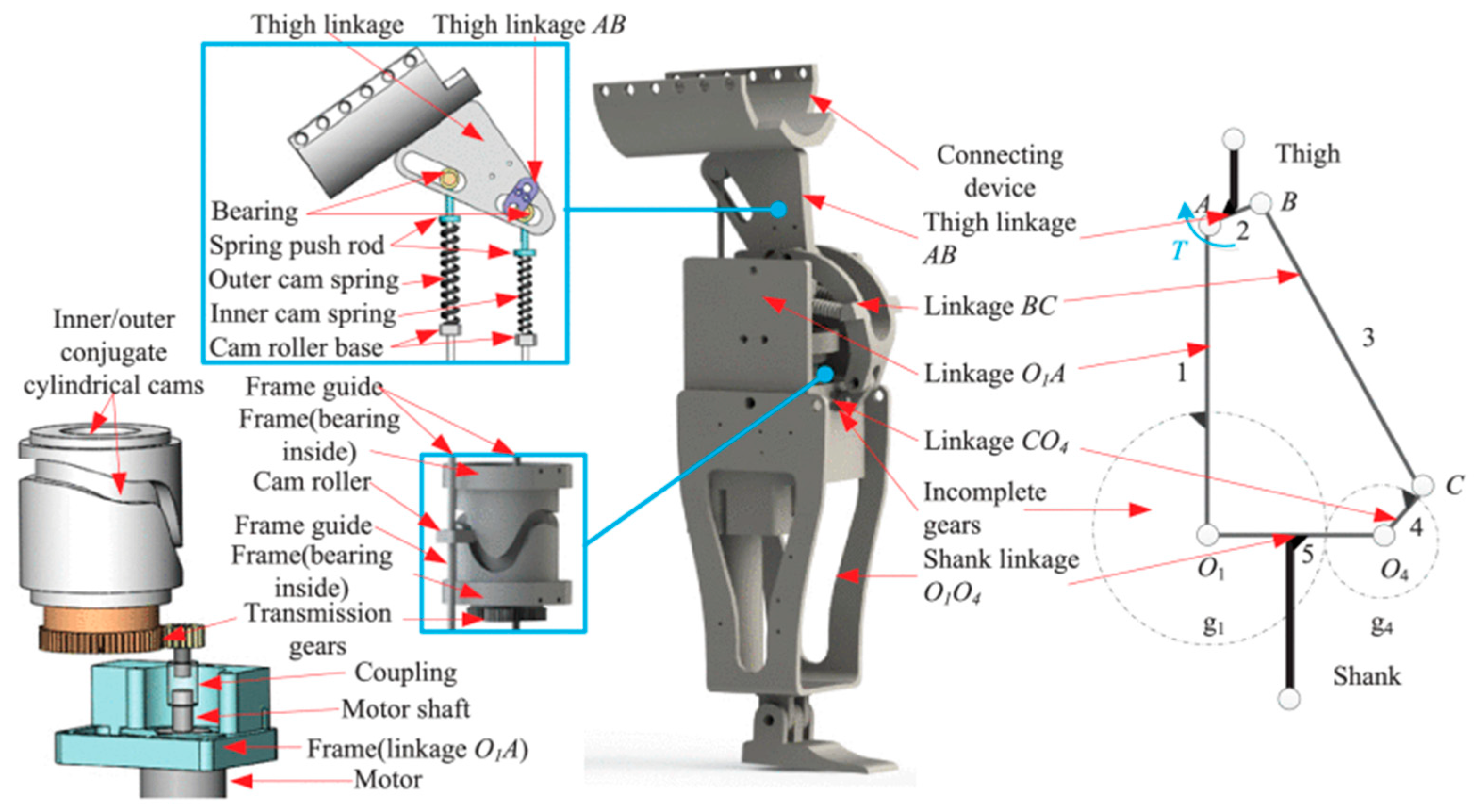
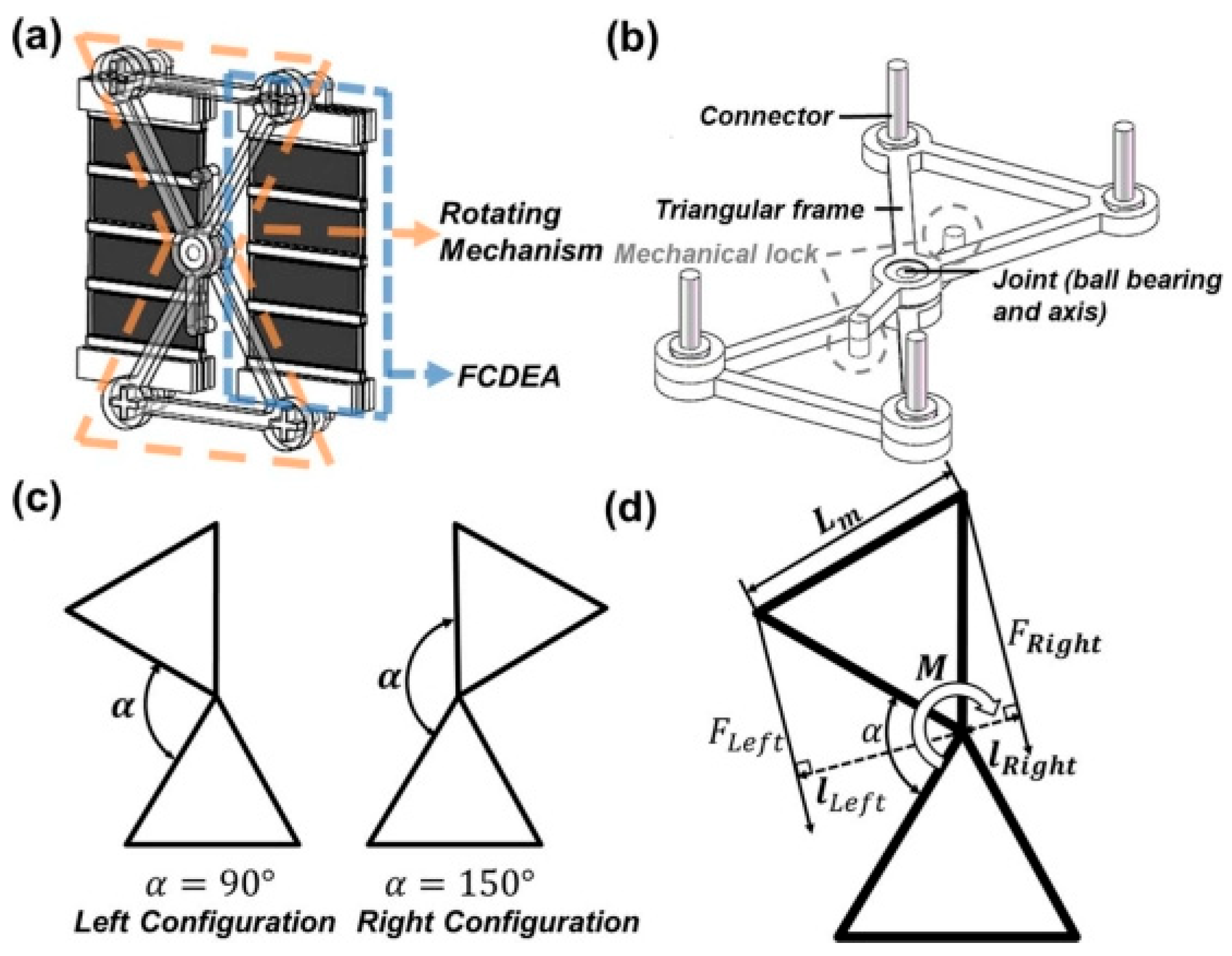

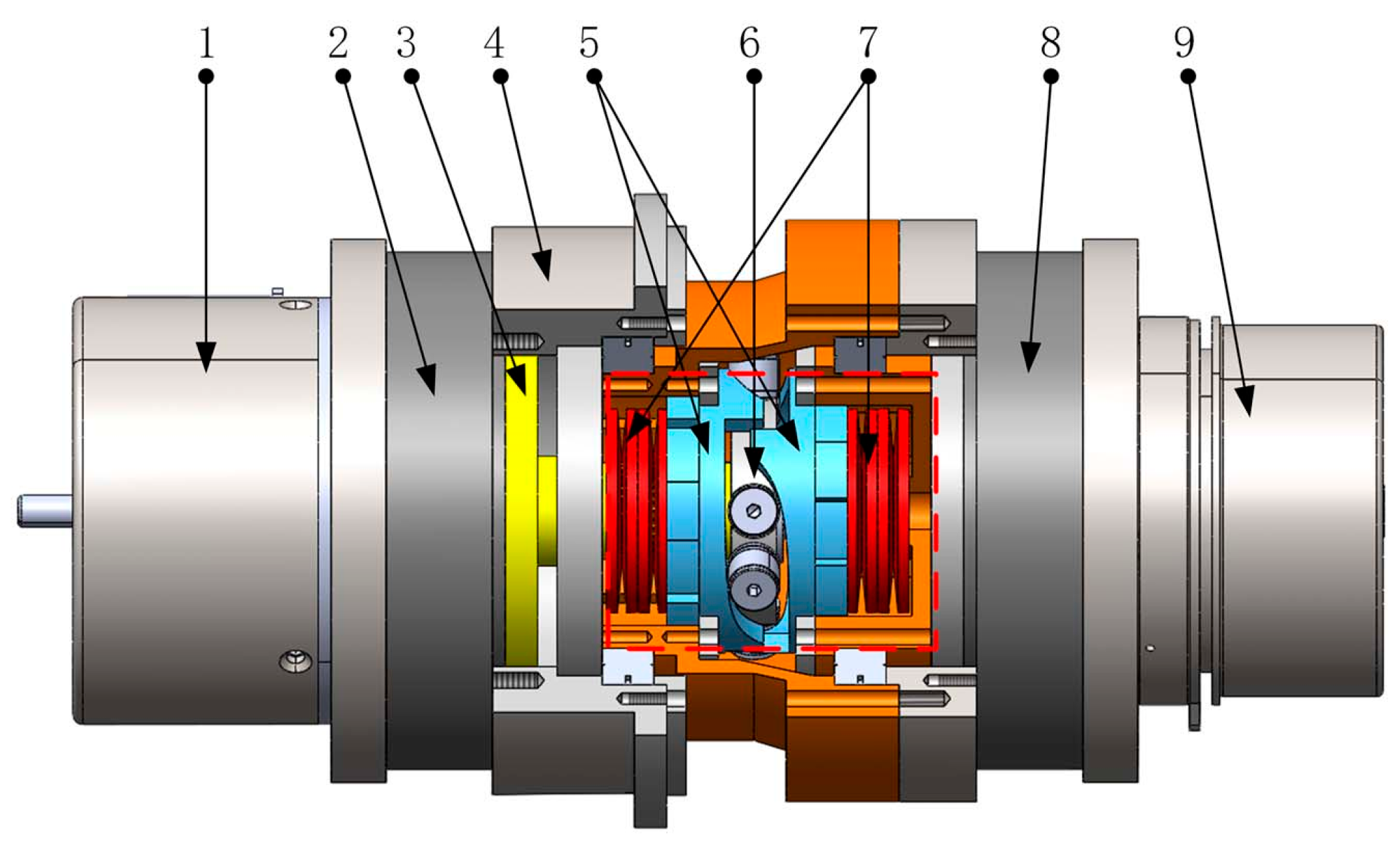
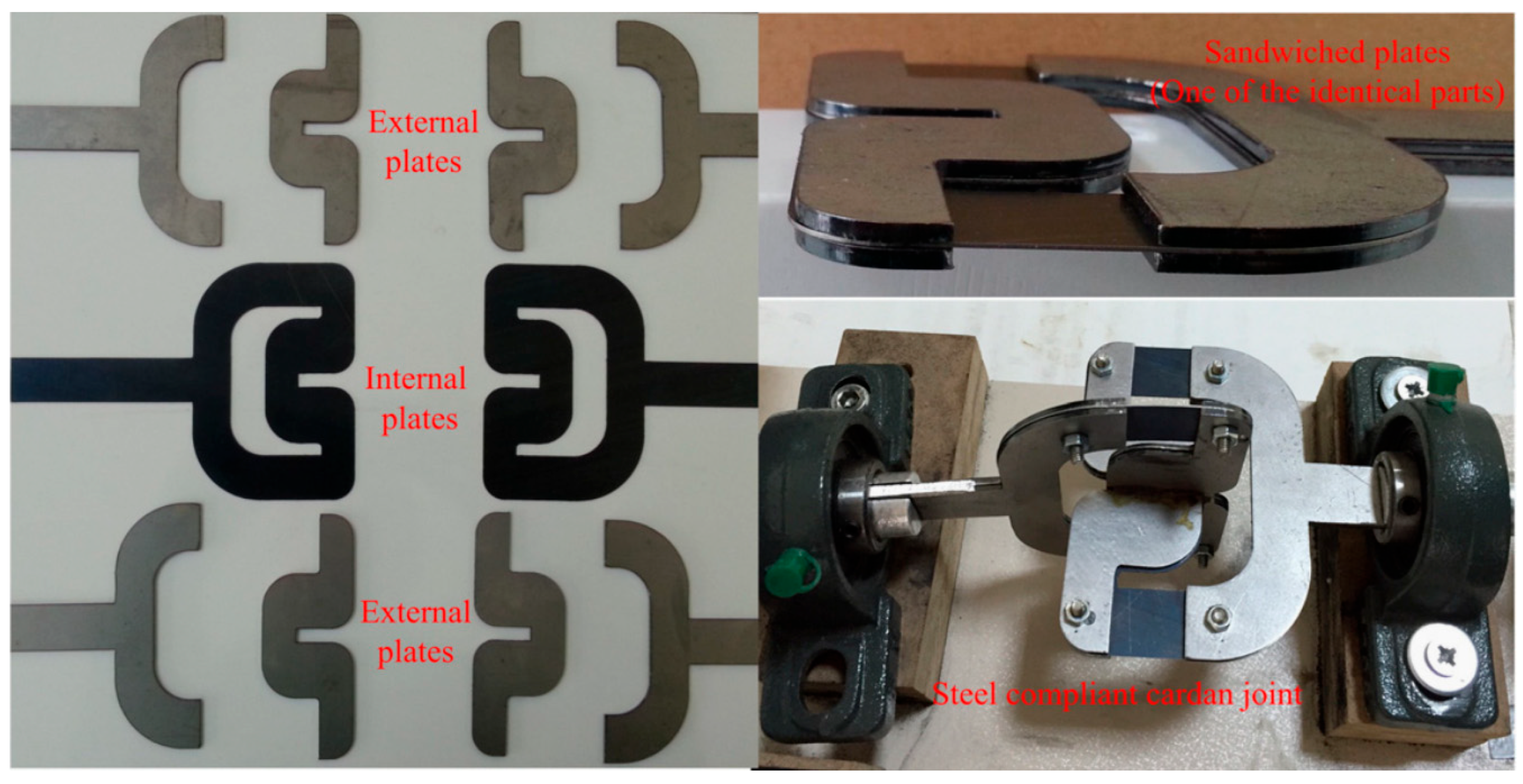


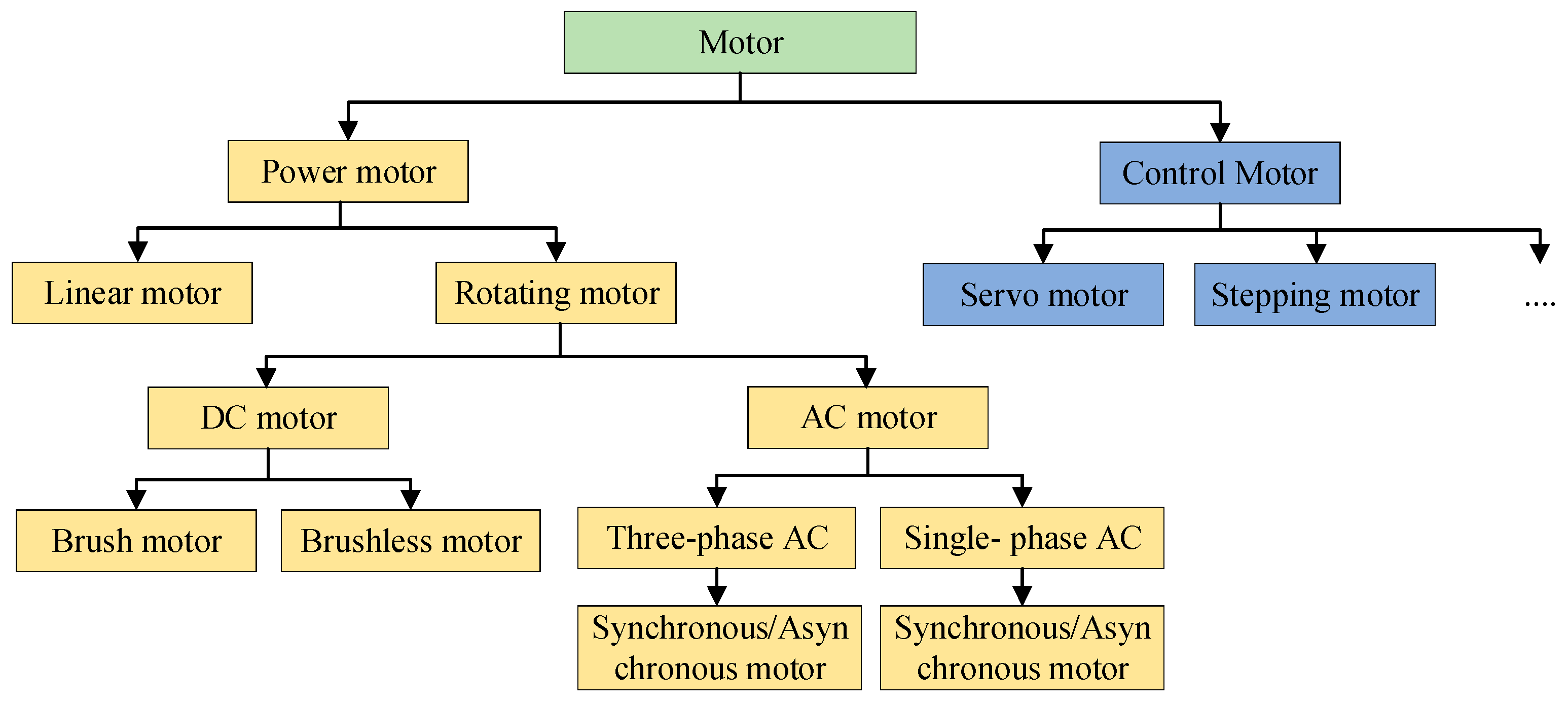

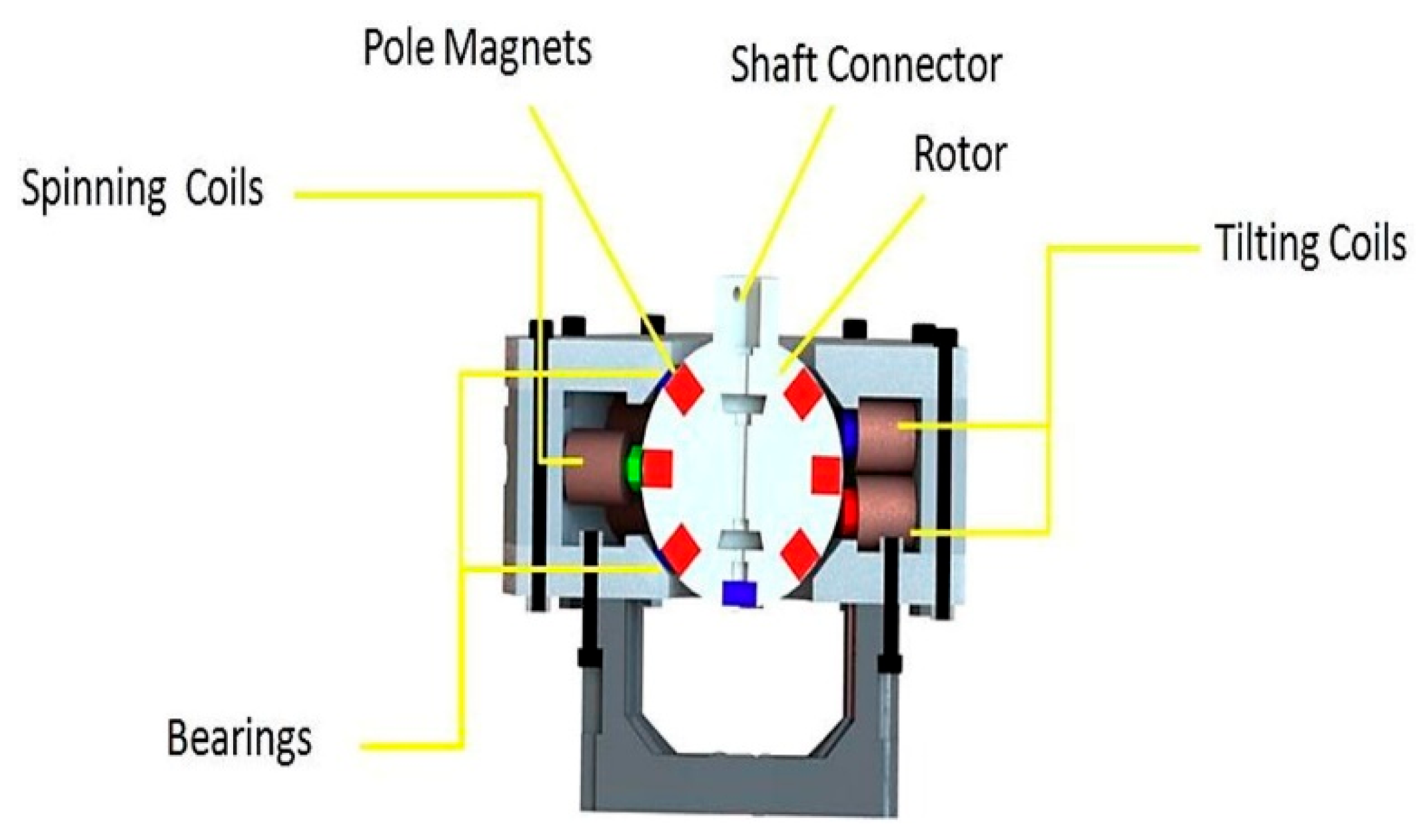
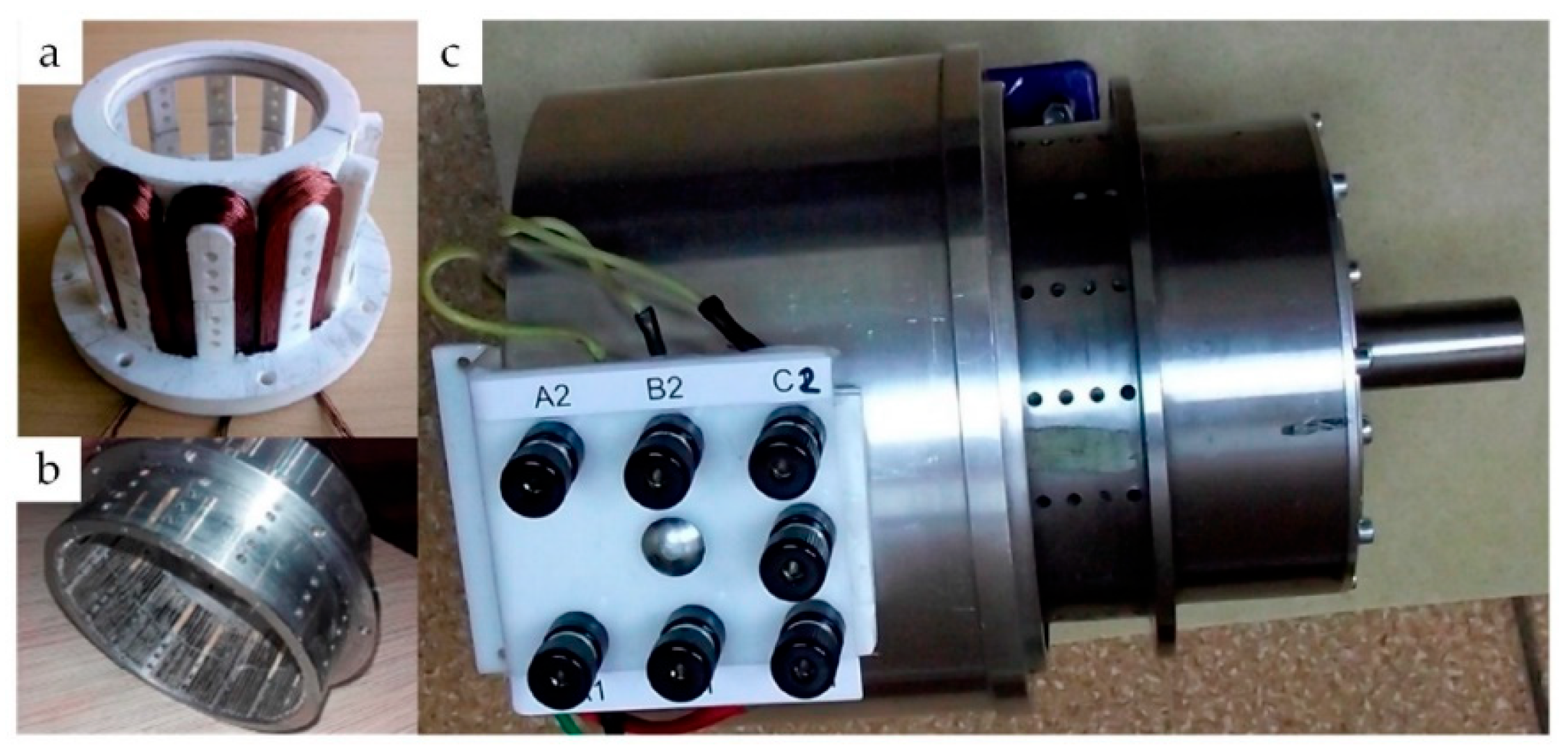
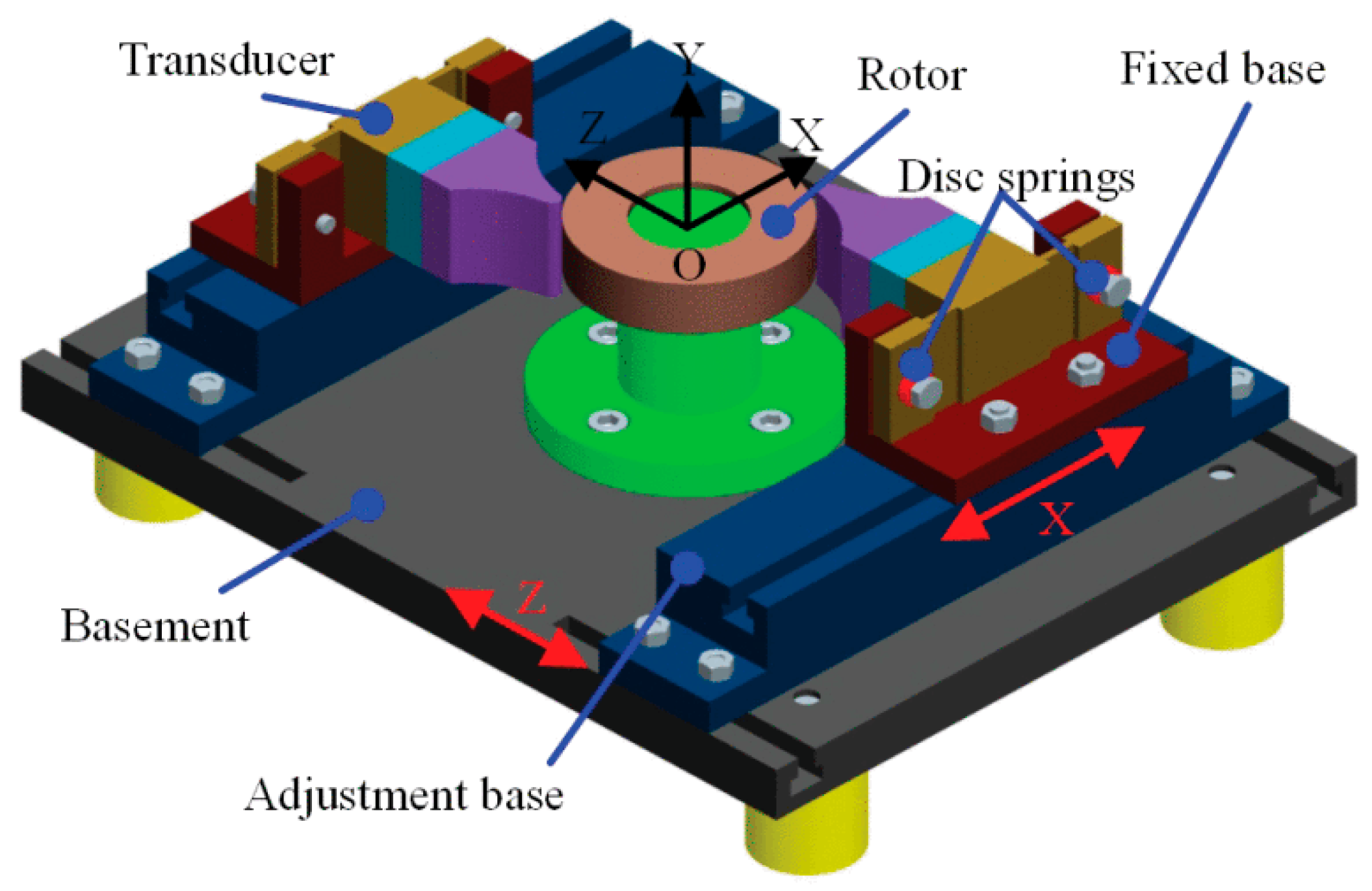
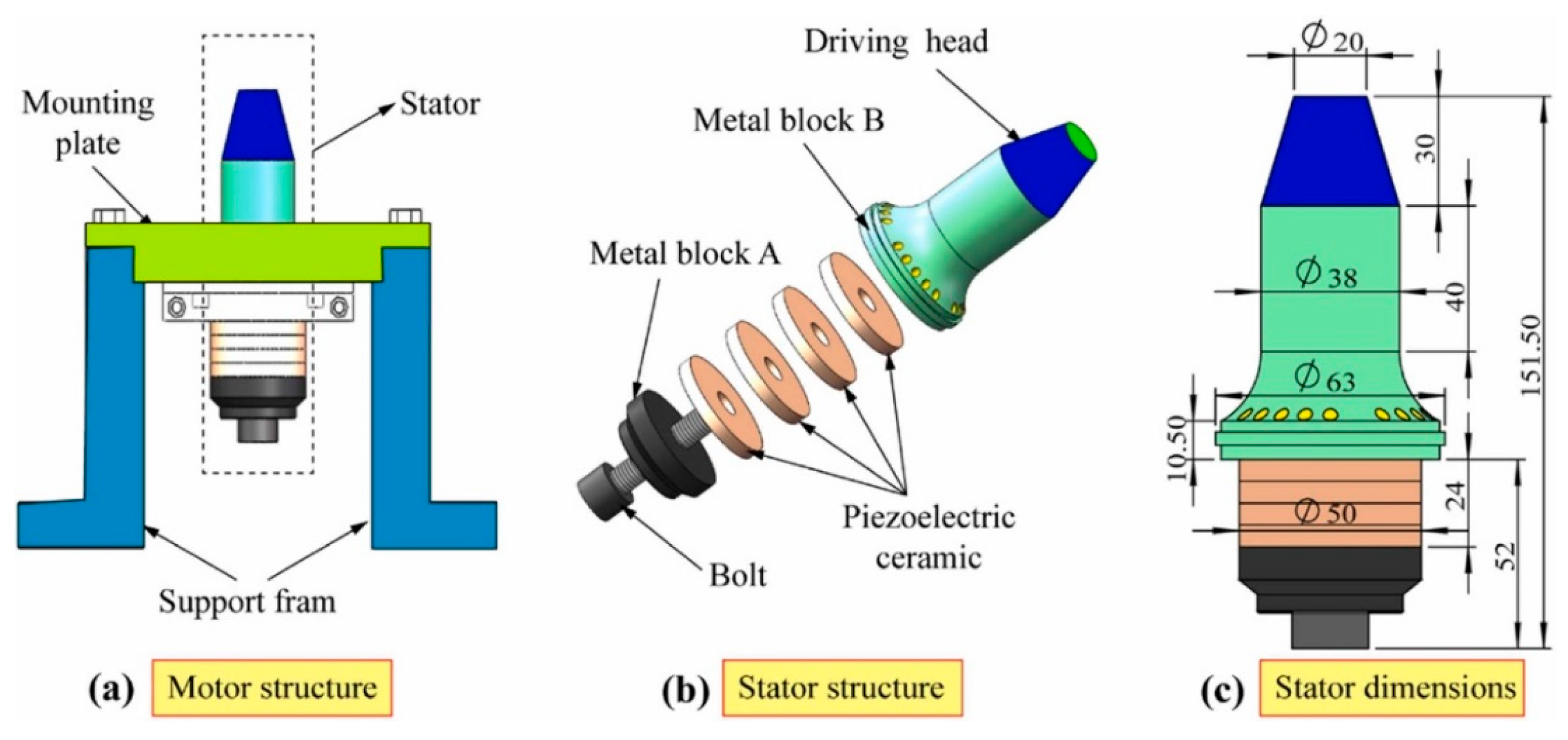

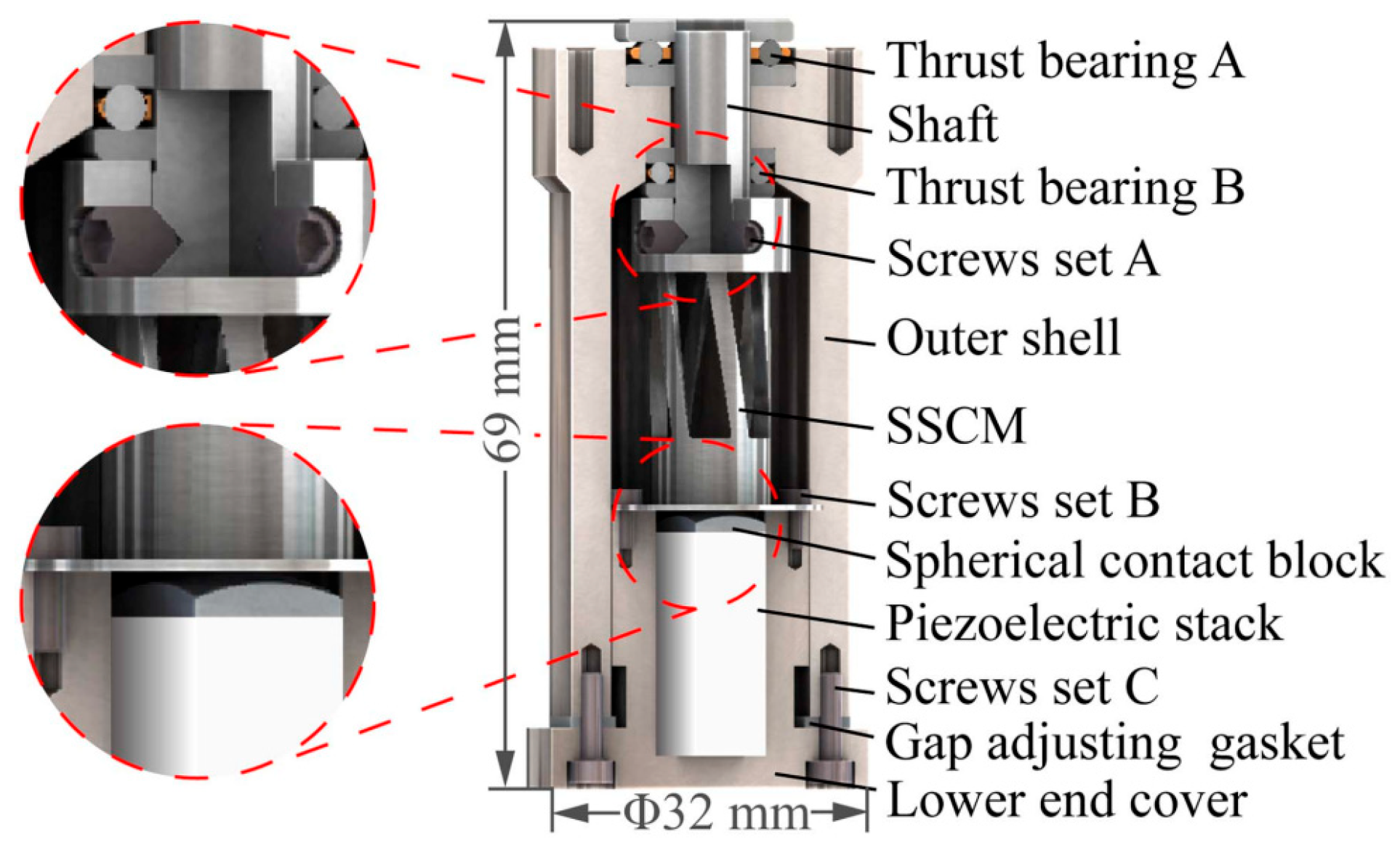

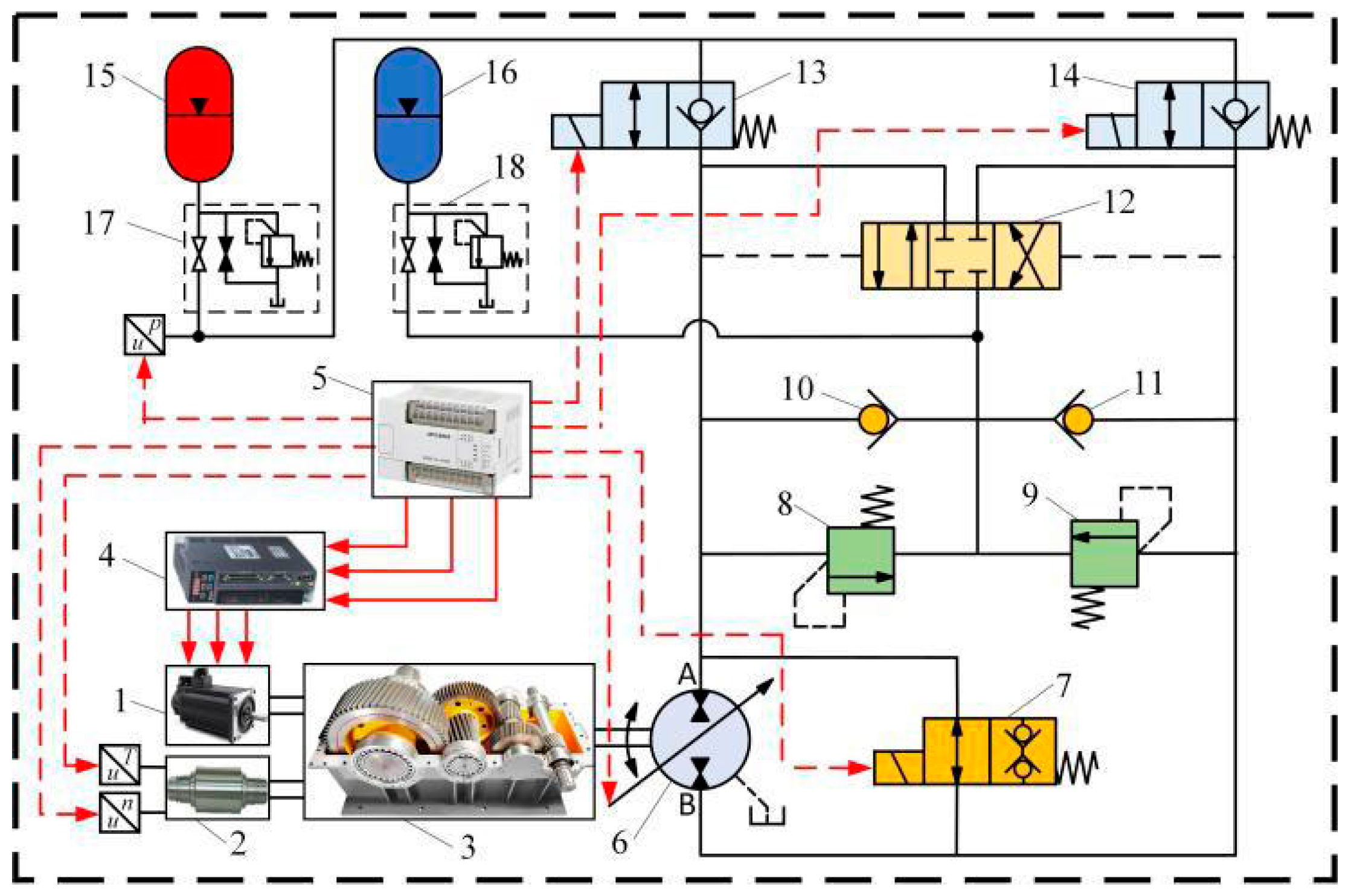

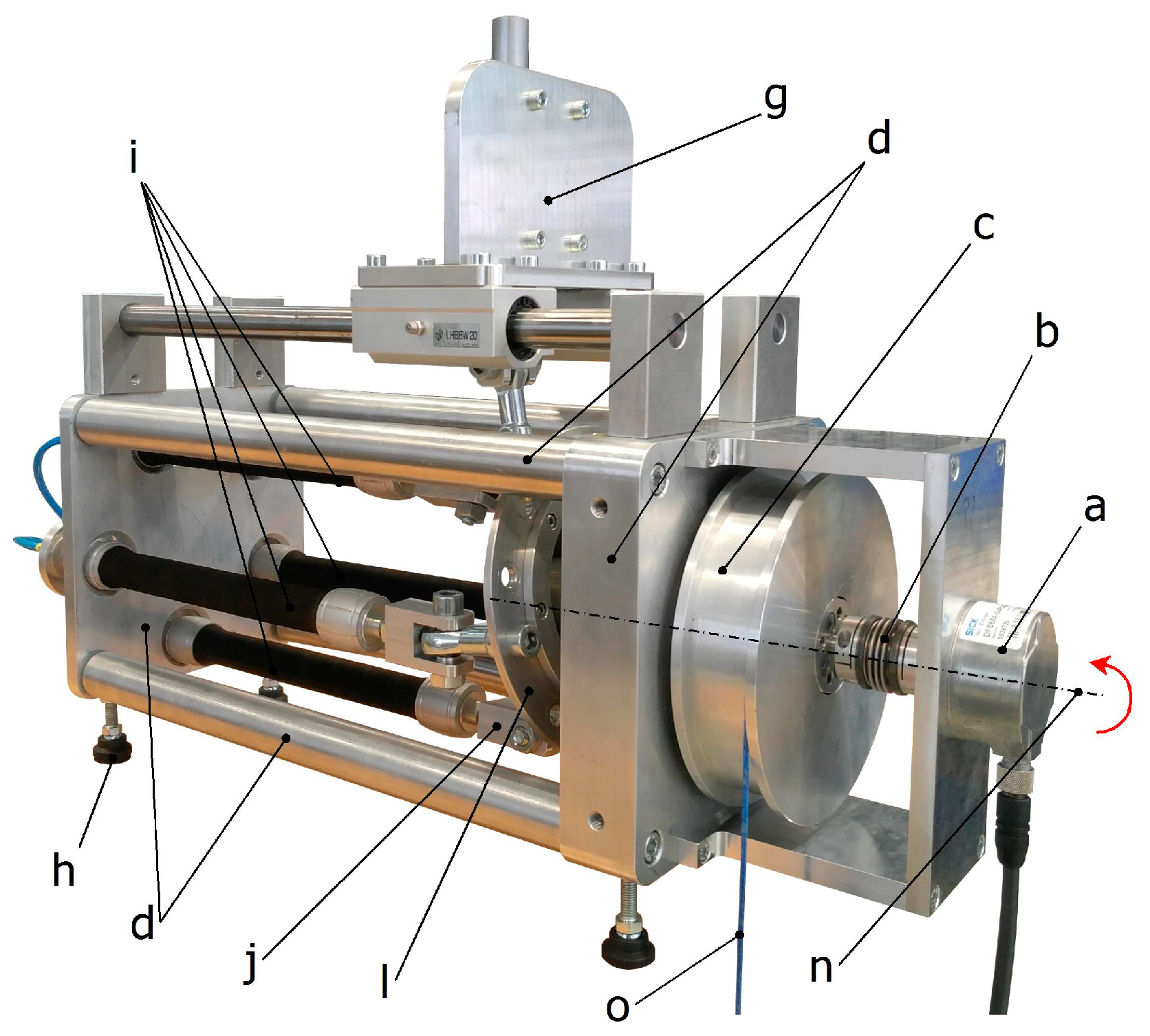

| Types | Advantages | Disadvantages | Applications |
|---|---|---|---|
| Spur gear [28,29,30] | High transmission efficiency, simple structure, and low tooth surface sliding. | High noise level, significant vibration under high load | Machine tool power system, multi-stage transmission device |
| HCR spur gear [32] | High load-bearing capacity, low vibration, and noise | Need to adjust gear parameters (displacement coefficient) | Industrial machinery, heavy-duty transmission systems |
| Helical gear [33,34,35] | Uniform load distribution, long lifespan, smooth transmission | Generate axial force, requiring additional bearing support | Reducer, General Industrial Equipment |
| Face gear [36,37] | No/low axial force, variable transmission ratio | An asymmetric tooth surface may cause vibration | Robot joints, non-orthogonal axis transmission system |
| Worm gear [38,39,40,41,42,43,44,45,46] | High deceleration ratio, low noise, high stability, auto-lock | High sliding friction, low efficiency, and lubrication required | Elevators, car steering systems, and heavy machinery |
| Straight bevel gear [47] | Reliable and straightforward, noncircular spur bevel gears can achieve special functions. | High speed noise is loud and requires axial fixation | Low speed light-load transmission |
| Hypoid gear [49,50] | The chassis height can be flexibly adjusted, with a high contact rate. | Large sliding ratio, easy to wear, requires lubrication | Automotive drive systems, high offset transmission |
| Non- circular gear [51,52,53] | Non-uniform variable speed, high transmission accuracy, compact structure, fast dynamic response | Complex processing and high cost, uneven stress on the tooth surface, prone to local wear | Printing machines, textile machinery, variable transmission bicycles |
| Double cycloidal gear [54] | Strong impact resistance and minimal tooth surface deformation, smooth transmission, and low noise | The dynamic response needs to be optimised; there may be a delay in the initial meshing. | Car seat belt tensioner, high dynamic load machinery |
| Types | Advantages | Disadvantages | Applications |
|---|---|---|---|
| Spherical gear [55,56] | Multi-degree-of-freedom, lightweight structure | Low output torque; efficiency decreases with increasing shaft angle | Robot flexible joints, drone gimbal, and medical minimally invasive surgical equipment |
| Linear gear [57,58] | Small size, suitable for micro machinery, wide speed ratio range, zero slip design | High load performance to be verified | High temperature/vacuum environment transmission, micro-robots, lightweight equipment |
| No relative sliding gear [59] | Pure rolling engagement, low friction, low contact stress, and long lifespan | The manufacturing accuracy requirements, as well as the installation error sensitivity, are incredibly high. | High load precision transmission |
| Types | Advantages | Disadvantages | Applications |
|---|---|---|---|
| Single-layer permanent magnet coaxial magnetic gear [61] | Noncontact, low wear/noise Low magnetic leakage, high magnetic efficiency High torque (1.73 times that of traditional gears) | Low temperature cooling is required (77 K) High cost (HTS/cooling) System complexity | High precision equipment/medical Low noise industrial environment |
| Improved magnetic gear [62] | High air gap magnetic density Lightweight, high torque density Simple structure, efficient coupling | Traditional permanent magnet with a low torque upper limit The modulation loop is complex and difficult to manufacture | Electric vehicles, wind power, etc Lightweight industrial transmission |
| Axial superconducting magnetic gear [64] | High torque density Noncontact, long lifespan Superconducting low temperature stability | Need superconducting state (<77 K) High cooling cost System complexity | Extreme environment, Ultra high torque |
| 3D-printed conical magnetic gear [65] | Small size, high torque Assembly simplicity | 3D printing adhesive reduces magnetic flux density | Robot joints, servo motors, and green manufacturing scenarios |
| Types | Advantages | Disadvantages | Applications |
|---|---|---|---|
| Traditional V-belt drive [8,66,67,68] | Vibration absorption, high transmission ratio, overload protection | Low reliability, short lifespan | Automobiles, ship engines, industrial robots, etc. |
| V-belt drive (TVB system) [69] | Real-time monitoring and fault diagnosis, high reliability, and long lifespan | Affected by a humid or high temperature environment | Conveyor belts and small mechanical transmissions that require long term monitoring |
| Synchronous belt drive (traditional noncircular) [70] | Specific non-uniform motion or velocity variation | The belt is loose, and the transmission stability is poor | Machinery requiring a non-uniform transmission |
| Synchronous belt drive (new nonlinear) [70] | Maintain tension on the belt. It has high stability and is suitable for environments with poor lubrication. | Extra noncircular tensioning wheels are required, with a complex structure. | Machinery with precise speed changes for long-distance transmission |
| 3D Printing Synchronous Belt [71] | Direct molding without molds, a high degree of design freedom, support for rapid customisation, and low cost. | Poor durability, low load capacity, and limited material mechanical properties are also factors. | Low power, simple transmission devices, and other non-high-intensity scenarios |
| Types | Advantages | Disadvantages | Applications |
|---|---|---|---|
| Single-row chain drive [72,73] | Simple structure, easy maintenance, long lifespan, and low cost | High noise, lubrication required, low precision, and prone to vibration at high speeds | Bicycles, motorcycles, and other low load scenarios |
| Multi-row chain transmission [74] | Strong load-bearing capacity, high material utilisation rate, and reduced mould stress concentration. | High requirements for processing equipment and precise control of parameters | Industrial machinery, long-distance or high load scenarios. |
| Silent chain drive [75] | Low noise | Torque and speed are limited | Engines, machine tools, and other high speed transmission devices |
| Bidirectional chain drive [76] | High transmission accuracy and efficiency, good durability | High installation accuracy, heavy weight, and complex structure | High speed, high precision, and lightweight transmission system |
| Composite material chain drive [77] | Lightweight, energy-saving, corrosion-resistant, noise-reducing, and vibration-reducing | The proportion of PU affects the anti-fatigue ability, resulting in a high cost | Corrosion-resistant, lightweight, and low load scenarios |
| 3D printing polymer chain links [78] | Insulation, customisable design | Low mechanical strength and poor material compatibility | Non-load-bearing scenarios or short-term low load applications |
| Types | Advantages | Disadvantages | Applications |
|---|---|---|---|
| Cam roller [81,82] | High efficiency and low energy consumption, low edge stress, and low maintenance cost | Under high load, the lifespan may be shortened due to friction | Conveyor system, low energy consumption demand |
| Conjugate cam [83,84,85] | Smooth movement, minimal vibration, high speed operation, compact structure | High cost, requiring precision machining and weight design | High speed weaving machine, high speed sorting, precision instruments |
| Cylindrical cam [86,87] | Small space occupation, long-distance movement, adjustable damping | Easy to wear and tear, high cost, poor stability | Equipment vibration suppression, long stroke, and compact requirements |
| 3D-Printed Cam [88] | Low cost, lightweight, suitable for geometric innovative design | Significant axial dimension error, rough surface, low interlayer bonding strength, and inability to withstand high loads | Low power transmission scenarios, customised motion mechanisms that require rapid iteration |
| Types | Core Innovation | Advantages | Disadvantages | Applications |
|---|---|---|---|---|
| Bending loading | The cantilever beam replaces the spring hinge | Low cost, few parts | Low torque, prone to fatigue | Light machinery, low cost equipment |
| Tension loading | Short-length flexible pivots enhance stiffness | High torque ratio | High material strength requirements | Electric tools, industrial transmission |
| Compressive loading | Rigid tooth and flexible segment separation design | Ultra-high torque ratio, low friction | Manufacturing complexity | Heavy machinery, automotive components |
| MEMS applications | Silicon-based integrated microstructure | Miniaturisation, no wear and tear | Minimal output, prone to failure | Micromechanical systems, sensors |
| Types | Core Innovation | Advantages | Disadvantages | Applications |
|---|---|---|---|---|
| Traditional ratchet mechanism | Single pawl, fixed tooth pitch | Simple structure and low cost | High noise and poor high speed performance | Low speed and low load scenarios |
| Modular ratchet mechanism | Multi-disc, multi-pawl, and elastic tooth design | High load capacity, low noise | Manufacturing is complex and costly | High speed pulse transmission, heavy machinery |
| Micro ratchet mechanism | Miniaturisation and elastic rod design | Miniaturisation and low friction | Low load capacity and easy failure | Micromechanical system |
| Types | Advantages | Disadvantages | Applications |
|---|---|---|---|
| Elastic deformation [94] | 3D printing multi-material integrated molding, no spring, compact space | Easy to fatigue, limited load capacity | Small load scenario |
| Gear optimisation [95] | Adjustable number of teeth, low noise, lightweight, low cost | PLA/ABS materials have low strength and poor durability | Low torque scenarios, such as small electromechanical equipment and automation instruments |
| Types | Advantages | Disadvantages | Applications |
|---|---|---|---|
| Crank-rocker mechanism [101,102] | Simple structure, high reliability, strong load capacity | High speed is prone to vibration and occupies ample space | Internal combustion engine, stamping press, biomimetic machinery |
| Hyperbolic handle mechanism [103,104] | Full rotation, uniform input, variable output | The speed of the driven crankshaft is unstable | Scenarios of bidirectional rotation or variable speed transmission |
| Elastic inside link [105] | High stiffness, wide range of motion, and low driving force | Dependency on the preloading design of the snail shell | Precision instruments, flexible joints |
| Double spherical 6R linkage [106] | Deformable, with multiple degrees of freedom | High design complexity and manufacturing cost | Expandable structure, biomimetic structure, robotic arm |
| Types | Advantages | Disadvantages | Applications |
|---|---|---|---|
| Coaxial indexing mechanism [109] | Compact structure, high precision, and good stability | Complex structure, low load | Packaging, printing machinery, machine tool changing system |
| Circular groove wheel drive mechanism [110] | Simple structure, high reliability, and stable movement | High instantaneous impact upon contact, low speed | Low precision, light-load, low speed scenarios |
| Eccentric spiral intermittent mechanism [111] | Compact structure, adjustable intermittent motion | The eccentric wheel is prone to wear when in contact with the turntable. | Intermittent drive for lightweight rotary table |
| Types | Advantages | Disadvantages | Applications |
|---|---|---|---|
| Planetary ball screw [114] | 3 times the load | High-cost | Stamping equipment |
| Static pressure screw [115] | High precision, up to sub-micron level | Low load High cost | Heavy-duty precision machinery |
| Slider crank ratchet mechanism [116] | The conversion efficiency of vibration recycling Machinery can reach 67.75% | There is a material fatigue issue | Train shock absorption |
| Magnetic guide screw [117] | zero friction | Difficult to Maintain | Wave Power Generation |
| Coupling rack mechanism [118] | Flywheel stabilisation, the mechanical conversion Efficiency can reach 64.31% | Difficulty in maintenance and limited power | Track vibration |
| Screw gear ratchet combination mechanism [119] | High-frequency conversion, high energy harvesting efficiency | Easy to wear and tear | Energy recovery in densely populated areas |
| Types | Advantages | Disadvantages | Applications |
|---|---|---|---|
| Series-parallel hybrid finger mechanism [120] | High response speed, balanced stiffness and flexibility, and adaptability to various grasping modes | Complex structure, limited material properties | Robot hands that require quick response and flexible grasping |
| Hydraulic spherical motion mechanism [121] | Compact structure, high stiffness, 2-degree-of-freedom spherical motion | High energy consumption | In robot joints and spherical motion scenes |
| Stewart Platform Hook Joint [122] | They adapt to complex movements, have a simple structure, and are easy to integrate | Limited carrying capacity, long term wear and tear | High precision positioning platforms |
| Three degrees of freedom tensioned integral structure [123] | Combining rigidity and flexibility with strong impact resistance | Control complexity: Cable tension balance requires precise adjustment | Lightweight robotic arms |
| Offset slider crank connecting rod mechanism [124] | Multi-joint single-drive synchronous drive, lightweight structure | Low load capacity, dependent on linear actuators, limited travel | Functional pseudo-bionic robot fingers |
| New RCM mechanism [125] | Lightweight, shock-absorbing, and highly coordinated in motion | Restricted range of motion | Knee exoskeleton, human-machine motion axis alignment scene |
| Noncircular gear five-bar Mechanism [126] | Simplify the structure; have a high degree of freedom constraint and strong motion controllability | Complex processing and gear meshing accuracy affect transmission efficiency | Biomimetic joint with variable transmission ratio characteristics |
| Types | Advantages | Disadvantages | Applications |
|---|---|---|---|
| Double four-bar rotary transmission mechanism [127] | The structure is simple, the space is compact, the cost is low, and the output disk rotates continuously | Limited motion accuracy, speed, and rotation angle | Automatic tool changing systems for machining centers and tapping machines |
| Cam five-link mechanism [128] | High reliability, compact structure, high precision, and stability | The design is complex, the cost is high, and the ability to dynamically adjust is limited | High-dynamic industrial scenarios such as packaging machinery and medical production lines |
| Multi-link crank slider rotating mechanism [129] | High carrying capacity, high precision, and flexibility | Complex structure, low speed, and accumulated errors | Gyroscope, low speed, high precision, redundant degree of freedom scene |
| Types | Advantages | Disadvantages | Applications |
|---|---|---|---|
| Cam connecting rod and planetary gear combination mechanism [130,131,132] | High stability, compact structure, high speed operation, and reliability | The cost is high, and the connecting rod requires high manufacturing accuracy | High speed, low-damage vegetable transplanter and automated agricultural equipment for seedling extraction |
| Planetary gear and crank rocker propeller mechanism [133] | Real-time pitch control simplifies the transmission control of the system | Easy to wear and tear, poor vibration reduction | Ship propulsion, uncrewed aerial vehicles |
| Universal RV reducer [134] | High transmission ratio and strong ability to withstand torque, high precision, and low recoil | High cost and difficult maintenance | Industrial robot joints and other high transmission-ratio, high precision-demand scenarios |
| New two-stage cycloidal reducer [135] | Small size, phase difference offsets centrifugal vibration, and single-tooth stress safety | Complex design and assembly, low efficiency | Compact and high transmission ratio scenarios, such as robot joints |
| New single-stage precision cycloidal reducer [136] | High transmission efficiency, strong torsional stiffness, and simplified structure | High cost: the manufacturing process requires high standards | High efficiency and low friction loss scenarios, such as precision instruments |
| Types | Advantages | Disadvantages | Applications |
|---|---|---|---|
| Based on the conjugate cylindrical cam [137] | Reduce motor inertia energy loss, compact structure | Depending on the cam design, high cost, and limited adaptability | Artificial knee joint, a low power wearable assistive device |
| Bistable rotating mechanism [138] | Low energy consumption, repeatability, high precision, and large load capacity | Relying on mechanical locks, the range of action is limited | Biomimetic robots or soft robots, medical, and surgical instruments |
| Twisted spring connected nonlinear stiffness actuator [139] | Wide adaptability, lightweight, improved safety through biomechanical properties, and low cost | Complex structure, relying on cam profile optimisation, limited real-time performance | Human-robot collaborative robots, highly dynamic environment walking robots |
| Disc spring variable stiffness actuator [140] | Flexible configuration of equivalent stiffness, high torque density, fast and wide range stiffness adjustment | Multiple motors need to be coordinated for control, and fatigue of the disc spring may affect long term reliability | Humanoid/quadruped robots, exoskeleton/rehabilitation robots, robot arm joint |
| Types | Advantages | Disadvantages | Applications |
|---|---|---|---|
| Piezoelectric tube spiral electrode type | Ultra compact, high angular velocity, silicon carbide-coated steel shaft reduces wear rate. | High driving voltage (high dielectric loss of PZT-5A), poor low temperature performance | Micro-optical focusing system |
| Double piezoelectric tube inertia type | Large step angle (reduced adhesion of alumina ceramic shaft), fast response (0.1 ms), low threshold voltage (less than 50 V) | Large volume (up 120% compared to traditional design), weak axial load (<10 N, limited preload force of beryllium bronze spring) | Precision rotating platform |
| Dual-mode incentive type | Inhibit rollback (stable friction with silicon carbide coating), high speed (elastic amplification strain of titanium alloy hinge 1.8 times), high temperature resistance (150 °C) | Complex structure (requiring dual PZT-4 stack), humidity sensitive (fluctuation of silicon carbide friction coefficient greater than 20% when greater than 80%) | Space agency pointing control |
| Umbrella-shaped flexible hinge type | Anti-impact (hard alloy driven foot), low power consumption (less than 5 W, beryllium bronze hinge with low hysteresis loss), bidirectional consistency greater than 95% | Low rotational speed (0.85 rad/s, insufficient damping of aluminium alloy substrate), demanding machining accuracy (±1 μm) | Field robot joints |
| Bionic snake-like rotating type | High torque (12 mN · m), smooth motion (microstructured copper alloy oil storage reduces viscosity and slip mutation), radiation resistance | Extremely high cost, high humidity failure (copper alloy texture blockage above 80% humidity) | Biomimetic robots |
| Types | Advantages | Disadvantages | Applications |
|---|---|---|---|
| Steel flexible universal joint [142] | Balancing elasticity and strength, no need for lubrication, lightweight and compact, long lifespan | Elastic deformation may lead to a decrease in transmission accuracy | Compact transmission, high reliability joint without lubrication |
| Anti-buckling flexible universal joint [143] | High stability, high precision of dual-axis rotation, no need for lubrication | Complex structure, high cost, and limited load-bearing capacity by tension plates | Optical positioning platform/surgical robot joint, continuum robot flexible arm segment |
| Fully compliant universal joint [144] | A single-piece structure does not require assembly, has an approximate constant transmission speed, and is flexible. | High torque/large angle can easily cause stress concentration, and the polypropylene material is weak | Small robot/drone joints, lightweight transmission of medical equipment, and noise-sensitive scenes |
| Types | Working Principle | Advantages | Disadvantages | Applications |
|---|---|---|---|---|
| Synchronous motor [148,149,150] | The rotor uses superconducting coils or blocks to generate a direct current magnetic field, while the stator is made of conventional conductors or superconducting materials | High efficiency, lightweight, high magnetic field, low synchronous reactance | The cooling system is complex, with communication losses, requiring rotational cooling coupling | Wind turbines, ship propulsion, aerospace, industrial motors |
| Induction motor [151,152] | The rotor adopts superconducting squirrel cage bars, and the stator is a conventional conductor. The superconducting material loses its superconducting state during startup and returns to its superconducting state during operation | High starting torque, low slip operation, high efficiency | In synchronous mode, the rotor magnetic field is limited, and precise cooling control is required | Electric vehicles, industrial motors, and low temperature fluid pumps |
| Claw pole motor [153,154,155] | The stator superconducting coil guides the magnetic field through a claw pole structure, and the rotor is made of conventional materials | Compact structure, non-rotating superconducting components, suitable for high speed applications | The magnetic field distribution is uneven, and high mechanical strength is required for the claw pole | Aircraft generators, high power density motors |
| Unipolar motor [156,157,158] | The DC magnetic field is generated by superconducting coils, and the rotor is a conductive disk or offset magnetic pole structure | High torque, no gear requirements, suitable for low speed and high torque scenarios | Sliding contact is prone to wear and requires a liquid metal current collector | Ship propulsion, flywheel energy storage, and aerospace high power generators |
| Magnetic flux modulation motor [159,160] | Superconducting blocks or stacked tapes shield or concentrate magnetic fields, and the stator is a conventional conductor | High power density, low magnetic leakage, and adaptability to complex shapes | Pulse magnetic field pre-magnetisation is required, and demagnetisation may occur during dynamic operation | Aerospace and high power-density propulsion systems |
| Hysteresis motor [161,162] | Superconducting bulk rotors generate hysteresis effects in alternating magnetic fields to drive rotation | Simple structure, no friction loss, suitable for high speed applications | Hysteresis loss cannot be ignored, resulting in low output power | Micro-motors, specialised equipment for low temperature environments |
| Fully superconducting motor [163,164,165] | The stator and rotor are superconducting materials (wires or blocks) | Theoretical efficiency is close to 100%, with a small size and extremely light-weight | High communication loss, complex cooling system, and extremely high cost | Future aviation propulsion and ultra-efficient power generation systems |
| Types | Advantages | Disadvantages | Applications |
|---|---|---|---|
| Longitudinal vibration mode rotating ultrasonic motor [173] | Simple control, adjustable output characteristics, stable torque, and no magnetic interference | High voltage power dependence, high power consumption, low output torque and speed | Optical instrument focusing system, micro robot joint drive, low temperature/vacuum environment |
| Non-contact ultrasonic motor [174] | No contact friction, long lifespan, no wear and heat accumulation, fast operating speed | Air film stiffness limits load-bearing capacity | Medical devices that require silent operation in high precision cleaning scenarios, such as semiconductor manufacturing |
| Gear mesh resonant piezoelectric motor [175] | High efficiency, high power output, flexible speed regulation, and resonance design improve energy efficiency | Risk of brittle fracture in piezoelectric ceramics | Scanning probe microscope for nano-positioning, joint drive for surgical robots, high torque velocimeter in precision manufacturing |
| Space Spiral Flexible Mechanism (SSCM) RPA [176] | High precision and fast response, high motion stability, low cost, noaxis offset | Polarisation attenuation of the piezoelectric stack | Biological microscope, nano-positioning platform, and other micro-nano operation scenarios, dynamic vibration compensation system |
| Types | Advantages | Disadvantages | Applications |
|---|---|---|---|
| Traditional hydraulic drive [177] | High load, precise movement, smooth operation, seamless transmission, and rapid response | Potential leakage risk, high maintenance cost, and loud noise | Scenarios that require high load and precise control |
| Electrohydraulic servo drive [178] | Small size, lightweight, high power density, low noise, good dispersion performance, high reliability | Insufficient oil absorption during high speed operation leads to reduced efficiency and vibration | Aircraft hydraulic systems require equipment in environments with sustained high-pressure or low noise levels |
| Electrohydraulic servo drive [179] | Energy regeneration, reducing the peak power and energy consumption of the motor, and cooling down | The system requires precise control, additional energy storage devices, and pipelines | High-inertia, frequent start-stop scenarios, green, and low-carbon industrial applications |
| Types | Advantages | Disadvantages | Applications |
|---|---|---|---|
| Traditional pneumatic drive [180,181,182,183] | Environmental protection, strong adaptability, fast response, and easy to automatically control | Low torque, accuracy affected by pressure fluctuations and elastic components, high noise | Industrial robots and automation scenarios in harsh environments |
| Multi-mode pneumatic motor [184] | Supports continuous rotation and step mode switching, with good output performance and low cost | Accuracy is affected by the elastic deformation and inertia of silicone tubing | Light load scenarios of pipeline robots, modular robotic arms, and fast mode switching |
| Pneumatic artificial muscles [185] | Flexibility and high precision, no stick-slip phenomenon, high precision positioning | The maximum pressure limit restricts the torque output | Flexible robot joints, precision assembly, and medical equipment |
| Types | Advantages | Disadvantages | Applications |
|---|---|---|---|
| Motor drive | High precision, high response speed, and high energy conversion efficiency | The load capacity is limited, and the volume and cost increase when high power demand is required | Precision instruments, automation equipment, and cam mechanisms require high dynamic response |
| Piezoelectric drive | Nonmagnetic, noise-free, compact structure, and extremely high resolution | Low output force, requiring high voltage drive, long term use may require maintenance due to friction and wear | Micro-nano positioning systems, cam fine-tuning in optical devices, vacuum, or low temperature environments |
| Hydraulic drive | High load capacity, seamless transmission, fast dynamic response, and strong impact resistance | The system is complex, with a risk of leakage, high maintenance costs, and loud noise | Heavy machinery, aerospace high load cam mechanisms, and high-inertia scenarios require frequent start-stop operations |
| Electro-hydraulic servo drive | High power density, low noise, and high integration | Insufficient oil absorption at high speeds leads to decreased efficiency, which requires precise control | Cam control in aircraft hydraulic systems and high precision industrial equipment |
| Pneumatic drive | Environmentally friendly, adaptable to harsh environments, fast response, and easy maintenance | Low output torque, accuracy affected by air pressure fluctuations, and high noise | Industrial robots, lightweight cam mechanisms in automated production lines, and flammable and explosive environments |
| Multi-mode pneumatic motor | Low cost, flexible mode switching, and simple structure | The deformation of elastic components affects accuracy, and the lifespan of silicone tubing is limited for high-pressure applications | Pipeline robots, modular robotic arms, and scenarios that require quick switching of action modes |
| Pneumatic artificial muscle | High flexibility, no stick-slip phenomenon, high precision positioning | Large volume, high weight, complex independent control of multiple valves, and limited torque output due to material pressure | Cam drives in flexible robot joints, precision assembly, and medical equipment |
Disclaimer/Publisher’s Note: The statements, opinions and data contained in all publications are solely those of the individual author(s) and contributor(s) and not of MDPI and/or the editor(s). MDPI and/or the editor(s) disclaim responsibility for any injury to people or property resulting from any ideas, methods, instructions or products referred to in the content. |
© 2025 by the authors. Licensee MDPI, Basel, Switzerland. This article is an open access article distributed under the terms and conditions of the Creative Commons Attribution (CC BY) license (https://creativecommons.org/licenses/by/4.0/).
Share and Cite
Luan, X.; Yu, H.; Ding, C.; Zhang, Y.; He, M.; Zhou, J.; Liu, Y. A Review of Research on Precision Rotary Motion Systems and Driving Methods. Appl. Sci. 2025, 15, 6745. https://doi.org/10.3390/app15126745
Luan X, Yu H, Ding C, Zhang Y, He M, Zhou J, Liu Y. A Review of Research on Precision Rotary Motion Systems and Driving Methods. Applied Sciences. 2025; 15(12):6745. https://doi.org/10.3390/app15126745
Chicago/Turabian StyleLuan, Xuecheng, Hanwen Yu, Chunxiao Ding, Ying Zhang, Mingxuan He, Jinglei Zhou, and Yandong Liu. 2025. "A Review of Research on Precision Rotary Motion Systems and Driving Methods" Applied Sciences 15, no. 12: 6745. https://doi.org/10.3390/app15126745
APA StyleLuan, X., Yu, H., Ding, C., Zhang, Y., He, M., Zhou, J., & Liu, Y. (2025). A Review of Research on Precision Rotary Motion Systems and Driving Methods. Applied Sciences, 15(12), 6745. https://doi.org/10.3390/app15126745







